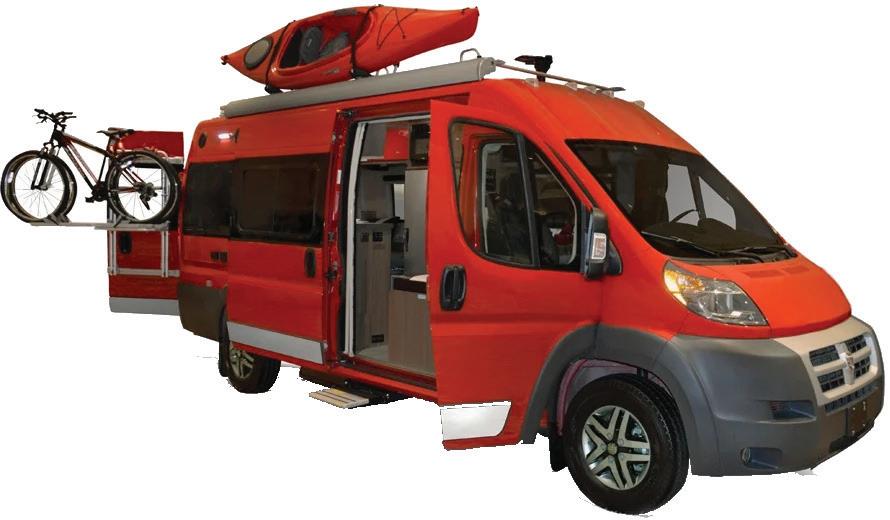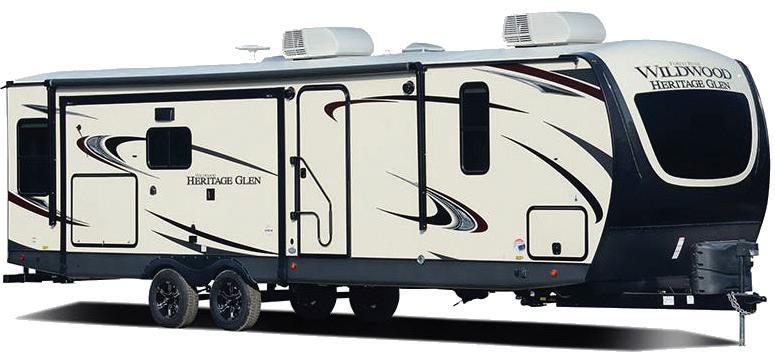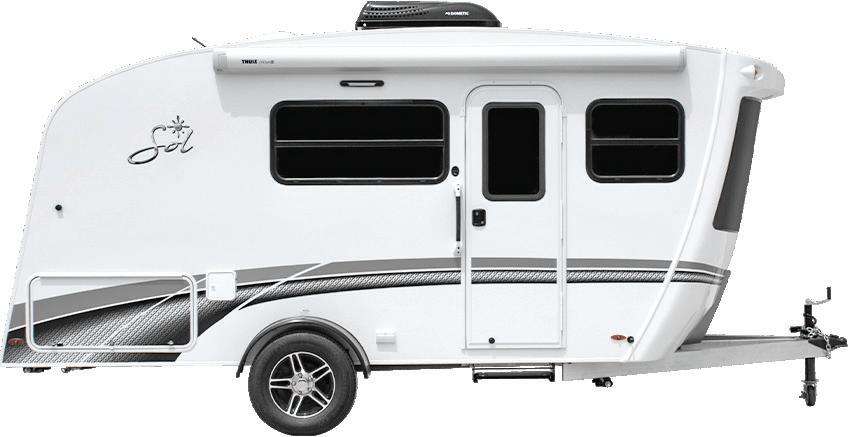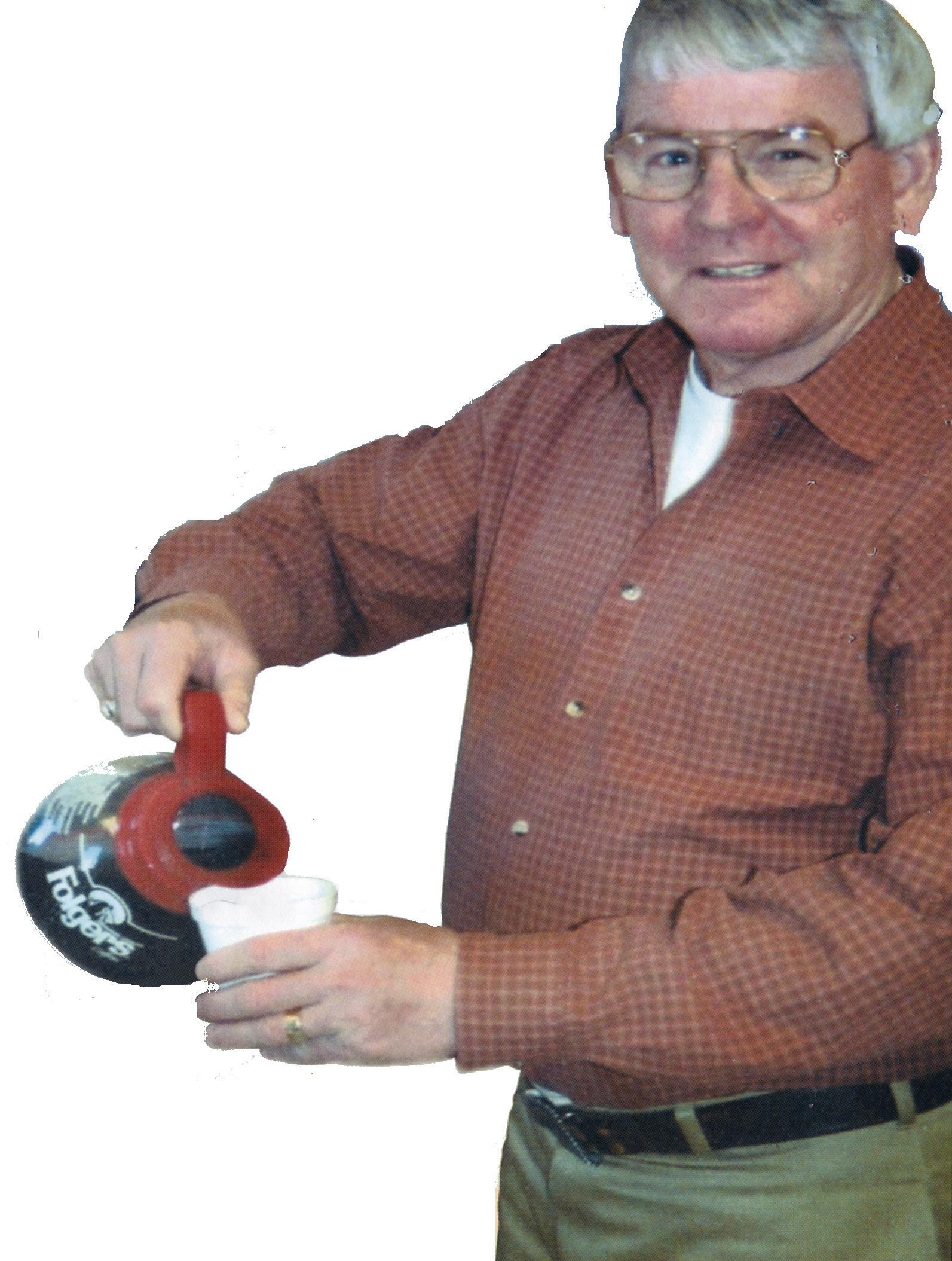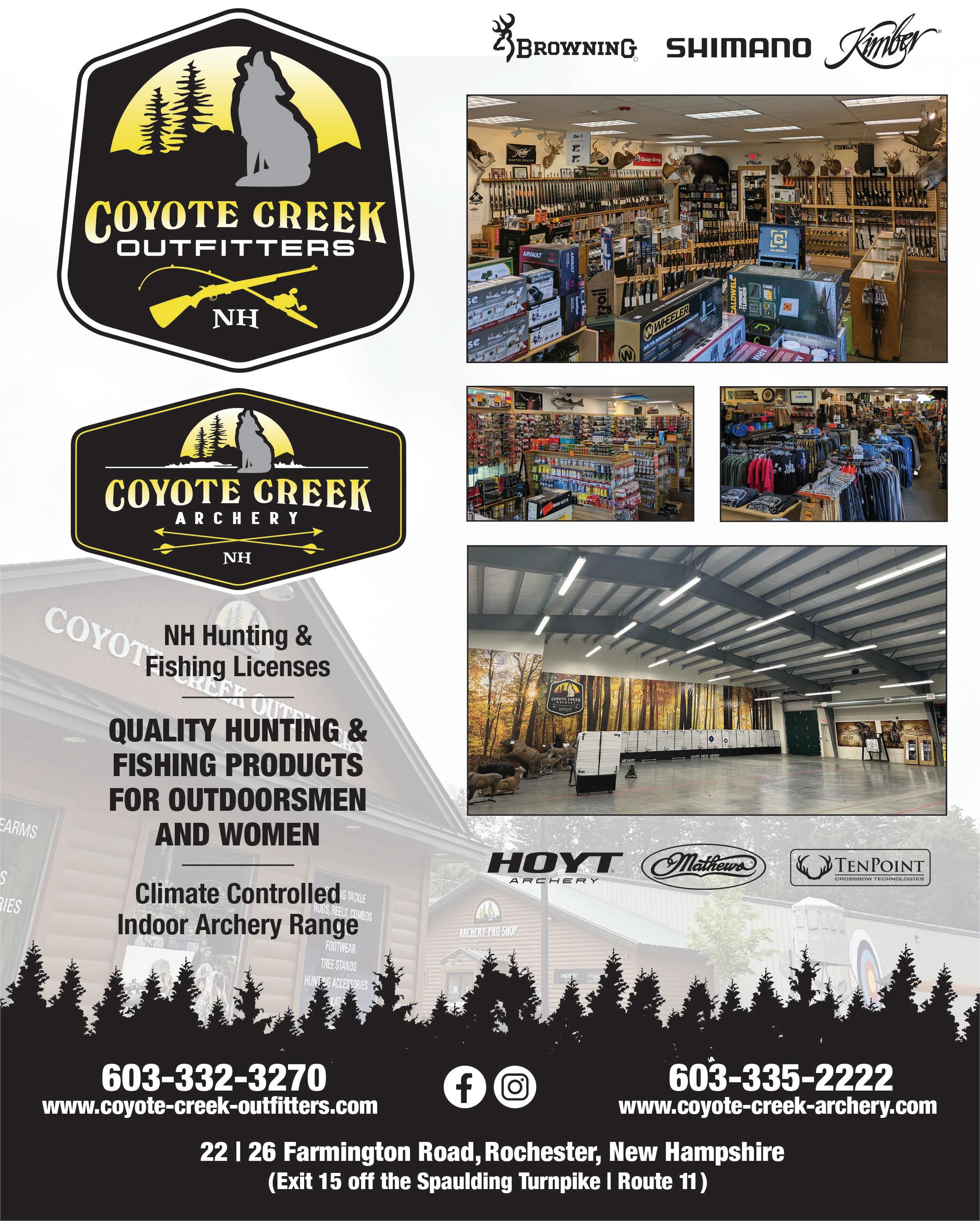
















In my Warden School training close to 10 years ago, my classmates and I had heard from many veteran Wardens, men that I admired and respected then and now, about how “night hunters” are the holy grail of all violators for a Warden. Poachers who show blatant disregard for the sporting aspect of hunting while firing high caliber
waged between Warden and night hunters around the State for many decades. Being 23 years old at the time of Warden School, I knew many poachers prior to becoming a Game Warden, but didn’t know of anyone who night hunted…or at least never admitted to it. Amongst the poachers I knew growing up, night hunting was a
This battle has been waged between Warden and night hunters around the State for many decades. Being 23 years old at the time of Warden School, I knew many poachers prior to becoming a Game Warden, but didn’t know of anyone who night hunted…or at least never admitted to it.
rifles in the darkness with clear disregard for human safety and what could be potentially behind the deer silhouetted by their headlights.
This battle has been
line that was not crossed. These same individuals would think nothing of killing a moose in August or shooting an extra deer and having someone else tag it, but never bragged
openly of killing animals at night. Night hunting is a cultural “activity” that ran rampant in many areas of the State for many years, until increases in penalties, new techniques for catching these crews and fear of being caught and going to jail helped curb this activity to some degree, but not completely.
Sgt. Chris Simmons charged all of us in our training class that “you will wage unceasing war” against night hunting in all its forms. Wardens Bill Livezey, Dave Georgia, Doug Tibbetts and countless others had come in to our classroom and told us stories of high speed chases, shootouts, and everything in between in pursuit of those hunting under an autumn moon.
It didn’t take long once I landed in my district to find out that night hunt-
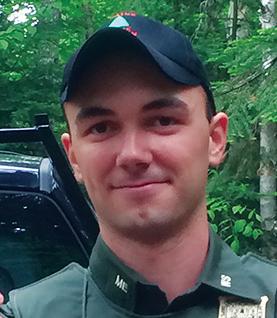
ing is still alive and well. My first fall as a Game Warden, Wardens Bill Livezey, Kayle Hamilton and I caught a night hunter
I will never forget. This experience motivated me and keeps me out working long days and late nights each fall to this day.
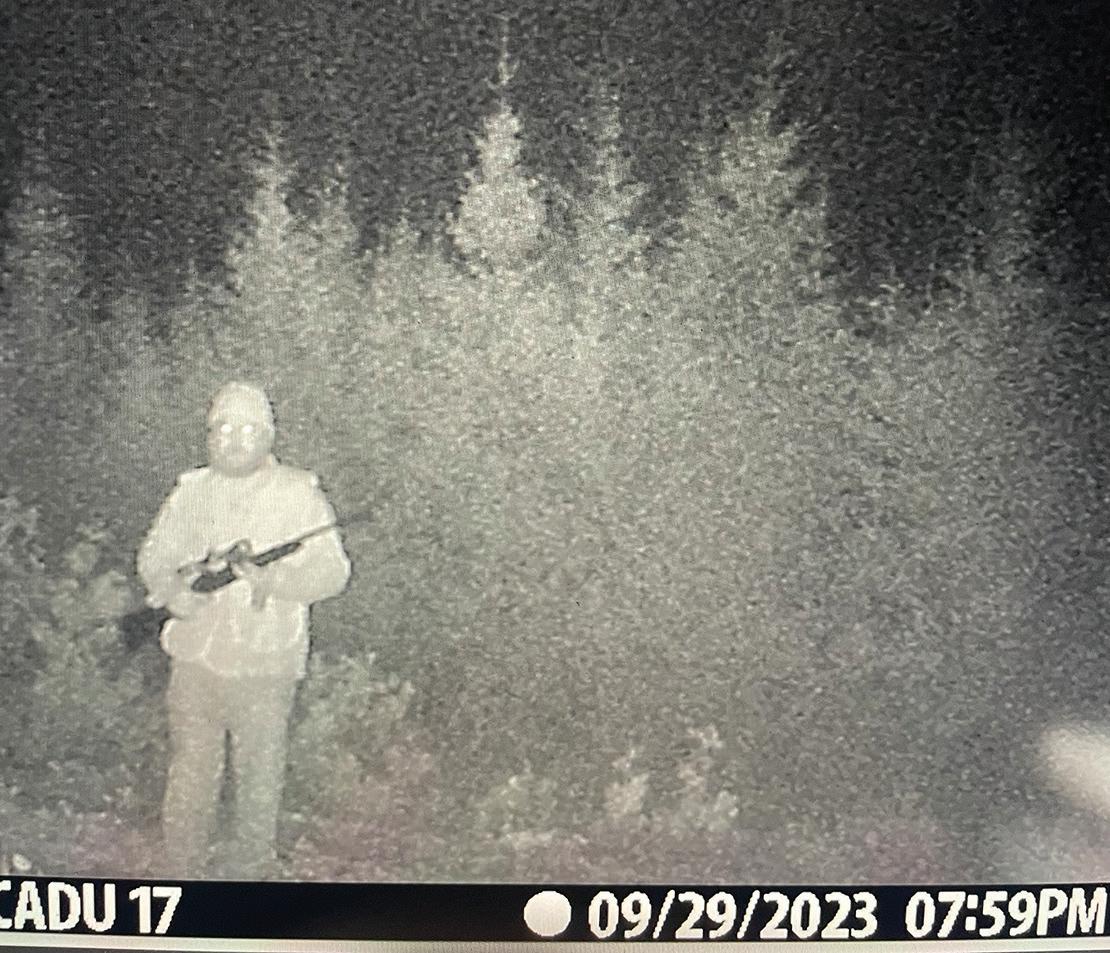
shooting a deer at 3:30 in the morning. It was an eyeopening experience that I have written a previous article about, and something
Fast forward 8 years later in my career and I found myself working on an investigation to catch a (Night cont. pg 41)
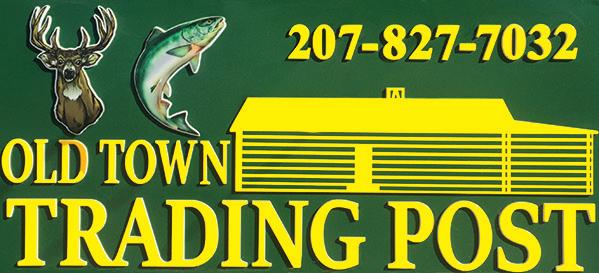
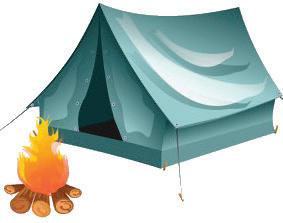
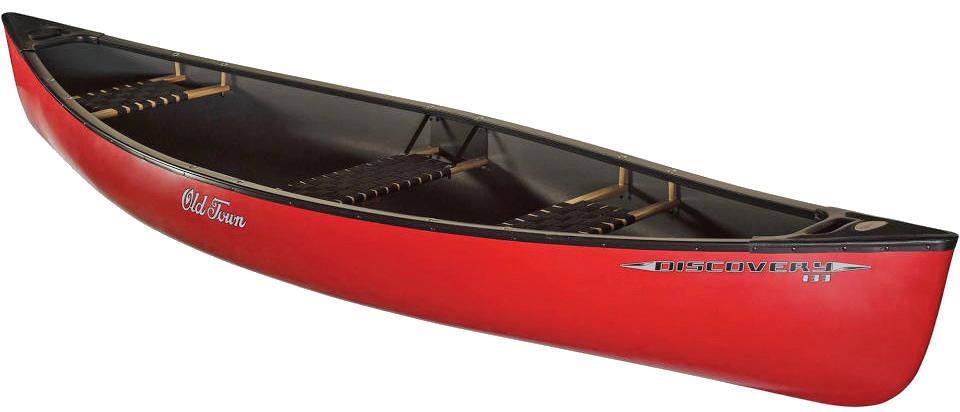

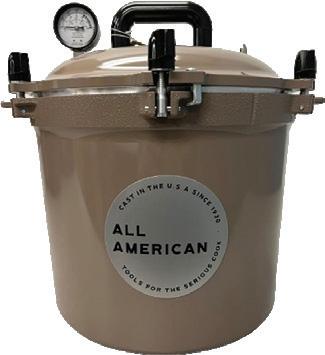
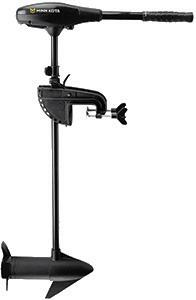
Joe Takes TV Crew Fishing On Chamberlain - Pg 16
The Cross Bull - Pg 6
Tree Stand Safety - Pg 32
Big Bad Bogs - Pg 55
Fishing The Chubby - Pg 26
Camps, Cottages and Land for Sale - Pg 68-70
3. Warden’s Words - Kale O’Leary
6. The Cross Bull - Nathan Theriault
7. Green Mountain Report - Bradley Carleton
8. Beyond The Trophy - Ty Flores
9. The Gun Cabinet - John Floyd
10. A Hiker’s Life - Carey Kish
11. Muzzleloading Afield - Al Raychard
13. Best Bassin’ - Bill Decoteau
14. The Bird Perch - Karen Holmes
15. Slipstream - Scott Biron
16. The Adventures Of Me & Joe - Bob Cram
18. Outdoor Sporting Library - Jeremiah Wood
19. Outdoors In Maine - V. Paul Reynolds
20. Aroostook Woods & Water - Mike Maynard
22. Maple Country Outdoors - Ben Wilcox
24. Young Blood - Jake Guay
25. Maine Outdoor Adventure - Rich Yvon
26. Angling, Antlers & Artifacts - Jake Scoville
28. The Buck Hunter - Hal Blood
31. Maine Tails - Jonah Paris
32. Basics Of Survival - Joe Frazier
33. Guns & Ammo: A Guide’s Perspective - Tom Kelly
34. Women In The Woods - Erin Merrill
35. On Point - Paul Fuller
36. View From The River - Laurie Chandler
37. The Singing Maine Guide - Randy Spencer
39. Northwoods Voyager - Gil Gilpatrick
40. SAM News - David Trahan
44. South Of The Kennebec - Stu Bristol
45. Tales Of A Maine Woodsman - Joel Tripp
46. Cookin’ With New England’s WildCheff - Denny Corriveau
47. Marsh Island Chronicles - Matthew Dunlap
48. Vermont Ramblings - Dennis Jensen
49. Outdoors In Vermont - Gary Moore
50. On the Ridge - Joe Judd
52. On the Prowl - Justin Merrill
53. Against The Current - Bob Romano
54. Northwoods Sketchbook - Mark McCollough
55. Cracker Barrel - Homer Spit
56. Question Of The Month - Mark Cote
57. New Hampshire Outdoors - Peter St. James
58. Kineo Currents - Suzanne AuClair
59. The Trail Rider - Dan Wilson
60. The Back Shelf - Justin Merrill
62. From Craig Pond - Bob Mercer
63. Everything Maine - Greg Burr
65. The Maine Woods - Matt LaRoche
The Northwoods Sporting Journal is the Northeast’s most comprehensive and readable monthly outdoor publication. Published at the trailhead of Maine’s sprawling North Woods, the Sporting Journal prides itself on being an independent voice for the region’s outdoor community for more than 28 years. Some of our writers are seasoned and specialized outdoors people who will share their know-how and insights; some of our contributors are simply lifelong outdoor people with interesting stories to tell.
Our aim every month is to capture the essence of Northern New England’s remarkable outdoor heritage by stirring memories, portraying outdoor humor, and sharing experiences and outdoor knowledge. We also keep our readers up to date with late-breaking outdoor news and hard-hitting editorials about fish and wildlife issues.
Anyone who loves to hunt and fish, or simply finds the Great Outdoors a treasured place, is more than likely to find some special connections amid the pages of the Northwoods Sporting Journal.

monthly by Northwoods Publications, 57 Old County Rd. North, W. Enfield, ME 04493
Periodical Postage Paid at W. Enfield, ME. and additional mailing offices. The Northwoods Sporting Journal (ISSN#1548-193X) Postmaster: Send address changes to: Northwoods Sporting Journal, PO Box 195, W. Enfield, ME 04493
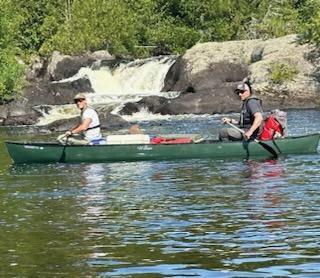
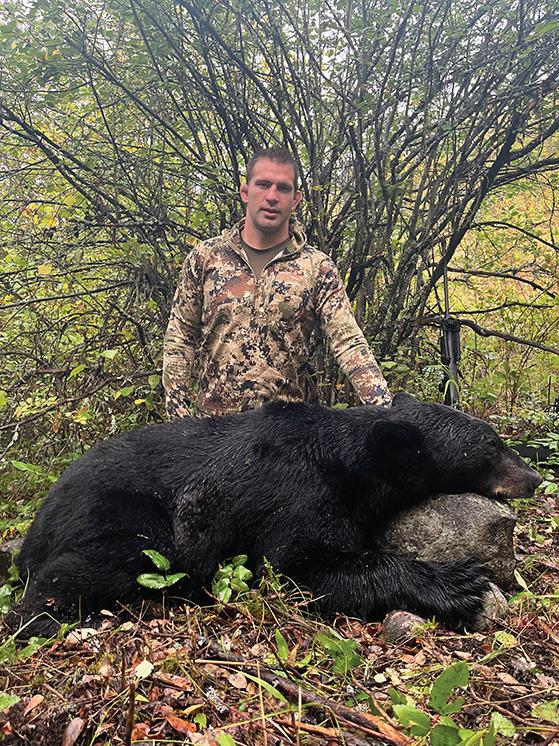




By Nathan Theriault
ful OMM client, KUIU, Swarovski Optik, GA Precision rifles and the Three Rangers Foundation, this dream hunt became a reality for Chris Vogeler. Chris Vogeler is a gold star combat veteran. This hunt was done in remembrance of his brother’s
A once-in-a-lifetime bull for a gold star combat veteran.
Moose hunter Chris Vogeler and the Cross Bull Crew. Blessed is the best way to describe what we do. The reason we can afford to guide, and hunt is because of the sacrifices that so many have made. This realization has always kept me wanting to give back to the people who gave so much for the love of this country and the right to keep it free.
As we entered our 20th year in business at OMM Outfitters, it was clear that this was the year to put together a Maine moose hunt for a veteran. With the help of a wonder-
ultimate sacrifice. SFC Lance Herman Vogeler was an avid hunter who enjoyed being outdoors with friends and family. Chris has always followed in his brothers’ footsteps, and this was a chance for him to learn why his brother enjoyed it

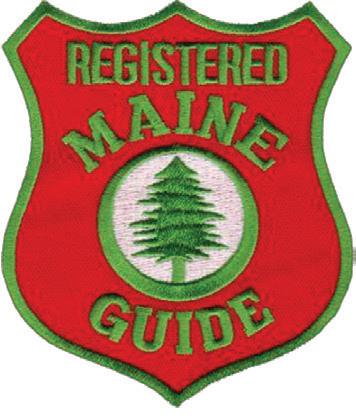
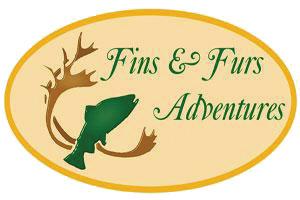

Trescott: August 23,24,25
Skowhegan: December 5,6,7
Trescott: January 16,17,18
each in different directions, we looked and listened for a window of opportunity to move forward.
like he did. It was also an opportunity for him to learn to be able to teach his kids about being outdoors.
The Vogeler team, accompanied by Three Rangers spiritual fitness director Dan Knight and KUIU Camera man Jeff Shanor, arrived on Sunday, the day before the hunt. The excitement was high, and after the guys settled into the Eagle Lake Sporting Camps, they headed for the range accompanied by OMM Guides, Shawn Williams and Rob Fickett, also veterans. Chris’s GA precision firearm outfitted with a Swarovski scope performed to perfection. Chris was dialed in and had no doubt he was ready to make a great shot when the opportunity presented itself.
On Thursday the hunt came together. Rob Fickett, along with team members Erik Poland and Josh Rickman, took to the field as they did the days prior. I also had a chance to get in on the action. We arrived well before legal shooting light to listen and see what opportunities might present itself. With four vehicles,
It was a calm morning with temps in the low 40’s. I happened to be walking down the narrow dirt road thinking about the Cross bull that lived in the area. We had located his sheds the prior winter and had three years of photographed history both by aerial and trail camera. This was on my mind as I did the moose walk down the road that was taught to me by my mentor, OMM team member and close friend who had recently passed, Guy Randlett. My thoughts were interrupted by the sound of a bull raking to my right in the planted spruce as he had heard me. His raking was his way of saying “stay away.” A little while later a cow bellowed. It was clear this was the situation we needed.
I got on the radio to the team who brought Chris accompanied by KUIU photographer Jeff Shanor, and a plan was made. We worked to about 150 yards from my waypoint that I marked on onX as an approximate location of the bull. I began raking aggressively as I felt this bull would welcome a fight. Without a response we continued closer. On the third sequence and 75 yds closer I began to hear the grunt cadence of a bull moving in our direction. The excitement was building, and it was clear we were going to get a look at him. I steadied Chris on a tree and explained his shot openings. The bull closed the distance. However, he didn’t end up exactly where
we would have liked. I quickly directed Chris to a small window on the edge of the planted spruce. It would be a 40-yard shot. We could now see his rack and it looked huge. Just as he entered the opening, I said to myself maybe out loud “It’s the Cross, the Cross Bull!” Then, I said to Chris, “When you are ready, if you have a good shot take him.”
The gun went off and within 5 minutes the one lethal shot had expired one of OMM’S Legendary bulls. The excitement was beyond belief. Both Chris and I were breathing heavily and trying to regain our composure.
As we walked over to the bull his huge rack was evident. I radioed the guys, and they came down andcongratulated Chris. The emotions ran high, and the memories made that day will never be forgotten.
We thanked Chris for his and his family’s many sacrifices so we can continue to live free. This was the hunt of a lifetime!

Nathan Theriault is the owner of OMM Outfitters and dedicated to helping clients make great memories and meet and exceed their life-time goals. OMM is an education, entertainment, and hospitality company providing extraordinary outdoor adventures including great service, world-class outfitter standards, attention to details, high quality, even perfection in every aspect including the food and lodging.
Ladies and Gentlemen, the summer has begun to concede its ugly heat and humidity. The evenings bring the gentle embrace of the northwest breeze carrying with it the hopes of another blessed season of outdoor adven-
Hoppe’s #9 and oil. Shells are stacked up on top of the old ammo box in the den, separated by 3 ½” and 3” for the first day of the month – Resident Canada Goose season. The game camera is sending pictures of several does and two
to their roost in the bay. “Tomorrow” I whisper to myself.
Speaking of geese, the Resident Canada Goose season opens as it has for the last several years on September 1 and runs through the 25th with bag
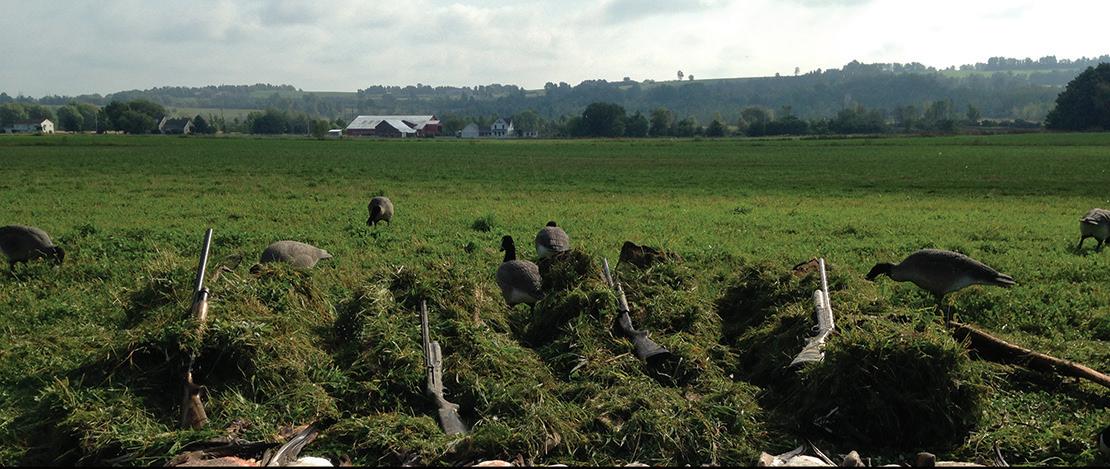
In Vermont, the resident season for Canada Geese opens on September 1st.
tures. As I am harvesting the pole beans, radishes, onions, kale, and four varieties of tomatoes, the sun sets in majestic beauty over the Adirondacks. I dream of the fall. My faithful first gun, a .22 Marlin Glenfield model 25 is sighted in and ready for chasing bushytails chittering in the canopy of green behind the house.
The crossbow and compound are regularly clustering in the 10 ring at 35 yards. The shotgun has been cleaned and oiled several times, simply because I enjoy the acrid bouquet of
(Photo by: Bradley Carleton)
nice bucks cruising down the trail under my stand. I grab a handful of large leaf basil and a few bright red big boy tomatoes and head for the house.
As I walk back to the barn in the fading light, a partridge storms out of the berry bush behind the horse shelter, reminding me that the last Saturday of the month is Opening Day for the “little king” of the softwoods. As I drift off to sleep the intoxicating aroma of fresh cut hay mixes with the poignant aroma of the lake. The last thing I hear as I rollover to


my resting position for the night is the haunting sound of a flock of Canada geese honking as they head out
by Bradley Carleton, Charlotte, VT
limits of eight birds a day and 24 in possession for the Lake and Interior Zones. Connecticut River Zone will remain at 5 birds a day

Northern Lake Zone.
The first Saturday in September also marks the first day that we can construct duck blinds. This day
Speaking of geese, the Resident Canada Goose season opens as it has for the last several years on September 1 and runs through the 25th with bag limits of eight birds a day and 24 in possession for the Lake and Interior Zones.
and fifteen in possession.
If my observations are accurate at all, the resident population continues to grow faster than the harvest numbers. I counted more than fifty goslings in early June in one location in the







still fascinates me that the old “respectful” tradition of putting out a stake with one’s name and number one it is believed to “save” the spot for a specific party. This practice fell apart (Debut cont. pg 41)
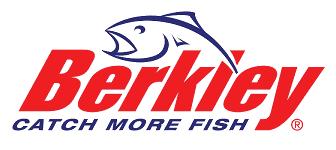
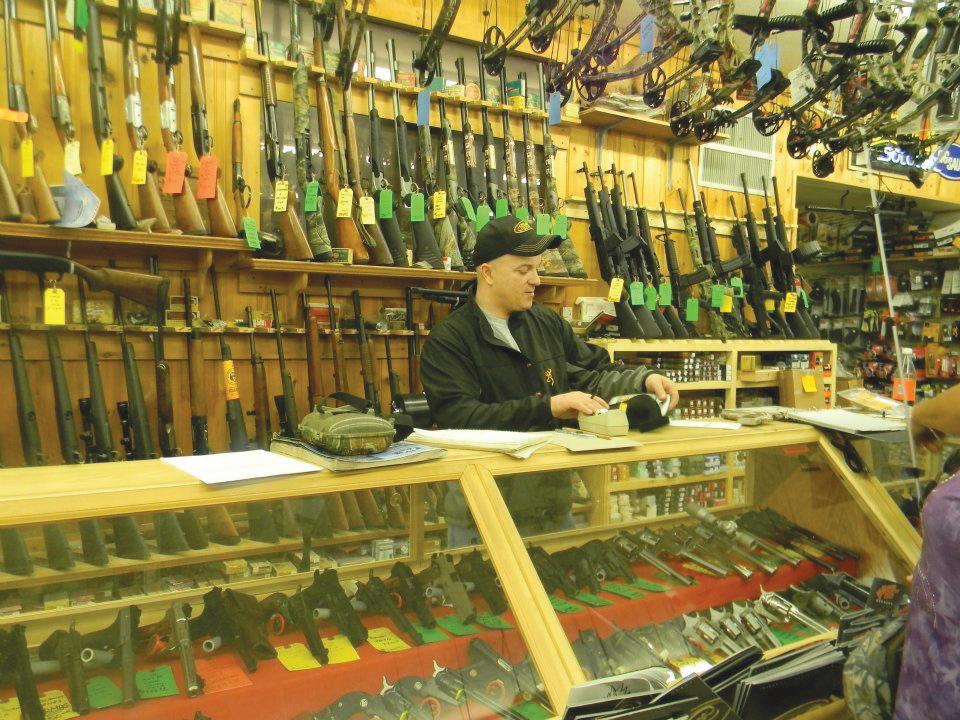


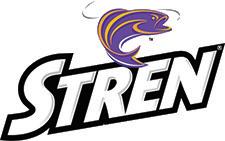

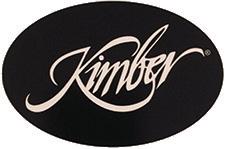



In Maine and in a number of Western states, ballot box biology continues unabated.
What is ballot box biology? Put simply, it is when well- intentioned but misguided animal rights activists use the democratic process to unilaterally impose wildlife management policies that rightfully should be left to professional wildlife biologists and policymakers.
Last fall the U.S. Fish and Wildlife service removed the gray wolf from Federal protection. Since being listed for protection, the gray wolf has bounced back in surprising numbers. In Montana, the wolf numbers are 500 percent above conservation recovery goals, ditto Idaho with a recovery rate 700 percent above federal target levels.
Ironically, Colorado voters by a razorthin margin passed Proposition 114, which forces state wildlife managers there to introduce gray wolves on the west side of the
Continental Divide. Interestingly enough, a significant gray wolf pack is already there, apparently having dispersed from neighboring states with big wolf numbers. The gray wolf, like its canine cousin in Maine, the coyote, is a notoriously tough and tenacious critter. No doubt the Colorado wolf numbers will increase naturally without reintroduction, and all the expense that that entails.
Recently, here in the Pine Tree State, there have been a number of petition proposals by animal rights activist John Glowa to ban coyote hunting and trapping. At a fall meeting of the Maine Fish and Wildlife Advisory Council, Glowa’s proposals were rejected by a unanimous vote of the Council. State wildlife officials testified against the coyote hunting ban proposals as well, arguing that neither recreational coyote hunting nor trapping has reduced coyote numbers to a point that causes concern for
their sustainability.
Glowa, who is as tenacious as the wild canids he fights to “save,” is not going away. He will continue to argue and attempt to prove that Maine’s coyote, or brush wolf, possesses sufficient gray wolf DNA to warrant its protection from harvesting by man.
It would appear that the decision by USFWS to delist the gray wolf “in the lower 48” renders Glowa’s argument moot, regardless of the given DNA mix of any Maine coyote.
But then you can never be sure; the law works in mysterious and unpredictable ways. In the past, successful lawsuits by well-healed animals rights organizations have managed to overturn USFWS delistings in Michigan and in some other states.
By Ty Flores
One of my most memorable fights was back in my amateur career. Before finals began I was on deck for my first title fight. My opponent was a lanky Haitian kickboxer, and as the
that involved wrestling him to the ground and finishing him with strikes from mount.
That was many years and many battles ago. Since then I’ve turned profes -
This was my first bear, and I wanted it to be memorable. I couldn’t care less about its size as long as it was legal. When I say “memorable”, I mean the hunt itself. One of the most alluring characteristics of Western hunting, especially to a native flatlander from Missouri, is the ruggedness and complexity of the mountains and the quarry that calls it home.
first round ended it dawned on me that blocking all of his punches with my face was a strategy better left to Rocky Balboa. Not long into the second round, I was able to implement a far less concussive strategy
sional and fought on ESPN, and while #1 is still a long way and a lot of hard work off, this past year I finally became ranked worldwide.
I’ve fought bigger names on bigger stages and been on the giving and receiving
end of many stitches since then, but this is a fight I still remember like yesterday.
The referee stopped the fight too early. Trash was thrown in the cage. Friends of mine fought with my opponent’s fans. I was a far better grappler than he was. This was something I knew before the fight, and once I got my hands on him my suspicions were proven true. Truth be told, he wasn’t getting up and there was plenty of time left on the clock for me to finish the fight; I was almost certainly going to win. Still, the fight was stopped prematurely and regardless of what may or may not have happened, I felt like I was robbed of something. I thought of this fight and how I felt this past August when I embarked
on my first bear hunt. As August came to an end, I found myself bumbling around forgotten logging roads in northern Washington lumber country with a guide I’d reluctantly hired. I prefer hunting alone, and hunting guides ain’t cheap these days. Bear hunting had been at the top of my list for years, and taking time off to hunt unfamiliar territory out of state was a tall task. Plus, I’d fought an unprecedented five times in nine months and the year had been as lucrative as it was busy. I decided to treat myself.
My guide was an older fellow closer to 70 than 60, chatty to a fault, and in reasonable shape for a man his age. He had remarkable knowledge of
forestry and the lumber business. He could tell me what each tree was, how to best use it, and what it would be worth now or any decade past. He was also an exceptional tracker, an ability he rarely showed off considering how much time we spent driving over old logging roads in search of bears. This put me in a conundrum.
Hunting is a love of mine, and my fight training is the only thing that exceeds my passion for the outdoors. Once upon a time, I would have put women in the running too, but my woman is more territorial than a bugling bull in late September. She’s louder, too. Shooting a bear was something I’d (Trophy cont. pg 43)
When I pulled into Fish River Lodge in Eagle Lake on a Sunday during last year’s moose season I noticed a few folks talking on the front porch of the main lodge. I didn’t recognize anyone and assumed the group must be clients for the upcoming hunt week. I was there to guide a bull moose client for
After a rollercoaster ride of emotions ranging from anger to disbelief, Erv remembered his first time out as a guide, volunteering for a veterans outreach and bear hunting retreat. He told himself “Let’s just see how it goes.”
Bennett’s Guide Service and knew most of the other guides having worked with them in the past.
One fella stood out from, and above, the rest. He was a big man. After introducing myself to the group I learned he was a nonresident Maine Guide from Virginia and was here to guide his first moose hunt. He told me his name was Jason Allen, but folks called him ‘Country’; a very fitting nickname indeed.
As Country helped me unload my gear and personals from my truck, we chatted about the upcoming hunt. He hid it well, but I could tell he was nervous. I harkened back to the time I guided my first client, recalling the fear and pressure I felt. I reassured him and passed on some tips
as well as a spare moose scapula for raking.
After the welcoming lobster bake supper that evening and all of the guides working the hunt had prepared Jason as best
himself and Ian the best odds possible to fulfill their dream of taking a moose together.
To his self-described ‘horror’, Country was assigned as his guide when
by John Floyd, Webster Plantation, ME
a nonresident guide from Virginia.
After a rollercoaster
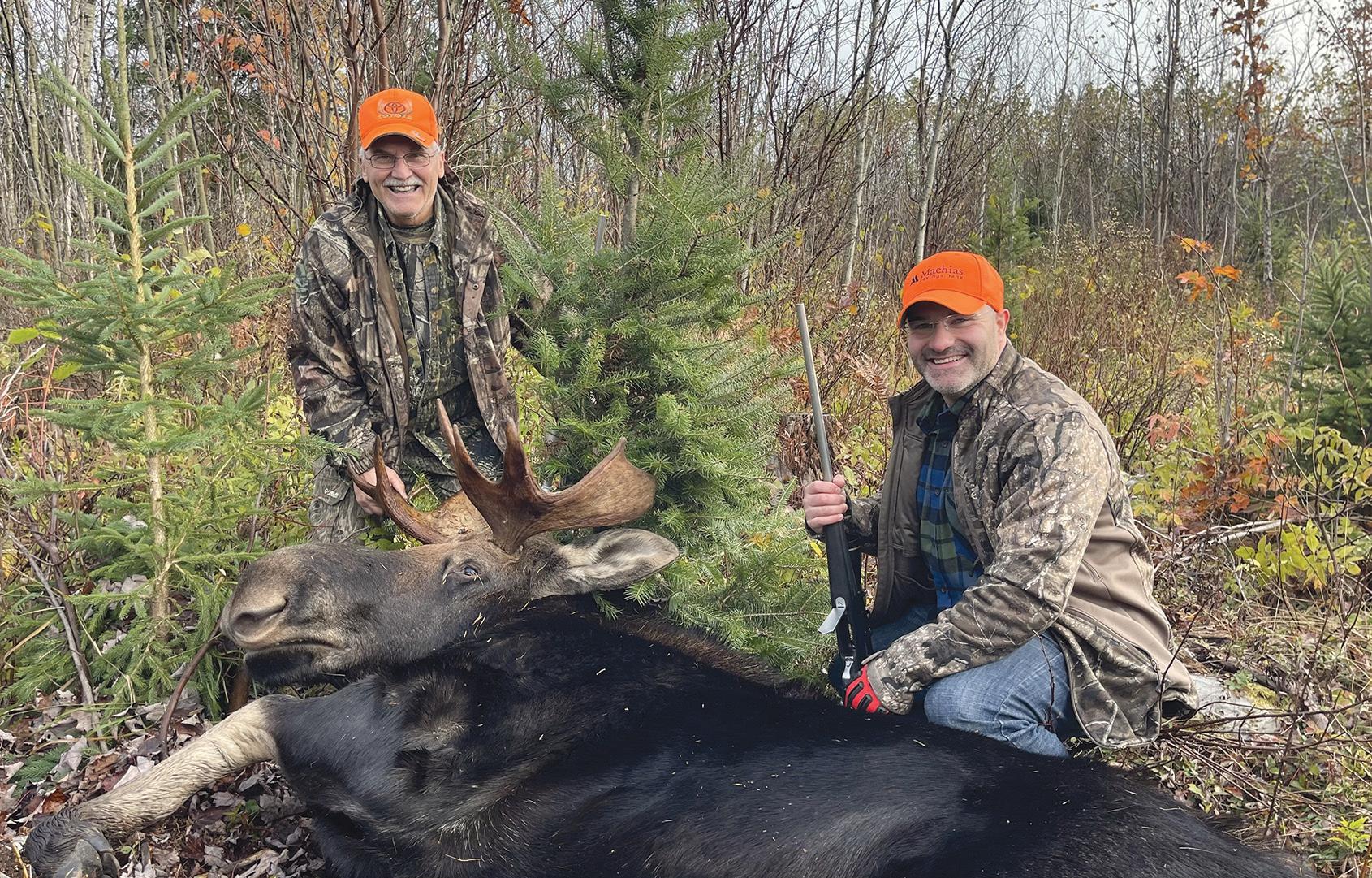
Ervin and Ian on their hunt of a lifetime.
we could, the reality of an early morning kickoff settled in on Country. Wayne Bennett summed it up best for him – “You’ve got this. We’ve all been there.’
Ervin Dumond and his adult son Ian had waited a lifetime to hunt moose together as father and son. I mean that quite literally. Ervin had been applying for a tag in the Maine moose lottery since its inception, roughly 40 years ago. Ian, now in his late 30’s, grew up in the deer woods alongside his Dad and had been Ervin’s subpermittee since he was old enough to hunt.
When Erv drew a permit, he wasn’t about to take any chances on going home empty-handed. He had waited far too long for this opportunity. Though he holds a guide license, he had yet to guide a moose hunt and decided on a fully guided package to give
Erv arrived at camp. Ervin went into full-blown panic mode when Jason told him that he and Ian were his first clients and that he was
ride of emotions ranging from anger to disbelief, Erv remembered his first time out as a guide, volunteering for a veterans outreach
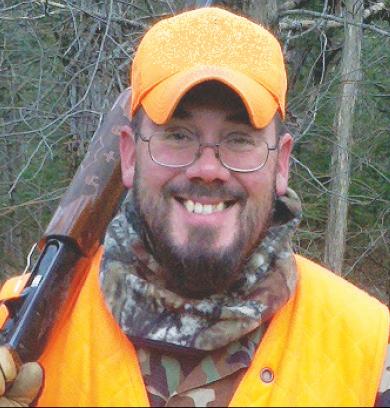
and bear hunting retreat. He told himself “Let’s just see how it goes.”
On Wednesday morning of the week long hunt, Country was feeling the heat and Ervin was swinging back into panic mode. Wayne Bennett had tagged out his clients Jaci and Brian Maxham with a nice bull at last light Monday. My clients Jake and Gary Holmes took their moose Tuesday afternoon. The pressure was on.
I had told Jason that the most important thing he needed to remember when things get sticky was to communicate with his clients. Listen to them and work as a team.
Later that morning, Erv suggested they try a new area and the team crept into an untraveled

By Carey Kish, Mt. Desert Island, ME
The weather forecast for the Labor Day weekend in New Hampshire’s Presidential Range was near perfect, with mostly clear skies and temperatures in the 50s. This hiker hadn’t been on Mt. Washington since my AT thru-hike from Georgia to Katahdin a few years ago, so I figured it was high time to visit the “Rock Pile” again.
There are myriad ways to scale 6,288-foot Mt. Washington, and over
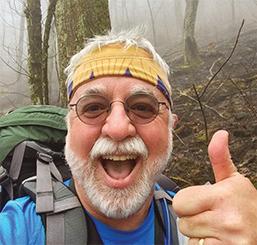
the big mountain that I’m eternally grateful just to have escaped with my life. If you’ve ever experienced the awful weather Washington can dish out, well, you know exactly what I mean.
So, it was Labor Day weekend, yes, but I wasn’t interested this day in the laborious task of scrambling 4,000 feet up Mt. Washington. Instead, I concocted a high-elevation hiking route that would start and
I concocted a high-elevation hiking route that would start and end around 5,000 feet on the Mt. Washington Auto Road. It would be more of a picnic than an epic and that suited me just fine.
the years, I’ve climbed most every route in all kinds of weather, summer and winter, at least once and a handful multiple times. Some trails I don’t care to repeat. And there are a number of treks on
end around 5,000 feet on the Mt. Washington Auto Road. It would be more of a picnic than an epic and that suited me just fine.
Opened in 1861 and billed as “America’s oldest man-made [tourist] attrac-




tion,” the nearly 7-mile drive up the Mt. Washington Auto Road to the trailhead was exhilarating. First in line when the toll house opened, I had the road to myself and could really enjoy the trip to the parking area at the old cow pasture.
A short hop on the Huntington Ravine Trail led me to the Alpine Garden Trail, which led along the rim of Huntington’s and then Tuckerman’s, and yielded beautiful vistas ranging from Maine to Wildcat to Washington’s summit. From T Junction, my route crossed the Bigelow Lawn before descending to Lakes of the Clouds Hut, where I relaxed in the sun near the front door.
Mt. Washington’s summit beckoned, but I had more exploring to do first. The historic Crawford Path (also the route of the Appalachian Trail) is the oldest continuously used and maintained trail in the northeastern U.S. Meandering up the Crawford, I then veered off on the Westside Trail, a remarkable contouring sidewalk

of rock slabs that eventually joined the Gulfside Trail.
The peak panorama of Jefferson, Adams and Madison along both trails was astounding, and ambling along the Gulfside, so was the view deep into the Great Gulf Wilderness.
The circus showman, P.T. Barnum, once called the view from Mt. Washington the “second greatest show
cious bowl of chili with a heckuva view.
Giving a huge, happy wave to the colorful Cog Railway trains as I descended the Nelson Crag Trail, I picked up a small lump of coal near the tracks and tucked it into my pocket as a souvenir. Wandering the last pleasant stretch back down to the car, I couldn’t have been more content with this fine day’s
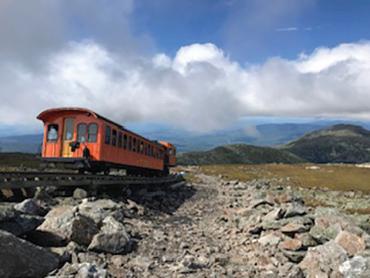
on Earth,” and I always figured he must have been referring to this particular grand scene.
As expected, the summit was crowded with hikers and Cog Railway and Auto Road trippers, but nonetheless, I enjoyed a fine hour on the rooftop of New England wandering about. With an advance reservation (mandatory), I was able to get into the Sherman Adams Summit Building for lunch, a deli-
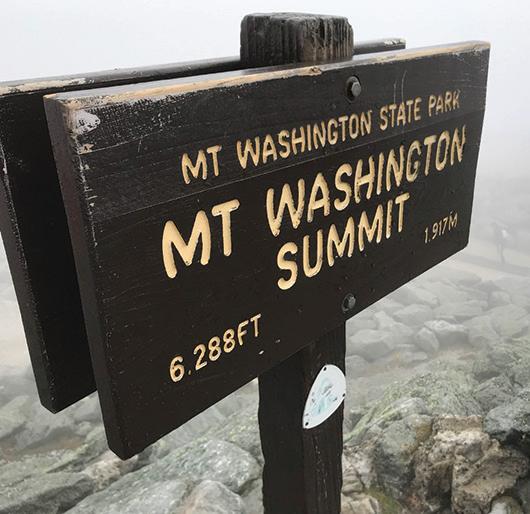
hike in such an extraordinary setting.

Carey Kish of Mount Desert Island, ME is the author of Beer Hiking New England, AMC’s Best Day Hikes Along the Maine Coast, and the AMC Maine Mountain Guide. Catch up with him (maybe) at maineoutdoors@aol.com on Facebook, and on Istagram @careykish

Every flyfishing enthusiast I have ever known or met has his or her list of favorite trout flies. Not just for specific species or specific waters but for various, even specific times of the season. Many carry names familiar to most who cast a fly rod, old standards considered “a must.” Others may be favorites on a regional basis, some may not be known at all but are carried because they have proven their worth in the past.
Late summer starting in September and extend-
feeding activity as summer water temperatures cool and activity generally increases in momentum until water temperatures grow frigid. Although the most prolific insect hatches are pretty much over for the year fall trout are no less hungry or cooperative, in fact, if past experiences are any indication trout can be overly cooperative as if they know the season is changing and food will be increasingly difficult to come by.
I truly love fishing dry flies as much as the next
We had flown into a remote river on the Alaskan Peninsula looking for big rainbows and on the flight in the pilot of the Dehavilland Beaver asked if we had brought any big, meaty flies. “These trout like meat at this time of year. It’s what help sustain them until spring.”
ing into early fall in October is one of my favorite times to cast flies for trout, particularly in rivers and streams. Water levels are generally cooperative, the weather pleasant to say nothing of colorful as the season changes, and as many start to think about, prepare and gear up for the hunting seasons it is not unusual to have a pool, riffle or entire stretch of water to yourself. Another reason is, trout typically increase
person but at this time of year and until I call it quits for the season streamers are my go-to. My reasoning is quite simple. With the seasonal changes trout are looking to nab and take advantage of all the food sources and protein they can before winter fully sets in. With surface food and terrestrial activity less and less available the largest percentage of that food, perhaps as much as 99-percent comes below

the surface in one form or another, especially as the fall season progresses. With everything said and done, in my humble opinion when it comes to fall trout action below the
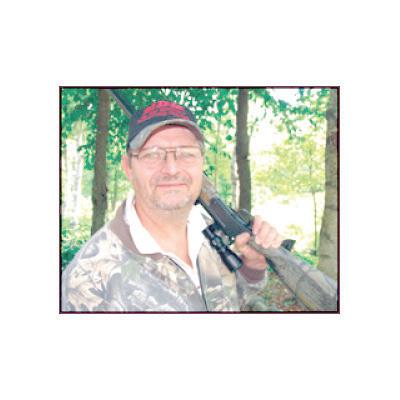
streamers tied with blond and brown rabbit fur I had ever seen. I forget what he called them now but I

In the fall, trout are looking for a meal. Big, meaty flies can make all the difference. (Photo by V. Paul Reynolds)
surface with streamers is where it’s at.
I suppose I convinced myself of that belief after my first trip to Alaska several years ago. We had flown into a remote river on the Alaskan Peninsula looking for big rainbows and on the flight in the pilot of the Dehavilland Beaver asked if we had brought any big, meaty flies. “These trout like meat at this time of year. It’s what help sustain them until spring.” Just before departing he handed me a fly box. Inside were a half dozen of the bulkiest
do remember him saying, “They’re big, I know but they aren’t meant for long distance casting, and here you don’t have to anyway. They’re designed to imitate a lemming and to catch fish.” And they did. Ever since then I have been a fan of big flies for fall trout and salmon.
Whether it’s a Muddler, Zonker, Wooley Bugger or something else or any of their version my fall streamers are just bigger and more heavily tied, bulkier, that what I might use at other times of year.
by Al Raychard, Lyman, ME
Not as big and bulky as those used in Alaska but something fish will take notice of and spend the energy and effort to smack. Of course, these heavier flies are not a cure-all. You still have to do your part by making the right presentations, getting the proper drift and everything that goes with them, but they just might save the day. As the fall fishing season gets underway you might want to give them a try.

Al Raychard and his wife Diane live on 43 +/acres in Lyman, Maine that offers good deer and turkey hunting opportunities they both enjoy. If the property had a trout stream it would be pure paradise. Al can be reached at alraychard@ sacoriver.net
BY Judy Camuso, Commissioner of Maine Inland Fisheries & Wildlife
With the passing of LD404 in the summer of 2021, MDIFW established an approach for prioritizing deer wintering area land acquisitions and management. The Department established criteria for acquisition projects (attached) with the intent to focus efforts on the areas with the most benefit to deer and best opportunity for MDIFW ownership and management. At the same time, we also identified the highest priority areas for potential Department ownership and management in northern, eastern and western Maine. The Department initiated conversations with partner organizations and landowners within the priority areas and began proactively searching for acquisition opportunities.
In the past two years, MDIFW has closed on five Deer Wintering Area projects totaling nearly 10,000 acres. In that time we also closed on, or worked with

Judy Camuso
In the past two years, MDIFW has closed on five Deer Wintering Area projects totaling nearly 10,000 acres.
partner organizations to close on, numerous additional properties with benefits to wintering deer. Department deer wintering acquisitions completed to date include:
•Rangeley WMA- 708
Acres, funded with Pittman Robertson (PR) and Deer Management Funds
•Caribou Stream
WMA- 918 acres, funded with PR and Land for
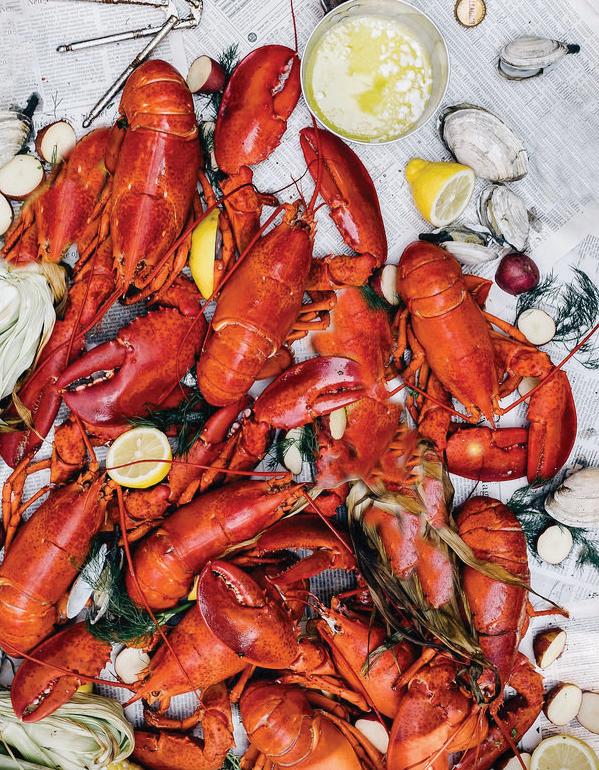
Maine’s Future (LMF) and Deer Management Funds
•Caribou Steam WMA Addition- 5 acres to secure legal public access, funded with Deer Management Funds
•Lexington Deer Wintering Area- 1490 acres, funded with PR and Deer Management Funds
•Reed Deadwater
WMA- 6326 acres, funded with PR, LMF and Deer Management Funds
LMF funding was essential for the completion of the Caribou Stream and Reed Deadwater projects We were fortunate in the past two years, however, to have PR and Deer Management funds also available to cover the Rangeley and Lexington acquisitions without having to apply for LMF funds. The Department’s lack of applications to LMF for two grant rounds was not because of lack of progress. Proceeding with PR and Deer Management Funds only enabled us to move more quickly toward a closing without having to wait for
the LMF open grant cycle. While working to complete the above projects, we also evaluated numerous additional potential acquisitions through desktop analysis as well as on-the-ground site visits. These properties were found to either not be high quality deer wintering habitat, not accessible for

In the past two years, Maine has purchased 10,000 acres of deer wintering areas for protection, with more acquisitions planned.
public access or suitable for Department management or with landowners not willing to sell. While we were establishing a deer wintering area land acquisition program, the Department also hired a Deer Wintering Area Biologist to focus on

management of MDIFW owned lands and we directed another biologist to engage with private landowners on deer management practices, both important additional components toward implementing a vision for deer wintering area conservation in Maine. We are committed to continuing to implement the Department priorities for deer wintering area acquisition and management. We are currently under contract to purchase 150 acres abutting the Caribou Stream WMA and are continuing active conversations with conservation partners and several large landowners in northern, eastern and western Maine to cultivate future large acquisitions centered on high quality deer wintering areas. We typically keep conversations with landowners confidential until after a purchase and sale contract is in place. In our conversations with large landowners, we are finding the most larger timber landowners are not interested in selling fee ownership. Several are only interested in completing like kind exchanges, which require the seller to find a similar property to purchase before they can sell. Others are only willing to sell easements which would not allow for Department management. Finding willing sellers of high quality properties has been the biggest challenge so far. We are now engaging with a wider range of landowners, including smaller family owned landholders, and are initiating a more proactive search of real estate listings. (Wintering
September’s weather patterns always seem to carry August’s hot and humid heat waves as the month begins. It also has a tendency to ignite the hunting fever for those anglers/ hunters who are willing to trade their bass boats for ATV’s! And no doubt September’s Indian Summer weather can have both bass
Rig, it catches bass everywhere!” Guido’s standard rigging tutorial included a 3/4 oz. lead-weight, red bead, barrel swivel, 36inch leader tied to an off-set hook paired with a 6-inch lizard. When retrieving the Carolina Rig its imperative to feel the bottom with the weight. It will telegraph the bottom revealing, hard
Mark Daniels Jr. is a firm believer in the Carolina Rigs ability to catch bass!
“The Carolina Rig is basically a beefed-up Finesse presentation!
and bass anglers seeking cooler temperatures.
I remember one September Bass Tournament on Lake Champlain many years ago where a friend rigged a Carolina Rig “Senko” dragging it along deep week lines. He didn’t catch a lot of bass, but the ones he did catch were enough to win the old Redman Trail tournament. On another September occasion while fishing with Maine’s Bass Fishing Hall of Fame Inductee Dave Barnes, we targeted big largemouth bass holding in twenty to twenty-five feet, just off a shallow weed infested flat.
1988 Bassmaster Classic Champion Guido Hibdon enlighten me to the effectiveness and simplicities of utilizing a “Carolina Rig” for both largemouth and smallmouth bass. Guido’s words were easy to remember, “Never underestimate a Carolina
or soft conditions, rocks or gravel, boulders, wood, as well as clam beds. While, most bass anglers will agree they have heard of the Carolina Rig, they will quickly reply, “I don’t remember the last time I used the Carolina Rig?” In fact, mention the words “C-Rig” to the younger generation of Bass Anglers and they might reply, “I’ve never heard of it?”
California’s Legendary Don Iovino was known for his ‘Finesse’ style of fishing. Smaller line diameter, lighter sinker weights, small hooks attached to small finesse style plastic baits. Don promoted his technique as ‘Brass and Glass’. His rigging technique started by sliding a Top Brass slip-sinker unto his line followed with a glass bead. A variety of options followed: a small hook and finesse plastic
bait ended the setup. Shaking the set up produced an enticing unique sound attracting bass. Following the Top Brass slip sinker and glass bead, a small swivel was attached with a leader length of 18-24 inches, then the smaller hook and same style soft plastic completed the rig. The sliding brass weight would knock against the glass bead attracting bass.
One technique I was extremely intrigue with was labeled the ‘Mojo Rig’. The setup was basically similar to a Carolina Rig, except for a few modifications. Cylinder style Top Brass or lead cylinder weights were pegged to your line, the distance to the hook was usually 18-24 inches and smaller finesse style plastic baits such as leeches, crawfish or minnows enticed lethargic and curious bass. The Finesse style rigging setups with lighter line were utilized with spinning reels and rods. Thus, allowing anglers to make longer cast while the parabolic action of the spinning rods acted like shock absorbers for large hard fighting bass… Especially Smallmouth bass. Spinning reels allowed for back-reeling or fine tuning the drag system to avoid lost fish or broken lighter diameter lines.
Major League Fishing’s Pro-Angler Mark Daniels Jr. is a firm believer in the Carolina Rigs ability to catch bass! “The
by Bill Decoteau, Hampden, MA
Carolina Rig is basically a beefed-up Finesse presentation! Your bait of choice mimics the natural subtle movement of forage, very similar to a DropShot Finesse technique or

Tungsten will chip or break the glass bead), Spro barrel swivel 80-100 lb., same size Seaguar InvizX Fluorocarbon 36-inch leader, and my hook size ranges from 2/0 to 5/0 depend -
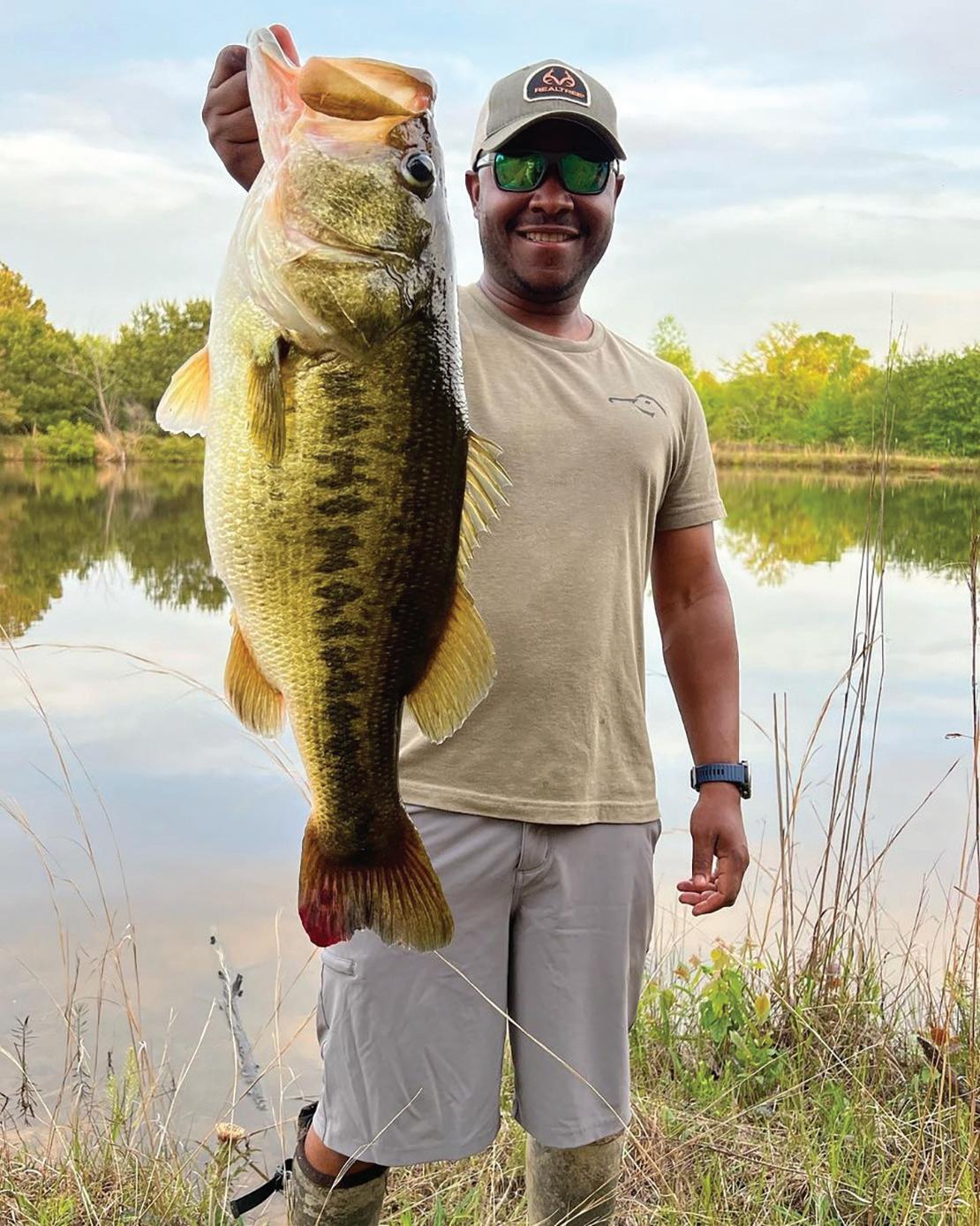
Mark Daniels Jr. and his 11 lb. plus largemouth caught shore fishing.
a Shakey Head technique.”
When it comes to rigging his Carolina Rig technique Daniels is adamant as to the terminal tackle he ties on! “Years ago, anglers had fewer choices for terminal tackle. I spool my Johnny Morris Signature Series
Platinum Reel 6.8:1 gear ratio with Seaguar 17-2025 lb. InvizX Fluorocarbon, 1/2-3/4-1.0-1.25 oz.
Tungsten Bullet weight, plastic bead (Not Glass,
ing on my baits of choice, my Rod is a 7’3” Heavy, Fast Action Favorite Pro Series.”
Some of Mark Daniels Jr. baits of choice include, Missile Baits Destroyer and Baby Destroyer, Senko, Fluke. For additional Carolina Rig tips and more, log unto Daniels YouTube Channel at www.youtube. com > MarkDanielsJr > videos

by Karen Holmes, Cooper, ME
One of the delights of spring for me is always seeing the return of the beautiful little hawks called American Kestrels. They are easy to spot as they sit on the electrical pole wires alongside the extensive blueberry fields in nearby Meddybemps, Maine.
In early May I counted six of them there and hoped at least two would stay and raise their babies there again. I have always

admired their skill and intensity when they are hunting. They eat mice and frogs, but they enjoy
long like all members of the falcon family of hawks.
Hovering like a helicopter over it, they dive down and grab with talontipped feet. It is easy to tell the male from the female kestrel. Both do have rusty backs. But the male has
kept records of migrating raptors for several decades. Also the Christmas Bird Count by the National Audubon Society, the Breeding Bird Survey and other bird watching activities have documented a steady and troubling de-
Once it was the most common falcon and seen raptor bird species in the United States. Key migration sites such as Hawk Mountain Sanctuary in Pennsylvania and Cape May in New Jersey have kept records of migrating raptors for several decades.
insects too, especially large grasshoppers. Once they spot prey, they will rapidly leave their wire perch with those wings, tapered and

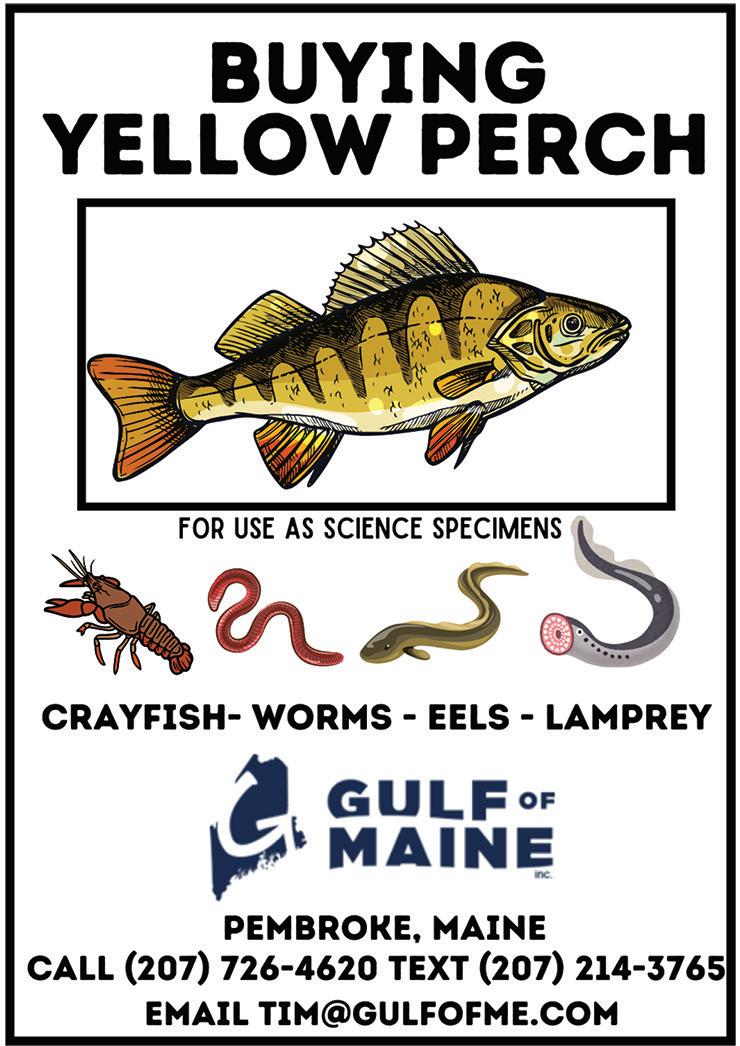
gunmetal blue wings, black spotting on its back and sides and two vertical black stripes on its cheeks. The female lacks the blue wings and has black bars on the back and tail. The fledgling young birds look more like her. I enjoy watching them all until cold winds of the fall signal it is time to migrate south. I may not be able in the future to watch them return as the population of American Kestrels is in severe decline.
Once it was the most common falcon and seen raptor bird.species in the United States. Key migration sites such as Hawk Mountain Sanctuary in Pennsylvania and Cape May in New Jersey have
cline. No one knows for sure why this is happening. And there may be more than one cause. One could
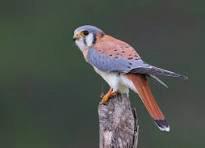
be the loss and degradation of habitat for feeding, breeding, migration and wintering.
Maybe such things as the rodenticides used for controlling mice in orchards or the neonicotinoid chemicals killing off plant-eating insect pests in agricultural fields are another. One theory also is that Cooper’s Hawks
are greatly increasing in numbers and they prey on other smaller birds like kestrels. Let’s hope whatever things are causing the decline of kestrels can be identified and counteracted soon. Meanwhile, I will cherish a certain memory of watching beautiful American Kestrels migrating in the fall. It was October 7, 1981 and I was at Sakonnet Point in Little Compton, Rhode Island, counting migrating hawks for a hawk watching organization. As I stood in the bed of my truck, I watched spellbound, as in just one half hour, 225 American Kestrels passed less than 100 feet over my head. It was a sight I will never forget. It is sad to think no one else may get to see such an event in the future.

Karen Holmes continues to be a volunteer for many organizations that make conservation and preservation a priority in her life. She will report in her next column about the results of the 2024 Annual Maine Loon Count she helps coordinate in Washington County, Maine.
Most outdoor folks like to eat what they bring home from the woods or the waters. And you like to cook it yourself, too right? So what is your favorite culinary lashup with fish or fowl? The Northwoods Sporting Journal would like to know. And we invite you to help us share your proud concoction with all of our readers. Our Northwoods Sporting Journal website:www.sportingjournal.com has a new addition: Outdoor Connections, which includes “Sporting Journal’s Top Shelf Game & Fish Recipes.” It has become a popular spot for visitors to find some great outdoor recipes, not from TV cooks, but from folks like you who live it.
Email us your favorite outdoor recipe to editor, V. Paul Reynolds, at vpaulr@tds.net. We won’t send you any money, or give you a new boat and motor, but we will list your recipe with all the others, along with your name.
If your recipe catches on and goes viral, we’ll figure out some kind of reward - say a new fry pan, a crockpot, or maybe a dutch oven?
So get crackin’...
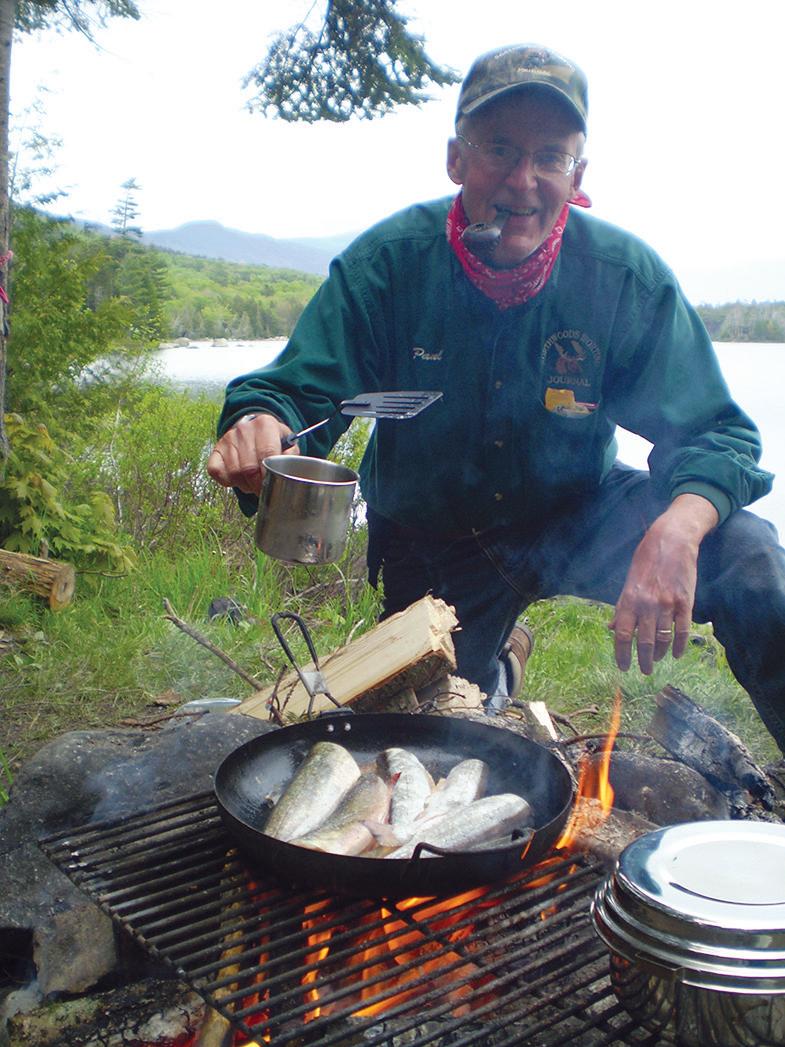
I would be a grand stretcher of the truth if I said every fly pattern I create works. That said a good number of them do and I get asked for many of the fly recipes I tie. Once in a
the lakes bottom, sand, rocks, mud, gravel or a mix of these.
Seldom does the first version not get altered. Many times, I tie a prototype and leave it on my ty-
I got a call from Chuck a few days later who said Bruce caught a nice LLS using the pattern and mentioned it seemed deadly in Maine. The pattern continues to validate itself catching fish so it has been dubbed the Deadly in Maine Streamer.
great while someone will ask me about what goes into creating a fly. Recently, a young fly tyer at a show asked me the question, here is a condensed version of our discussion.
Many fly tyers tie flies that attract anglers but don’t always attract the fish. My friend Rick reminds me that in the end it’s up to the fish. He is correct, often the patterns that are attracting to the eye are not the ones that work all that well. Additionally, a pattern may work one year and not the next. There are so many factors to consider that go into fishing a fly. Developing the pattern often is an evolution.
The first thing I consider when developing a new patterns is where it will be fished. Is the water clear and deep like Newfound or Sunapee in NH. Maybe the lake is a tannin color like many of the lakes in Maine. What makes up
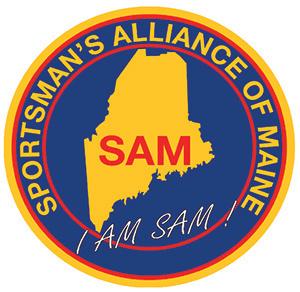
ing bench for days only to use a razor blade on it and begin from scratch tying something different. This past winter I came up with two new patterns. Both have worked this year. One will get some tweaking over the winter the other
tying prep table for weeks while I thought through the pattern. The fuchsia was too strong and it needed to be toned down. I took to fuchsia wings and placed a very light dun wing over them. It looked good but needed something else to settle it down a bit. I remembered I had a light gray guinea with white spots so I added that as a shoulder. The wings are tied on Rangely style, I like that for most of my streamers. It looked good.
For the body I used flat silver tinsel with an oval gold rib, sparse white bucktail belly and a red throat. The underwing is UV gray krystal flash but only two strands. I put four
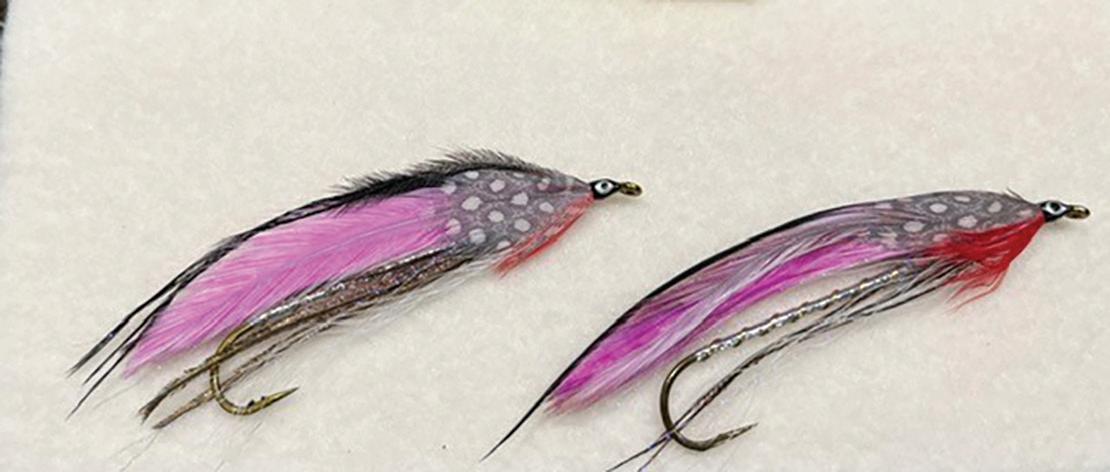
I’m not changing.
Here is how that pattern evolved. Several years ago, on lake Sunapee I was trolling and having no luck. I switched to a fly with some pink in it and bang I had a nice salmon.
Over the next winter I had Ewing dye up some different shades of pink and one came out fuchsia. That cape sat on my
strands of black ostrich herl as a topping over the wing. The head is black with a pearlescent white eye and black pupil.
Here was my thinking on the component’s that did not make up the wing. Sparse white bucktail belly is the staple look to most baitfish and the red throat looks like gills. The body I was looking for the silver
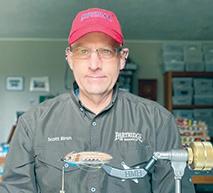
to stand out and adding the gold just gives it a two-tone look. The flash has been effective in many modern patterns. Jim Warner was very big on adding flash when it came available to many of his flies. He also liked the red throat.
The black ostrich topping gives the pattern a “smelty” look and I wanted to make certain I incorporated that in this fly. If I could find silver pheasant crest long enough, I would have used that but if you find any long ones I would say your very lucky. The ostrich is not as durable but if you get a quality dyed plume it will serve you well. The cheaper ones bleed black dye on to the wing and change the fly completely.
Why paint the eyes and not use jungle cock nails? This would be something that could be changed if the pattern did not work but over the past few years painted eyes seem to have worked better.
Chuck and I were trolling and having no real luck on a sunny June day and I tied this pattern on. In a matter of a few minutes a nice 19” LLS decided it would be nice to attack this fly and after about 15 minutes we landed it in the

by Scott Biron, New London, NH
net. The fly was validated with one fish.
When the day ended, I gave Chuck the fly, he was taking Bruce out later that week because he had not caught a LLS on the lake. I got a call from Chuck a few days later who said Bruce caught a nice LLS using the pattern and mentioned it seemed deadly in Maine. The pattern continues to validate itself catching fish so it has been dubbed the Deadly in Maine Streamer. I will keep you updated on this fly and it’s results over the next year but it seems to be working the way I envisioned it.

Scott Biron learned to tie flies and fly fish back in the1960s in the North County of New Hampshire. He has fished many of the streams north of Route 26 in NH and his favorite the Androscoggin River. He is a Master Artist in the NH Traditional Arts Program and instructs fly tying both nationally and internationally. He is on the Ambassador Pro Team for HMH Vises, The American Museum of Fly Fishing and Partridge of Redditch. Ewing has come out with a signature series line of feathers under Scott’s name.
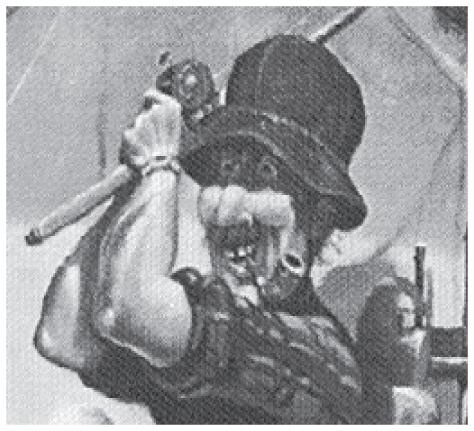
by Bob Cram, (Alias T.J. Coongate) Medway, ME
Me and Joe stepped through the front door of The Emporium right smack into the middle of a very uncomfortable silence. Eben Ramdown, face slightly red either from nervousness or embarrassment, piped up from behind the counter.
“There ‘e is, right there! Joe, I been tellin’ these TV fellers how you was jist the man to take ‘um fishin’ over onto Chamberlain!”
“And I’ve been telling them,” said a tall, slim man with a pronounced receding hairline, “that they already have the best guide available. Darrell Sparse, at your service.” He held out a hand and smiled a slightly condescending smile.
Joe took the proffered hand and Sparse, sensing no opposition, turned to introduce the rest of the party. “Boys, I’d like you to meet Feldman Shoot, the director, and Cable Knotweed, the cameraman, for the Outside In Maine TV show. And, of course, I’m sure you recognize the host of the show, Miles Sittish.”

I’d recognized Sittish immediately from his television show. Most Sunday evenings found me glued to the TV watching Miles Sittish wander the length and breadth of Maine, enjoying the finest hunting and fishing the Pine Tree State had to offer. He was a big, florid-faced man with a genial way of talking and explaining things. He smiled now as he shook Joe’s hand.
“Mr. Ramdown, here, seems to think we should have you along as a guide.”
“Joe’s fergot more’n
remained pasted on his face. “It’s true I reside in Belfast. But I have guided in many areas of the state and I assure you,” the condescending smile widened slightly, “this won’t be my
Miles Sittish, smartly attired in Orvis chest waders and flyfishing vest, was chest deep in rushing water, holding desperately to the top of a nearly submerged rock.
most folks knows about the Allagash,” Eben returned stubbornly. “Nothin’ agin Mr. Sparse, here, but, after all, he’s from Belfast.” He named the coastal town with something approaching disdain.
Sparse’s eyes narrowed a bit but the smile
first big day on Chamberlain Lake.”
“So, when are you going over to Chamberlain fishing?” I asked in an attempt to relieve the slightly stilted atmosphere.
“Tomorrow morning at first light,” Feldman Shoot replied. “We need to
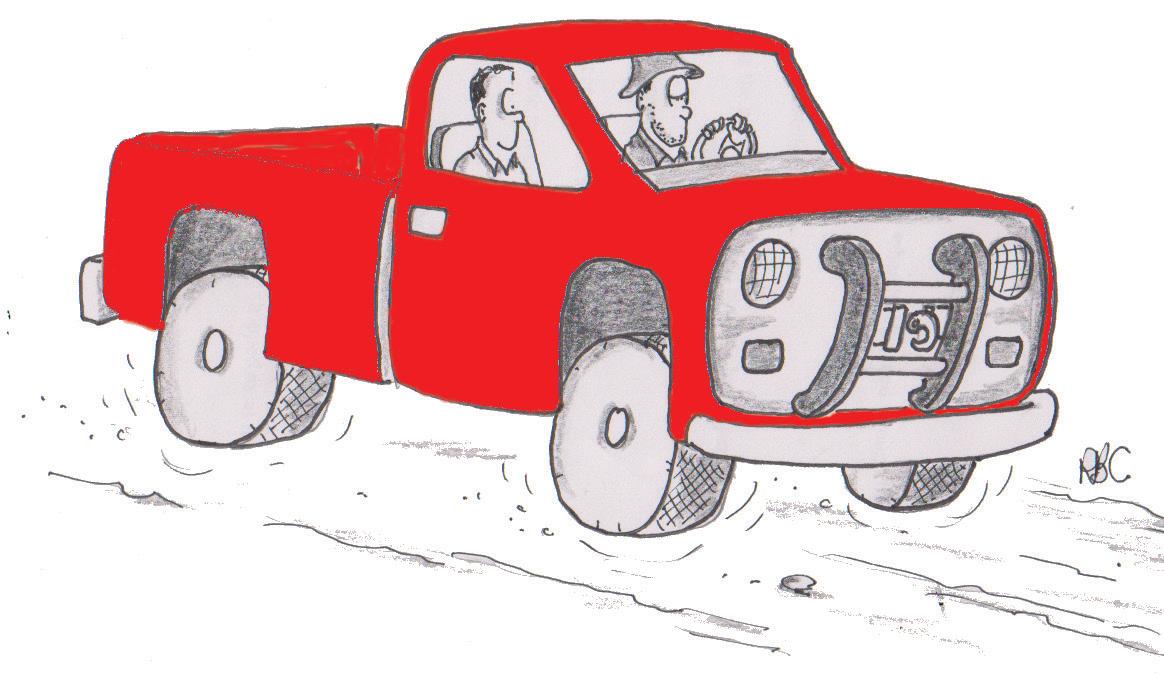
If
get as much show footage as we can on this trip and I want to get a lot of B-roll of the Chamberlain area to splice into other shows.”
While I tried to get my mind around the exotic terms, Joe spoke up. “Wouldn’t go tomorrow.”
“And just why not,” Sparse said critically. “Won’t the fish be biting?”
“Winds gonna blow hard from the nor’west tomorrow. That lake’s 17 miles long. Piles up waves somethin’ fierce when it’s got the whole length of the lake ter build on.
Sparse shook his head. “I checked with the weather service just an hour ago. Partly cloudy with light southwest winds for tomorrow. I don’t think we’ll have much problem.”
“Your funeral.” Joe turned to the counter.
“Gimme a bottle of Ben’s 100, Eben. Black flies been uncommon vicious in the evenin’s over on Munsungan.”
As the TV party headed outside, with Darrell Sparse talking nonstop about the next day’s fishing trip, Miles Sittish stopped beside Joe. “Say, do you really think there’s going to be a blow tomorrow?”
“Yup.” Joe pocketed
the bottle of Ben’s.
“Darrell has a pretty big boat,” Sittish looked worried. “We need some fishing footage quite badly.”
“Maybe it won’t be too bad,” Joe relented slightly. “Or maybe Sparse kin git you up into Mud Pond Cove and stay outa the wind some. Should still be some good trout fishin’ in the cove.”
Sittish still looked doubtful, but he followed the others out to the waiting vehicles.
It was two days later before we saw the television party again. Me and Joe were fishing the pool on the Allagash River below Churchill Dam. We had just reeled in our lines and were talking to the ranger, Tom Coon, on the road near the dam when the big van came rolling up. The whole crew looked slightly bedraggled and somewhat the worse for wear as they stepped out and stared at the river below to the damn.
“So,” I said, “did you get a lot of footage on Chamberlain.”
“Yeah,” Cable Knotweed muttered sourly. “All kinds of film of five foot
(Cont. from pg. 16)
waves, rocks and a few tangled spruce trees.” Darrell Sparse flushed to the hair roots.
“We’d just started up the lake,” Feldman Shoot explained. “The wind was raging and we were climbing right into the waves. Then the motor died. We barely made it to one of those little rocky islands along the southwest shore. Had to spend all day and the night there, before the ranger came up to the next day and towed us back down to the thoroughfare.”
“Coulda happened to anyone!” Sparse said hoarsely. “Anyway, we’ll get some good trout fishing footage down along the river.”
“Won’t get much,” Tom Coon interrupted. “I’m opening two gates shortly. The river’s going to get pretty high.”
“Can’t you wait a while?” Sparse asked desperately. “Let us get a little filming time!”
The ranger eyed him sourly. “Look at the water level behind the dam. If I put it off much longer the lake will overflow the road.” He thought for a minute. “All right, I’ll give you two hours. But that’s all I can do. You better get off the river by 2:00 o’clock because after that all bets are off. You understand me?”
Sparse nodded enthusiastically. He, Shoot and Knotweed, followed by a reluctant Miles Sittish, gathered their equipment and headed off downstream.
I looked at Joe. “Well, you want to fish a while longer or head back to town?”
He looked thought -
fully after the disappearing television crew. “Let’s see if we kin raise another trout or two. Like to take one home fer supper.”
In the next hour and a half we caught and released several nice trout. Joe killed a fat 2-pounder and we waded ashore. As he cleaned the trout, he looked up at me.
“Why don’t you go git the jeep an’ bring it on down here. I wanna unload the canoe.”
I looked at him. “You don’t think Sparse is smart enough to get them off the river in time?”
“Do you?”
I went for the Jeep. When Ranger Coon came over to open the gates at 2:00 o’clock we had Joe’s big 20-foot Old Town in the water, loaded with spare life vests and a first aid kit. I hoped we wouldn’t need either.
“Thought we’d wait for the first flush an’ then ride ‘er on downstream, Tom,” Joe said slowly. “Should be a good run. Could we git yer to pick us up down to Bissonette?”
The ranger eyed the big canoe and its contents, then looked off downriver.
“Yep, guess I could do that. In fact, I’d prob’ly better.” He turned to the gate mechanism.
As the river rose markedly, we pushed off from shore. The roughest
stretch of water on the Allagash River, other than Allagash Falls, is the first mile and a half of river below Churchill Dam, known as Chase Rapids. It is simply a litter of rocks with water running through it. For the canoeist, the more water the better, since it buries most of the rocks and makes canoeing easier.
We slipped through the first pitch as the river continued to rise. Looking downstream I couldn’t see any of the TV people. Maybe they’d left the river after all.
“Slide back an’ sit on the bottom, jist behint the front seat,” Joe shouted over the rush of water. I grabbed both gunnels and slide back onto the bottom of the canoe. “Make it easier to get someone in,” he continued. “You kin switch yer weight easier from side to side.”
Around another bend, with Joe expertly wielding the stern paddle, I saw commotion near the east shore. Miles Sittish, smartly attired in Orvis chest waders and flyfishing vest, was chest deep in running water, holding desperately to the top of a nearly submerged rock. A 10-foot stretch of deep, rushing water separated him from the bank, where Darrell Sparse was attempting to shove a long branch out to him. The other two members of the

crew looked on anxiously. Joe began to paddle with deep, thrusting strokes, shoving the canoe ahead through the boiling water, angling across the current. I had run Chase Rapids many times in the past. Just ahead the river took a quick turn to the left, then began the long, sweeping right hand turn into the Devil’s Elbow.
“Gotta be quick!” I shouted.
“We’re onta him! Lend a hand!” Joe shouted back.
Then Sittish was beside the canoe, struggling in his heavy clothes. I reached over the side.
“Grab my arm!” He latched on tightly, then transferred first one hand, then the other, to the gunnel. I leaned far over to the other side, hanging out over the opposite gunnel. With a sudden heave, Sittish clambered over the side and fell into the bottom of the canoe.
“Hang on! Here we go!” Joe shouted as he dug his in his paddle, trying to straighten the plunging craft.
Sittish looked ahead at the turn, filled with churning whitewater. Immedi -
ately he heaved himself up onto the front seat. Pulling a paddle from beneath a thwart, he reached out with it to the right and pulled water toward the bow. The front of the canoe came around straight just as we entered the Elbow.
It was a wild ride for a few minutes, with water sloshing around the bottom and me scrambling about for the bailing can. Joe and Sittish handled their paddles expertly and finally we plunged through the last pitch of Devil’s Elbow and into the slack water of The Eddy.
As we floated there in comparative calm, Sittish laid down his paddle with a clatter. He looked back over my head, hair streaming water, a wild grin on his face.
“Now that was something! Haven’t had a run like that in years!”
“You don’t handle a paddle too bad fer a city boy,” Joe grinned back.
“City boy?!” Sittish snorted. “I’ll have you know I was born and raised in Haynesville! Still got a camp on the Mattawamkeag River!”

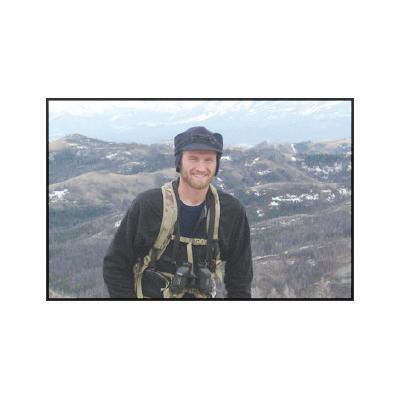
by Jeremiah Wood, Ashland, ME
In 1896, twenty-four year old Arthur Walden struck it north for Alaska in search of gold. He journeyed from Juneau to Dyea by boat, packed over the Chilkoot Trail and the soon to be famous Chilkoot Pass, and down the Yukon. The Klondike gold rush hadn’t yet started, and
macks discovered gold in the Klondike and Dawson quickly became a city of forty thousand people. Circle was all but abandoned and the real gold rush was on.
Walden was no slouch, and he quickly found that staking claims and mining was a gamble that paid off
Those who murdered were executed, those who robbed or hurt others were either killed or banished. Walden marveled at how effective the system was and how peaceful Circle actually was.
Dawson was a one cabin town. All traffic headed down the river to Circle City in Alaska, where the Birch Creek mines were the source of the first strike. Just a year later, Car-
for some, but left most men poor and hungry. He was a good man with dogs, and could see the money to be made freighting supplies for the miners. He became a dog team freighter, called
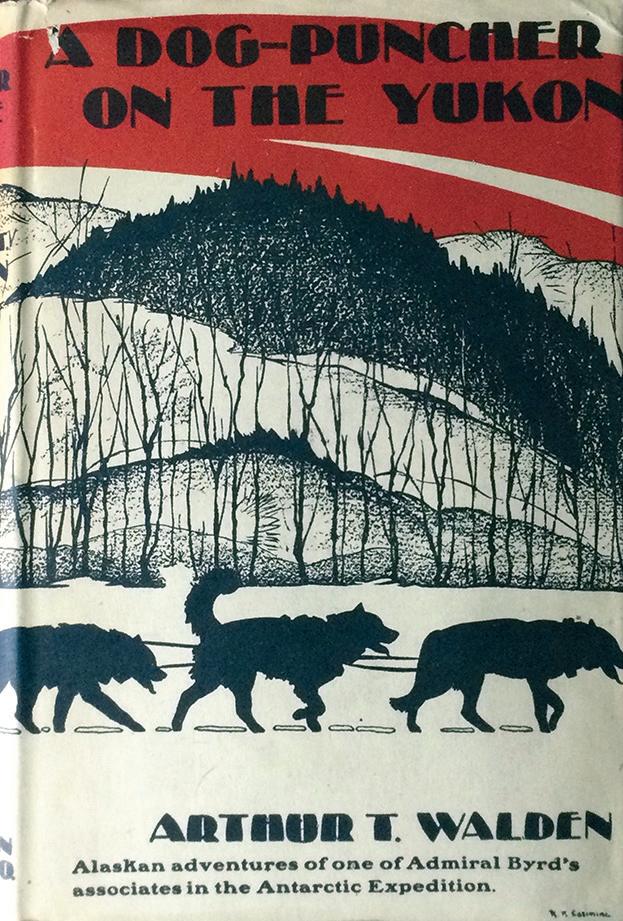
a dog puncher in those days, and made a good living at it for years.
Being in the country in the early days before the big rush and experiencing the boom as it unfolded gave Walden a unique perspective on the area and its people. He was a keen
observer, a good judge of character, a fair dealer and a straight talker. Those were important qualities to have in frontier times.
Alaska had no government in the early years, but although there was no official law, Circle City was an orderly place. The



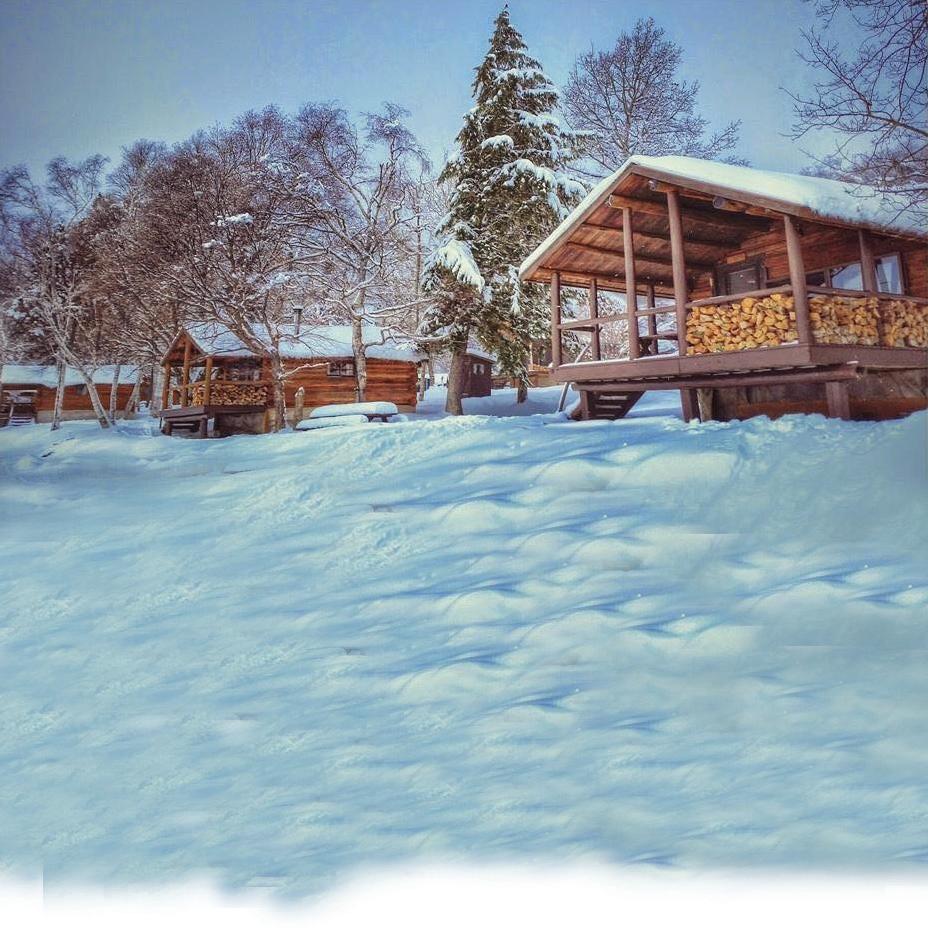
people governed themselves through self-imposed miner’s meetings, which functioned as court and whose judgements, as far as everyone there was concerned, had the full effect of law. Those who murdered were executed, those who robbed or hurt others were either killed or banished. Walden marveled at how effective the system was and how peaceful Circle actually was.
Spending enough time around miners who struck it rich can get to the adventurous spirit in any man, and Walden couldn’t help but leave the freighting work and return to prospecting from time to time. He eventually followed the new gold rush down river and up the coast to Nome, spending a winter there nearly starving to death.
Walden left the North and settled in New Hampshire, making his living as a dog breeder. He wrote a couple of books about dogs and is credited with bringing dogsled racing to the Northeast.
Although he never struck it rich with gold, the experiences Arthur Walden lived through in the gold rush frontier returned a lifetime of wealth in memories and stories to tell. He recounted those days in a 1928 book, “A Dog Puncher on the Yukon”. The original book is hard to find, but modern reprints can be bought, and an electronic version is available for free online. I listened to the audio version on Audible.

Jeremiah can be reached at jrodwood@ gmail.com
When I was a very young man who loved to hunt deer, not much thought, quite frankly, was given to the why of my hunting addiction. Somehow, when I got in the deer
I
woods on a frosty November morning and waited for hours along a cedar bog for a big buck to show himself, it just felt right. I knew that I belonged there. Oh sure, when I killed my first deer, there was that predictable emotional duality that visits most hunters sooner or later: satisfaction for having filled the tag and the home freezer and, contrastingly some sadness at having dispatched one of God’s magestic creatures.
Now that I am an old man who still loves to hunt deer, I find myself putting a great deal of thought into the why of my hunting addiction. I am told that this is not unusual, that most



dedicated deer hunters pass through certain phases as their beards turn grayer and their treks in the deer woods get shorter.
For some old timers, the final phase is simply
along.”
to quit the hunt altogether, either for health reasons or simply because the lust for
and I pray for the physical condition and the energy to get me out there in the hardwoods and back to the truck safely. Hunting philosophers and others who delve into the psyche of us hunters would say that I am in the so-called Legacy Phase. I grow reflective and perhaps even attempt to wax inspirational. I worry about the continuation of the hunting traditions and the lack of young people being “brought along.” I look back on my deer
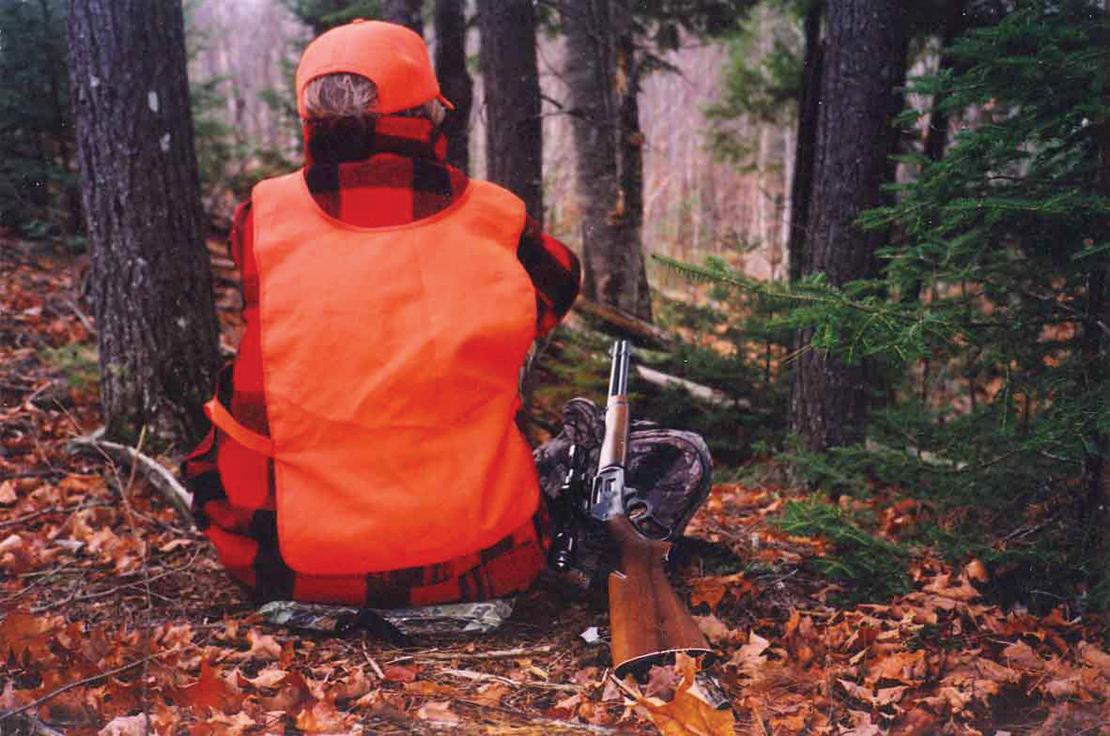
As you learn about animals, you will also learn that the presence of hunters in the animal world is natural. A hunter is a predator participating in a world where predation belongs. (Photo by V. Paul Reynolds)
the hunt lost its appeal.
Not me. Being there in November still stirs me
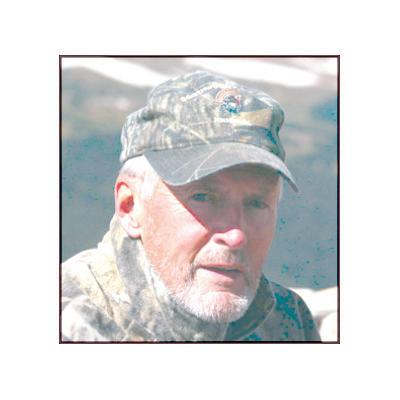
by V. Paul Reynolds, Ellsworth, ME
at least for me, involves seeking out the innermost thoughts of other hunters, especially those whose capacity to explain this duality, or hunter’s paradox, eclipses my own. Here are a couple of excepts on this subject that resonate deeply with me.
“As you learn about animals, you will also learn
that the presence of hunters in the animal world is natural. A hunter is a predator participating in a world where predation belongs. Just as predators belong to the natural system, an ethical hunters also belongs to the natural system. That sense of belonging becomes real when (Paradox cont. pg 23)

hunting experiences with indelible memories.
Part of this phase,
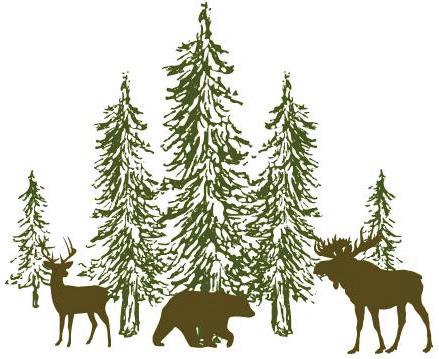
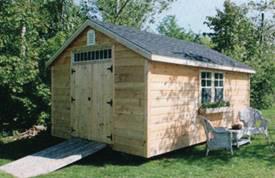

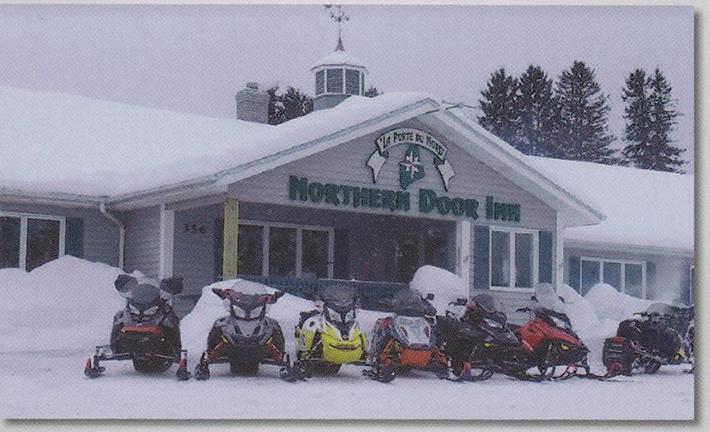

John Gierach doesn’t like you. He ain’t too crazy about the rest of us either. Apparently, somebody from New York made a tongue-in-cheek remark about Tom McGuane’s penchant for quiche while dressing like the Marlboro Man, and John decided then that everybody on the east coast had a snooty, myopic view of all western
by Mike Maynard, Perham, ME
going on about. Damn thinskinned western writers…
In his defense, he’s a wonderful author who seems to oppose all new dam construction, so there’s that going for him. Did everybody get drawn for a doe permit this year?! I hope you finally did; after all the years of watching other people get drawn, it was your
If I could bottle the smell of woodsmoke mixed with Old Woodsman’s, I would. I’m not a cologne guy but I would wear that, even in church.
outdoor writers. He also wants every state west of the Mississippi to secede; says we’re sending them all of our trash, and he’s sick of it. Well, I know for a fact that my trash goes to the landfill in Fort Fairfield, so I don’t know what he’s





turn, you were due, baby! They’ll never give me one. How do I know this? Because, I asked them. They replied, “Never!” Actually, I will be turned down once again purely for economic reasons. I applied for zones six and three. Well, I live,
literally, on the border of those two zones. My house is in six and my mailbox is in three. They won’t give me one because I live here; the state won’t make any money off me. They give all the permits out to people from Pennsylvania, or wherever, who will spend a ridiculous amount of money while they’re here.
The state has also thrown in a new wrinkle in denying local hunters a permit. When I filled out the application online and then submitted it, it just sat there, for like 20 minutes. It did nothing, then, finally, it said, “We’re sorry, but you’ve timed out. Ha-Ha” (I made the Ha-Ha part up). So, I went back in and started the application process all over again, only to be told that I had already submitted my application, and that if I wished to edit
any of my previous filings, I should refer to my confirmation number. And here’s the fun part; they didn’t give me a confirmation number! When I tried to contact F&G and get this
scene in front of the Ashland One Stop during moose season. Magellan didn’t pack as much gear for his around-the-world journey as an out of state moose hunter does. It looks
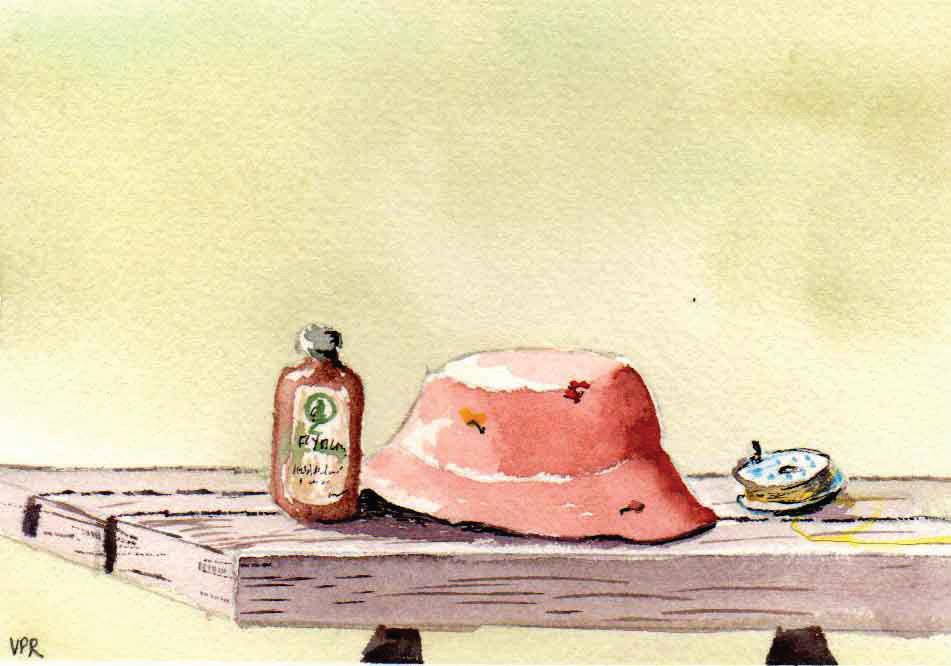
straightened out, they sent me down the rabbit hole of death; I barely made it out alive. Am I a conspiracy theorist? Not yet, …but I’m warming up to it.
We’ve all seen the
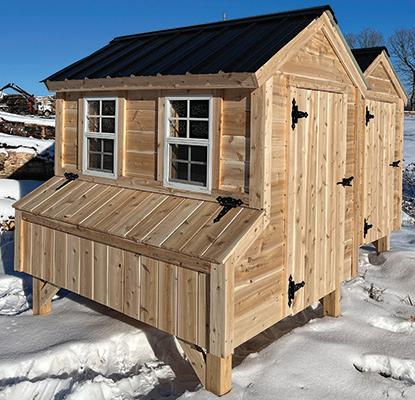
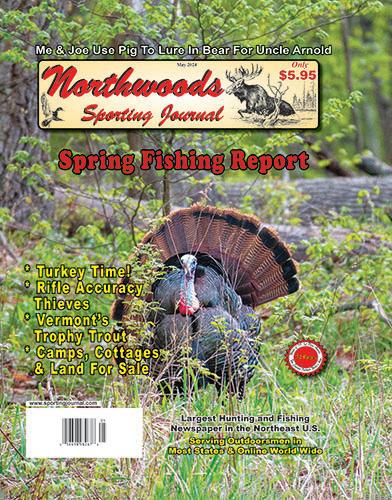
like a military supply convoy. The logistics are staggering. A huge number of businesses here in the County rely on fall and (Cologne cont. pg 21)
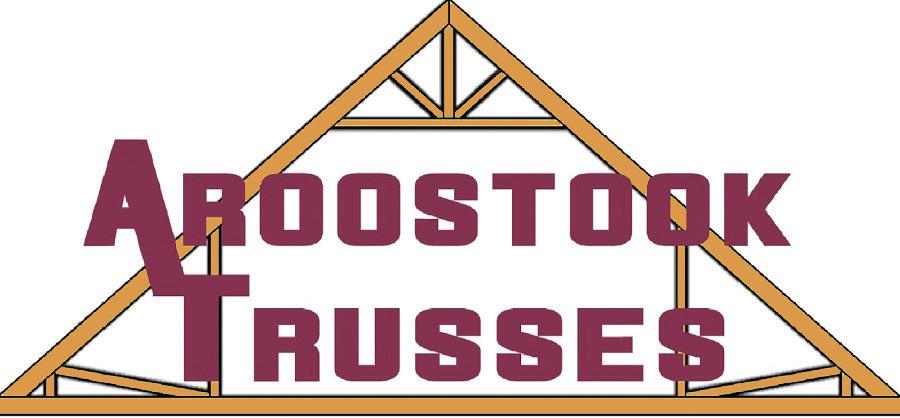
(Cont. from pg. 20)
winter seasons for the bulk of their income, and last winter was brutal on everybody. I get it, but if the gods would just grant me this one boom, just this once, I promise I’ll go the Ruska Coffee shop in Caribou and buy a $5 cup of coffee instead of filling my Yeti cup at home. See, I can do my part, too.
There are quite a few does running around this year. I’ve been keeping track of them in a notebook.
I’m seeing more deer out in the big woods than I have in the past, so that’s hopeful, too. It seems like the grouse had a much better hatch this spring than last; again, a very hopeful sign. Turkeys are everywhere, some decent bear sightings, and a bunch of juvenile moose. I did some early scouting back in July but the banner crop of deer flies drove me out of the woods. I’m not sure I remember a worse year for these little horrors. Bug spray doesn’t deter them much. I do have

a nuclear option, but I hate using it. I have a few bottles of Old Woodsman fly dope lying around, the real stuff; 50 years old if it’s a day. But damn… Hose yourself down in that toxic stew and then go slog around the woods on an 80 degree summer day and it’s more than the hardiest soul can bear. Lethal to the flies, and to you. But sometimes, when no one is looking, I’ll take the cap off a bottle and give it a big sniff. I am immediately transported back in time to my childhood. Halcyon days of unadulterated joy. Brook trout and fiddleheads, crawling through the swamp cabbage on my belly, the smell of wet earth in my nose. Trying to get close enough to the stream to dangle a worm into that big black hole that always holds a 12” trout. If I could bottle the smell of woodsmoke mixed with Old Woodsman’s, I would. I’m not a cologne guy but I would wear that, even in church. Oh, so, the state just got back to me on the whole any-deer black hole, thing. The nice lady said,


“Gosh, just about the time you logged on, the entire system crashed. Try again in a few days”. I told her I knew what she was up to and that she wasn’t going to get away with it. You could actually hear the self-satisfied smirk on the other end of the phone as she said, “Oh, but we will. You have a wonderful day, sir”.

Mike Maynard can be reached at perhamtrout@ gmail.com
DISTRIBUTOR NEEDED! The Northwoods Sporting Journal is looking for a part-time distributor for the Southern Maine area. Applicant must have personal transportation and will be responsible for delivering the Northwoods Sporting Journal to stores in Southern Maine on a monthly basis. For more details contact Alicia at 207-732-4880 or Email: info@sportingjournal.com

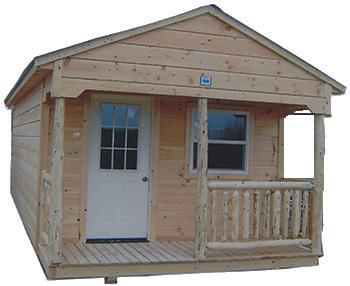






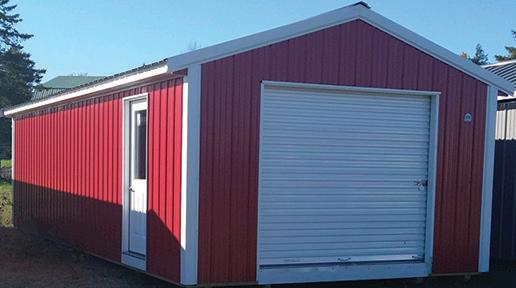
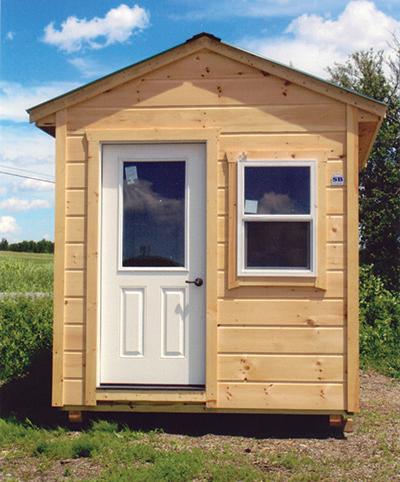
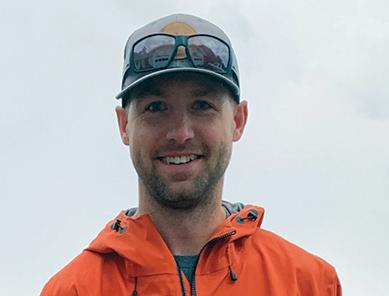
One year ago to the day Vermont again experienced massive flooding thanks to Hurricane Beryl. The damage was quite devastating again for many of the same communities
Though
by Ben Wilcox, Essex, VT
year. Most people assume that fish could not survive in these conditions. Well, it turns out that a lot of water is pretty good if you are a fish. In fact, since last summers flooding and
water and floods
that got hit last year, and extended east into New Hampshire and Maine. Devastation of homes, businesses and property have been tough to look at, but how have wild trout been affected?
I have been asked this question a lot over the past
prolonged period of wet weather, the wild trout fishing has been the best I can remember. We have seen more large trout than in recent memory and greater numbers of all age classes of fish in just about every stream we have visited. Even some of the rivers
that saw the most devastating flooding, have been fishing great. Surely there have been mortalities to trout during extreme flood events, but these trout have grown and evolved in ever changing river environments and know where to
an

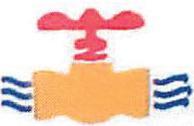
go and how to survive. How can this be when so much pollution, sediment, and debris has floated down the rivers? I think the answer has a few key factors. Higher flows and large amounts of cool ground water seeping into the rivers allow the streams to stay cool even during extreme heat. Fish have not been under thermal stress and there has been more area for trout to spread out from one another. They are not confined to deep holes and springs and can occupy the entire river all summer. High and dirty water also hide the trout from
predators such as osprey and mink. Increased flows bring lots more food into the drift from dislodged earthworms and grubs to aquatic insects. In short, aside from surviving the short window of raging flooding, the fish are very happy and feeding heavily. Last fall the trout were
top of all of these factors, fishing pressure is way down or almost non existent because the average angler does not like to fish high flows or muddy water. Therefore less fish are being killed and eaten.
The big challenge we have had has been navigating high flows and finding
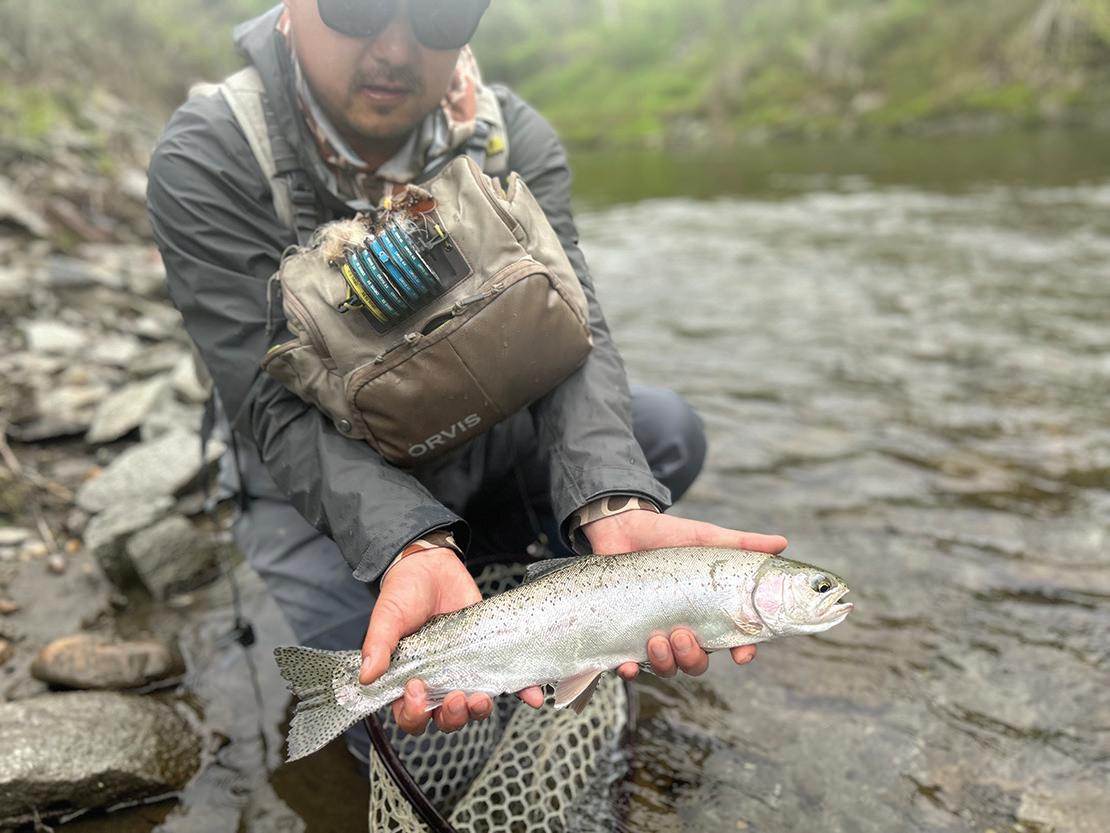
shaped like footballs and having that extra body mass allowed more of them to survive the winter. On
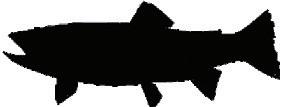

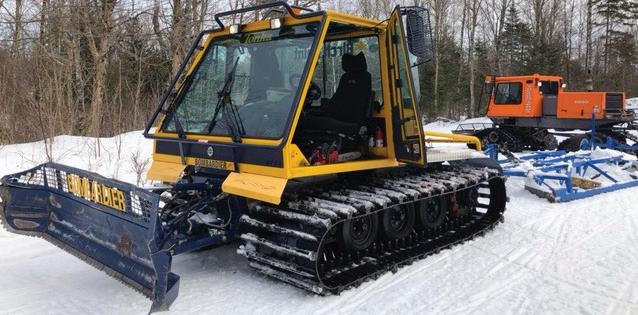


windows to fish a particular stream. This can be tough for new clients who have never waded a river before and may trips have been cancelled. We have been on smaller streams much more and have been constantly looking for the rivers that are starting to clear up and drop. When the water is stained but not muddy the fishing can be very good. 1-3’ of visibility is perfect, and you can often get away with fishing big nymphs and streamers, but do not overlook dry flies and terrestrials.
Though high water and floods provide an opportunity for trout to (Flood cont. pg 23)
(Cont. from pg. 17)
“You ain’t!” Joe looked his surprise. “Figured you fer a flatlander. Guess I’ll have ter watch some o’ them shows o’ yorn. Man kin handle the ash like you jist did, might be somethin’ to see in them shows after all.”
“In the meantime,” Sittish looked downstream,
(Cont. from pg. 22)
flourish in many cases, not everything is all roses. Major floods have the power to transform the rivers in both good and bad ways. Some rivers may be unrecognizable and have all new pools and channels. Wade with caution. These changes may be positive or negative. Often pools are scoured out and deepened, but just as many may be filled in with new sediment. You may need to discover new productive areas of river. Likewise new wood may have entered the river from bankside trees collapsing or existing woody debris may have been washed away. There are many instances of river habitat degrad -
“how far we got to go before we can get off the river?”
“The ranger’s pickin’ us up at the ol’ Bissonette Bridge crossin’ a few miles downstream. Ain’t nothin’ but a little mild quick water between here an’ there.”
Sittish looked back at Joe again, a trace of amusement on his face. “Guess you didn’t have much faith in Darrell Sparse.”
ing following a flood. To make matters worse road, bridge and culvert repairs made by town road crews in a hurry to get roadways passable often channelize and remove in stream structure making habitat worse and actually making future flood events more damaging by allowing the water to move faster down stream. Natural flood plains free of roads, buildings and agriculture allow flood waters to rise unimpeded into the surrounding lowlands, slowing the flow of water and debris, and mitigating erosion and damage downstream. They also filter the water and provide even more places for fish to escape raging floods. This all translates into better habitat for fish and more resilient rivers,

“Not so’s you’d notice.”
“So tell me, do you know anyplace we can go and get at least a little footage of catching some fish?”
Joe began to stroke slowly and smoothly, turning the bow of the canoe downstream as I bailed out the last of the water.
“Been a brown drake hatch near the head of Munsungan Lake the last
with less catastrophic and costly damage to property. It would benefit us all to re-think building in these flood plains in the future. There is opportunity to use what we have learned from these flood events to build more resilient rivers, floodplains and infrastructure and decrease the devastation we are seeing with more and more frequency.

Ben Wilcox is owner of Maple Country Anglers, located in Northwest Vermont. He was a member of the USA Fly Fishing Team from 2020-2024. He is a registered Maine Guide and graduate of the University of Maine. He also owns a large Maple Sugaring Business, Amber Ridge Maple. These occupations allow him to be in the woods or water nearly
few evenin’s. The landlocked salmon is takin’ ‘um pretty reg’ler.”
“How would we film, with just one canoe?” By tacit agreement, neither man mentioned Darrell Sparse and his boat.
“Got me another canoe stashed where Chase brook coes inter Munsungan. We kin put the film crew in that.” He looked suddenly thoughtful. “Guess I’m
every day of the year. He can be reached at maplecountryanglers@gmail. com , or on instagram @ benwilcox_maplecountryanglers.
(Cont. from pg. 19)
you hunt.”
-Jim Posewitz, Montana wildlife biologist and ethicist
“ I thought about life, and I thought about death and how one chance encounter, one single moment, holds the difference between the two. And, like so many other humans have, I pondered what does it all mean? And I realized that question is partly why I hunt. No. 1 is the protein and No. 2 the introspection, the indecision, the chance
gonna have ter be on TV after all. Don’t know how I feel ‘bout that. Always seemed ter me somethin’ like puttin’ your face up on a post office wall.”
“You’ll get used to it,” Sittish muttered as he picked up his paddle. “It’s seemed like that to me for years.”

to reach out and touch the bare, cold truth that life feeds on life, to feel a visceral connection to the uncertainty of life and the frightening certainty of death.”
- Heather Fraley, Senior Editor, Bugle Magazine
As a deer hunter, what do you think?

The author is editor of the Northwoods Sporting Journal. He is also a Maine Guide and host of a weekly radio program “Maine Outdoors” heard Sundays at 7 p.m. on The Voice of Maine News-Talk Network. He has authored three books.Online purchase information is available at www.sportingjournal.com

For more than 20 years, the Maine Outdoors has been talking to outdoor people about hunting and fishing and anything related to the outdoors. Host V. Paul Reynolds interviews studio guests and takes your calls. Outdoor trivia questions and prizes! Now streaming live, worldwide. Google WVOMFM
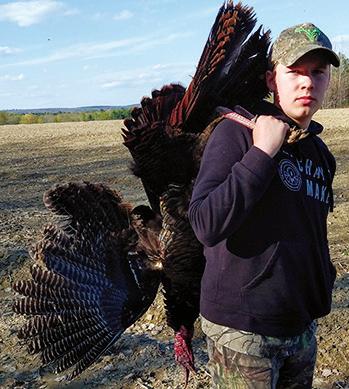
The fish appeared unfazed by my presence. I floated closer in the current, my hand aching from clutching my spear so tightly. Adjusting my aim, I quickly fired the spear. Its murderous barbs first pierced the water, then the fish. Iridescent scales flashed through a cloud of red, and I clutched the spear with anticipation…
by Jake Guay, Phillips, ME
trawl, weir, gaff, seine, gill net, trap, or set lines (Title 12, §12656).” A bit of a letdown, admittedly. But, as I perused the document further, I found something more exciting: “Suckers: Persons licensed, or otherwise entitled to fish, may take suckers for their own use between April 1st and June 30th from all rivers, streams and brooks open
The suckers were just ahead. About six fish were visible to me. Counting was hard underwater. I was too worried about getting more air while simultaneously fretting over which fish to spear. I noticed a large adult on my right.
The previous night, I was pawing through Maine’s fishing lawbook, looking for any and all rules around spearfishing. The first shred of information pertaining to spearfishing said this: “Illegal Use of Implements: (...) Except as otherwise provided, it is unlawful to fish with a grapnel, spear, spear gun,

the bottom. As the current pushed me, I formulated a plan. I would move to the far side of the Sandy, and from there, in the weaker current and shallow sand, I would trudge upstream about 100 yards. I would then rejoin the current and ride it forward while I focused my bodily energy on attaining depth. Thus far, my attempts at getting close to the suckers had failed over and over, but I wasn’t about to give up just yet.
my body slowly fall to the bottom of the river as I approached the tree. The suckers were just ahead. About six fish were visible to me. Counting was hard underwater. I was too worried about getting more air while simultaneously fretting over which fish to spear. I noticed a large
and as the cloudy sky regained brightness and vividity, my ears reacquainted themselves with sounds of rushing water and cawing crows. This time, a dead longnose sucker, bent like a piece of macaroni over my spear, left the water after my head did. I was elated. After several tired
to fishing by use of a hand spear, archery equipment, or by snagging.” That was all I needed.
I grabbed my phone and checked the date. June 19th. I had 11 days. The next morning, I ran into Walmart and emerged with a mop, some resistance bands from the fitness section, and a frog spearhead. About two hours later, I sank into the Sandy river with my fully assembled polespear. After acclimating to the chilly water, I secured my goggles to my face and surveyed the fauna underwater. Suckerfish were everywhere on
As I reentered the current and lowered my head into the water for the umpteenth time, I saw a mess of suckerfish gathered under and around a submerged tree ahead of me. I put the loop of resistance band between the thumb and index finger of my right hand, and with my left, I pushed the bottom of the spear away from my hand. When the neck of the spear was level with my right hand, I wrapped my right hand around the neck of the spear. When I let go, the tension created by the stretched band would pull the back of the spear closer to my hand, where the other side of the resistance band was anchored. The head of the spear would move forward with enough force to cripple a soda can (yes; I did test this), and break bones, as I would later discover. I exhaled, letting


adult on my right. That one would have to do. I moved my arm and pointed my spear at it. The movement spooked the other suckers, and the fish I was focused on darted across my field of view. My right hand followed it dutifully. When I was confident in my shot, I freed the spear from my tired hand.
The spear flew true into the side of the sucker’s head with a thud, audible even underwater. Blood exploded from the fish’s long body. It shook violently, and for a terrifying moment, I thought I had wounded the creature. Soon, the fish stopped struggling and I became aware of a painful pounding in my head. I needed air. Badly. I adjusted my grip on the spear, and with my feet, I sprung skyward,
gasps for air, I swam to dry land, for a short rest. After another hour of the same, I finally decided to call it a day. When I got home, I took a shower (they don’t call it the Sandy river for nothing) and asked ChatGPT to make a recipe for the two suckerfish. A solid hour of experimental cooking had elapsed before I could proudly say to my family that my dinner had “sucked,” and with that I bade them goodnight.

Jacob Guay is a homeschooled teen who loves creation as much as he loves to write. As of June, he considers himself a novice spearfisherman, too. Curious readers can learn more by emailing him at jaguay26@gmail.com
Today’s world is crazy indeed! What’s wrong is right and what’s right is wrong. I know many of you will agree with this sentiment. The outdoors is a canvas for learning life skills, such as respect, patience, and perseverance.
ing folks what we have here is important. I feel it is critical to preserving what special fish and environment Maine has left.
Maine is special indeed! The state boasts the largest, intact population of wild, native brook trout
Mentoring my daughters Amanda and Annarose was one of my all-time joys in life. I’m very proud of both these girls in who they have become and challenges they have overcome.
These are just some of the things more important than ever, for our future generations to embrace. Being a Maine guide, the parents have bestowed to me their trust to introduce their children to our outdoor sports and culture. Teaching our young sports has become a passion for me. My wish for them is that they may pursue their passions in life, while being mindful of our natural resources and environment.
As I continue to work in Maine as a guide, it lends the opportunity to bring awareness and education to others. I very rarely meet anyone who can tell me the difference between invasive, wild, and native fish. While on a fishing charter or eco tour, teach-

in the continental United States. The artic charr, is indeed a rare, threatened species found only here in its most southern range of the fish. Other native fish in Maine are lake tout, land lock salmon and Atlantic salmon. There are so many fish and environmental reasons to protect and preserve what special features Maine has left. Unlike other New England States, Maine is the final frontier of the continental east, it still holds vast amounts of pristine, undeveloped wilderness.
Mentoring my daughters Amanda and Annarose was one of my all-time joys in life. I’m very proud of both these girls in who they have become and challenges they have overcome.
Amanda has excelled and persevered through her high school years. Growing up she always embraced a hands on, mechanical aptitude, such as equipment maintenance, farming, and
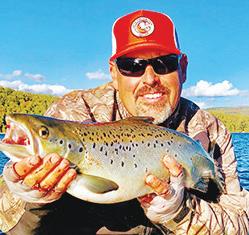
describing her childhood and what a huge impact the outdoors had made in her
follow their dreams and passion should be in everyone’s watch.
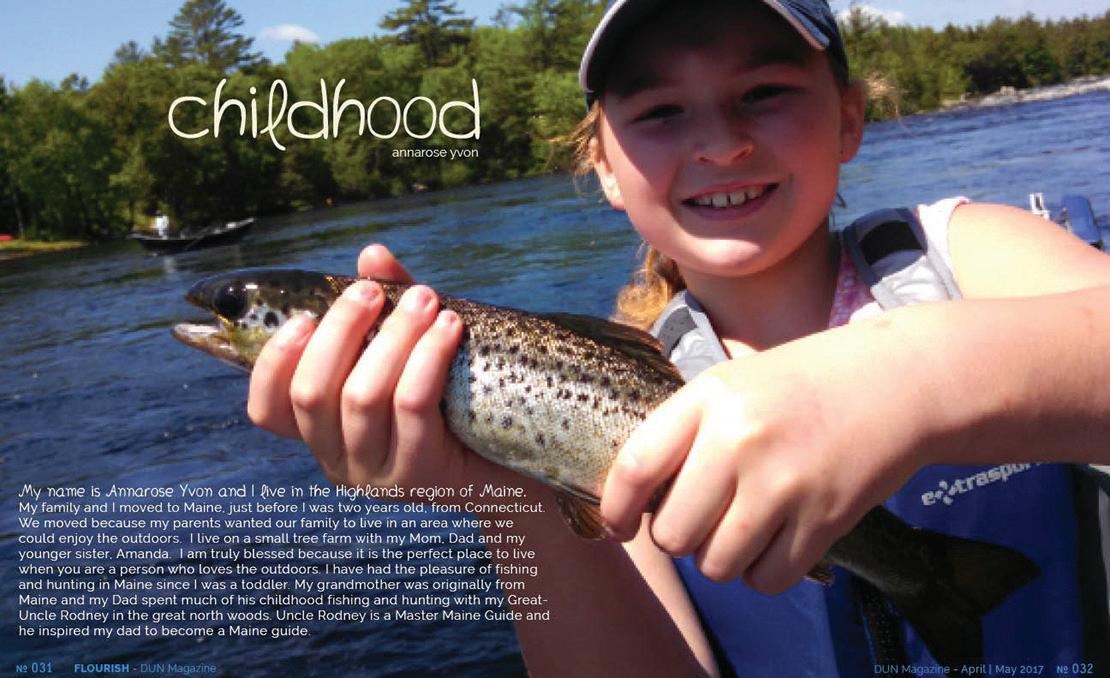
If you would like more information on Maine hunting or ice, fly/spin fishing techniques/ strategies for bass, pike, salmon, and trout, please feel free to reach out to me. I’m always happy to share my knowledge and experience to anyone, for a better day of field! On the water lessons and hunting lessons are of- a wonderful work ethic. The importance of exposing our young to the outdoors is most definitely, life changing. Today, both girls stay steadfast in working and developing their passions. Amanda, continues her high school, embracing a vocational technical path. Annarose, is a lover of all natural and wild things. She is working in her field and in process of completing her education, with a scholarship in forestry. Annarose at age 13, had written a short story
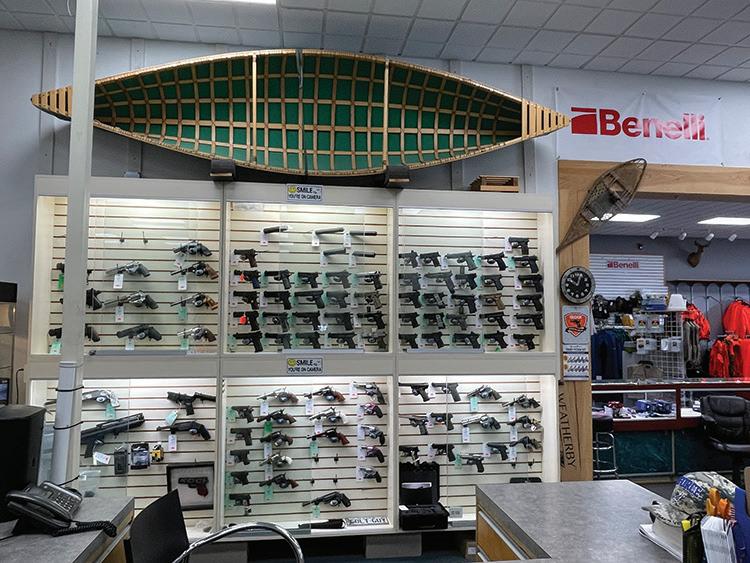

life. Her story can be read here: https://dunmagazine. com/posts/childhood Encouraging all our youth to fered by Rich at https:// twinmapleoutdoors.com/ contact-us/ (Passing cont. pg 34)

•Luxury Lodging - Private and Peaceful
•Recreation - Moose Safaris, Hiking, Camping & Paddle Sports
•Fishing - Fly and Spin Fishing
•Hunting - Moose, Deer, Turkey, Partridge
•Instruction - Fly Fishing, Survival, Firearms
Call to Reserve: 207-907-9151
Web:www.TwinMapleOutdoors.com Email:Info@TwinMapleOutdoors.com




September. It is a month like no other, full of opportunity and diversity for outdoor pursuits in Maine. Hunting seasons have started, but not to be overlooked; September can be as good as May and June for fly anglers. Terrestrials
By Jake Scoville, Machiasport, ME
are what’s likely to be on the menu for hungry trout, and my fly of choice? The Chubby.
I was living in Cody, Wyoming when I first tied
never used one in Maine.
The Chubby Chernobyl is a large, hopper-like dry fly most commonly used to imitate the famous salmon fly in that part of the West. The gaudy terrestrial imitation gets a trout’s attention, even if they aren’t looking up. It has evolved into one
The Chubby floats like a cork and is easy to see. You can fish it alone, but because of its buoyancy, it is typically fished in a ‘hopper dropper’ fashion, allowing heavy bead-headed nymphs to drift flawlessly.
a Chubby onto the end of my leader. My friend Riley couldn’t fathom I had
of the most popular flies in the West and is beloved by guides. The Chubby

floats like a cork and is easy to see. You can fish it alone, but because of its buoyancy, it is typically


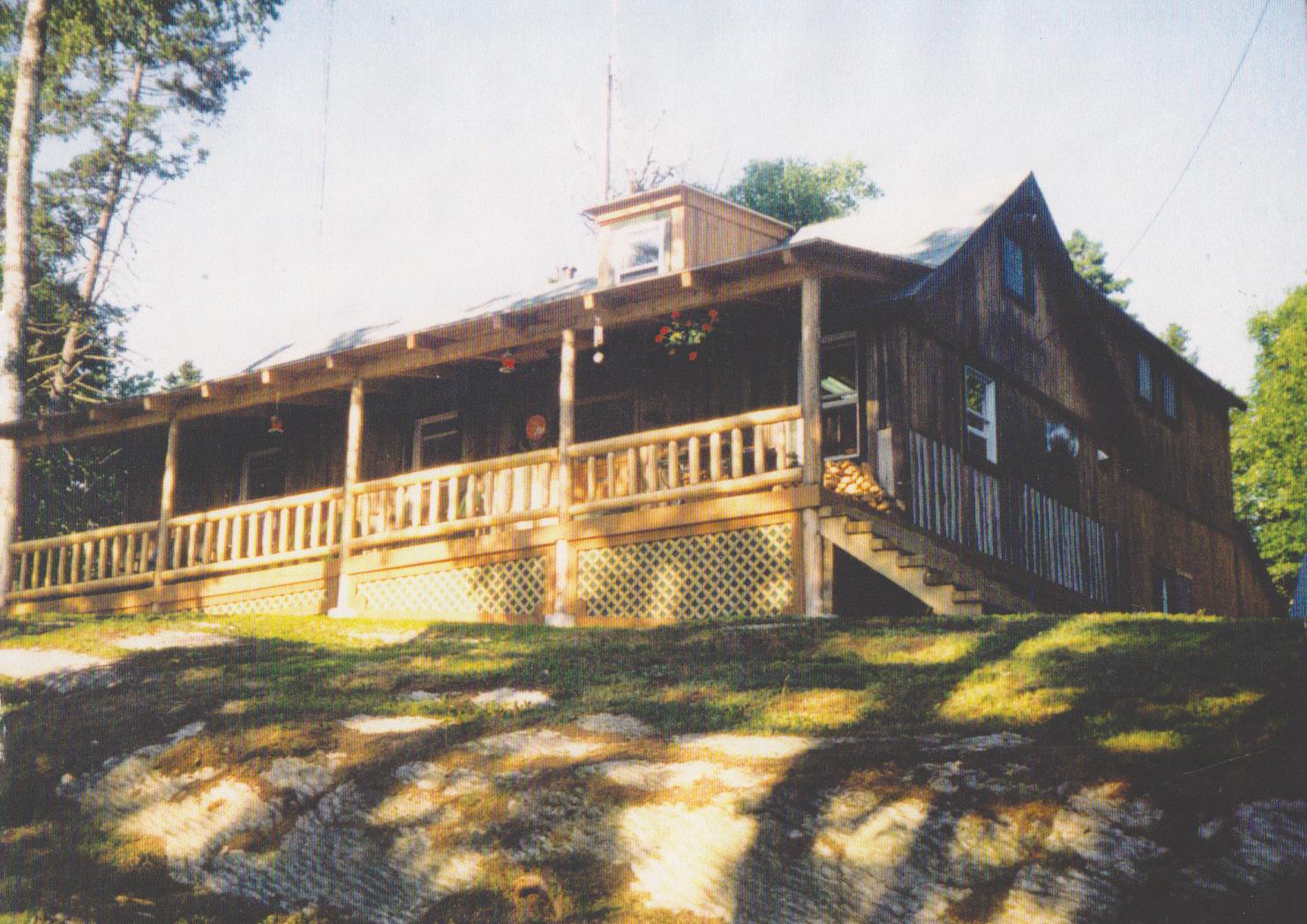
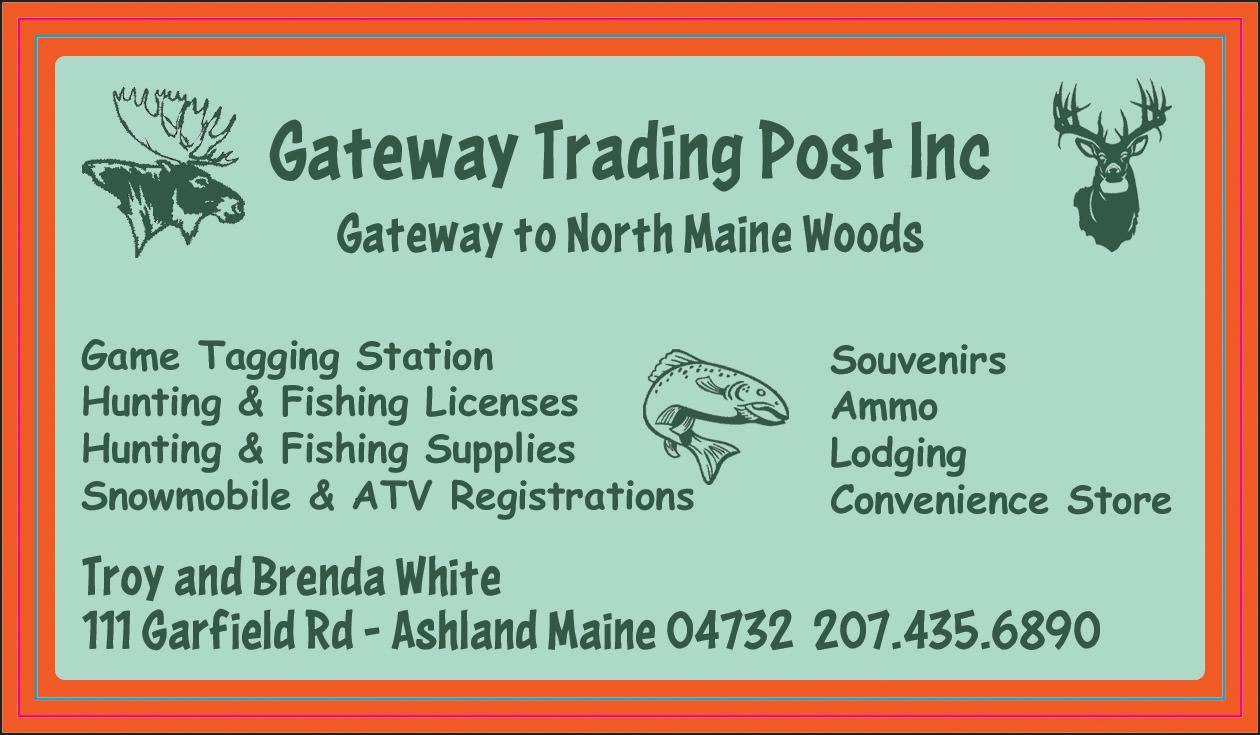
fished in a ‘hopper dropper’ fashion, allowing heavy beadheaded nymphs to drift flawlessly. I’ll be honest: the first few times I casted the Chubby, I said to myself, “Nothing is going to eat that stupid thing.” But boy, was I wrong.
Finest Quality

The Chubby has a foam body with long rubber legs and a dubbing-rapped hook shank. The wings are made with a synthetic, highly water-resistant product called ‘widow’s web,’ which helps the fly stay afloat even in rough conditions. It floats so well you wouldn’t think it ever needs floatant, but I still add a touch after every fish. It comes in many colors, but my favorites are purple dubbed bodies with tan foam. Trout love purple. Once I moved back to Maine, I never gave the Chubby a shot. It wasn’t until one spring afternoon while I was getting skunked that I finally tied on the secret weapon. I rolled the first cast slightly downstream and gave it a few big twitches. Naturally, a handsome 12-inch brook trout launched out of the water, Chubby in tow. That’s a typical eat while fishing a Chubby in brookie country. Irrationally chaotic strikes make it seem the fish are fearful a meal of that size and quality might slip past them. Twitches and erratic movement seem to generate uncontrollable strikes. It is unconventional compared to other dry flies, where a drag-free drift is the goal.

I don’t know why I

by Hal Blood, Moose River, ME
Fall is on the doorstep, and we’ll be trading our fishing poles for rifles, shotguns and bows soon. For me, putting out my bear baits has always been the signal of fall, even

them. They are the first to turn color, starting with a purple red. This year, I saw several of them turning color on the 27 th of July. Maybe this is a signal that it will be an early fall,
The day we put our baits in, it was a cool fifty-degree morning and we saw eight deer, two of which were bucks and one moose in three hours. I always think about how many deer there must be in the woods to see that many from the road. Relatively easy winters, as well as coyote control, is really working.
though it happens at the end of July. Every three days when I check my baits throughout August, I notice subtle changes in the foliage. It starts with the red maples, or swamp maple as many people call
since spring and summer came ahead of schedule. Usually as I begin to bear bait, the elderberries and raspberries are just beginning to ripen. This year the elderberries were all gone in the beginning of July
and the raspberries were peak and ready to go by at the end of July. It’s fine by me, as I’m ready for some cool frosty nights.
I’ve lived up here in the Jackman area for going on thirty-five years and I don’t ever remember seeing so many deer in the summer. I rarely saw a deer when traveling route 201 in the summer. Moose sightings were endless in years past, but now I see more deer than moose while traveling the main road. I quite often see them, just going the five miles to town. When my grandson Rylan and I are riding in the woods, we keep count of the game we see. We almost always see more deer than moose and usually it’s by a two to one margin. The day we put our baits in, it was a cool fifty-degree
morning and we saw eight deer, two of which were bucks and one moose in three hours. I always think
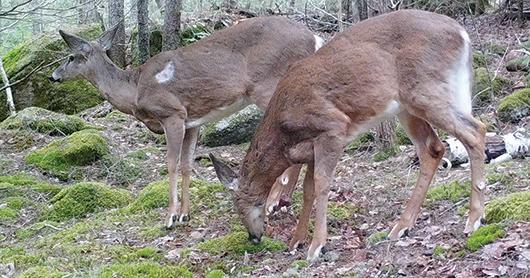
about how many deer there must be in the woods to see that many from the road. Relatively easy winters, as well as coyote control, is really working. The moose population has also started to increase over the past two years. There was a period of about ten years that very few calves survived the winter, due to moose ticks. As is mother nature’s way, the moose herd went way down due to the





ticks, which made less host for the ticks. Without the number of moose, the tick numbers dropped, and the herd is recovering. I hope the biologists learned from this and keep the moose herd in check, so it never happens again. In my opinion, we can’t keep this status quo of 4000 permits a year. If we do, the same thing will happen all over again. It’s like the old saying, don’t keep doing the same thing and expect a different result. We’ve already proven that isn’t detrimental to the moose herd with the zone 4 adaptive hunt. They’ve being giving out 500 permits and killing less than 150 cows or 27% success rate. It doesn’t mean there are fewer moose there, it means hunters are willing to get in the woods and hunt where they are. I guide moose hunters all over the north Maine woods as well as the adaptive hunt and I can tell you, if you get in the woods there are plenty

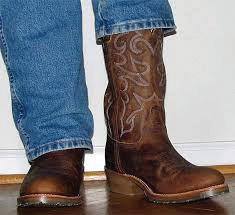

(Cont. from pg. 28)
of moose. No, there are not as many as there were 20 or 30 years ago, but we don’t want that many. They become a nuisance, not the majestic animal that they are.
We owe it to the moose to manage them for their health, not so the tourists can drive around in their car and see them. The moose that didn’t die from the ticks suffered terribly over the past ten to fifteen years. Most of the moose would rub the majority of their hair off in the winter, to try and rid themselves of the ticks. I saw lots of moose that had rubbed their hair completely off in places and their hides looked like leather. It’s pretty hard for them to stay warm, when the temperatures are below zero. They became so anemic from blood loss in the winter, that it took them half the summer to recover. Many of the cows were having stillborn calves, as they didn’t have the nutrition in the spring to keep them alive. Antler growth on the bulls was substantially less, as their bodies had to recover from the winter first before nutrients could go to antler growth. Last fall the average size of antlers was up quite a bit and I suspect it will be even better this fall. Early antler growth was evident starting in the spring.
This past two springs, there have been a lot more calves being born as well as the yearling calves that survived the winter. This past spring in particular, I saw very few moose that had rubbed hair off. I talk to a lot of guys that look for moose sheds in the spring
and they found very few dead moose in the woods. That’s quite a change from just five years when you could see dead moose all along the logging roads in the spring. The outlook for both deer and moose is good, and hopefully that will continue for a good long time.

Hal is a Master Maine Guide and Author. He lives in Moose River Maine with his wife Deb. He can be contacted at: hal@bigwoodsbucks.com
(Cont. from pg. 26)
ever doubted its effectiveness. While fishing in Wyoming and Montana, I landed rainbow, brown, golden, and cutthroat trout, all on the Chubby. The browns and rainbows would slash
at the Chubby, devouring it as they torpedoed back to the bottom of the river. While fishing a high alpine backcountry lake for elusive trophy golden trout, 12 to 16-inch goldens would appear out of nowhere and strike the Chubby so fast that all I could see was their vibrant red underbellies. My favorite Chubby eat was while fishing the Yellowstone River inside Yellowstone National Park. The river is essentially the heartbeat of the park, and the native Yellowstone Cutthroat is the main attraction for fly anglers. These cutthroats, who regularly surpass the 18-inch mark, slowly rise from the river bottom and engulf a Chubby in what seems to be slow motion. Their big open mouths would inhale the Chubby, and the rest of the immaculate trout would




crest the water and gracefully plunge back under the surface. Once the fish was back underwater, a hook set ensued. I can thank the Chubby for multiple “trout of a lifetime.”
Now I tie the “brookie Chubby,” or so I’ve dubbed it. Perfect for those windy trout streams. It’s a miniature version of the beasts I’d use out west that frequently was tied on size eight hooks and pushed two inches (or more). Brook trout of all sizes slap and smack, sometimes repeat-
edly, until they find themselves hooked. It’s as entertaining as fly fishing gets. I must warn you: once you start catching trout with a Chubby, you’ll struggle to convince yourself to try anything else. So, if you plan on taking a late September trout fishing trip to your favorite stream, try the Chubby. Just don’t forget to twitch it.

Jake Scoville can be reached at jacobysco@ gmail.com
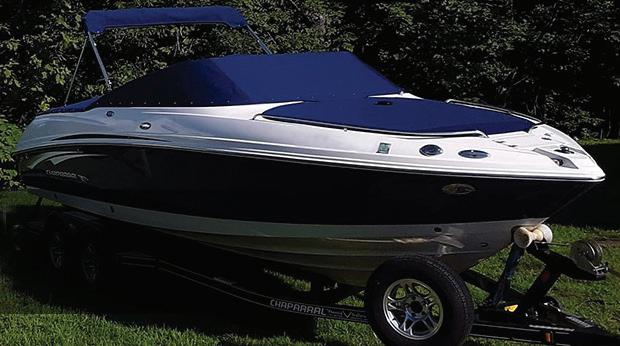








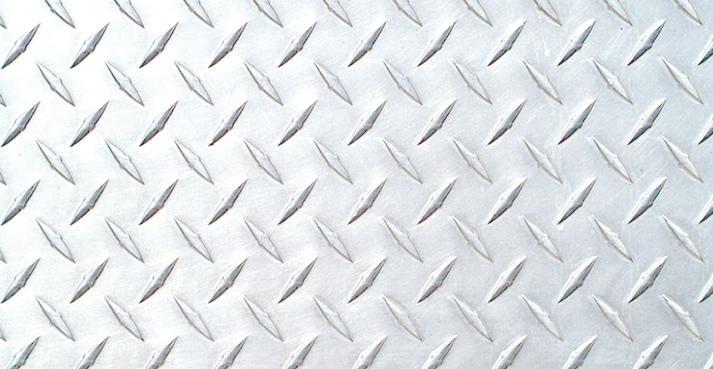



(Cont. from pg. 12)
Deer Wintering Area Conservation Criteria
The 130th Maine State Legislature passed an “Act to Preserve Deer Habitat” (P.L. 2021, Ch. 409) which among other things provides for preferential consideration by the Land For Maine’s Future program for projects that conserve deer habitat in northern, eastern and western Maine.
This document was developed to guide as
sessment of potential Deer Wintering Area (DWA) conservation projects that are presented for consideration. The intent is to provide a coarse filter for projects related to the criteria below to prioritize projects and guide allocation of resources, including staff time and capacity. The following criteria will be used to guide the Maine Department of Inland Fisheries and Wildlife as a coarse filter for proposed projects. Based on unique circumstances, the Department may consider other projects
that do not meet criteria as outlined. Not all projects that meet the following criteria may be pursued for conservation, but projects meeting these criteria will be further assessed for potential interest or viability. The Department will conserve and manage deer habitat comprehensively to meet habitat needs for deer throughout the year. This includes management of summer range to enhance habitat conditions and maximize the health and condition of deer to increase survival rates through winter as
well as management of winter shelter to provide for adequate extent, connectivity and condition of winter shelter through time. Geographic Location • Priority areas will be located within Wildlife Management Districts (WMDs) 1- 14, 18, 19, 27 and 28
Acreage • A DWA less than 500 acres is considered lower value and is more difficult to manage •
A DWA 500-1,000 acres is considered moderate value
• A DWA >1,000 acres is considered high value • A DWA >5,000 acres is con-
sidered highest value
Use • Documented use by deer via survey (historical or current)






Cover • If cover is known or can be determined via remote assessment, DWAs currently meeting Management Guidelines in Guidelines for Wildlife: Managing Deer Wintering Areas in Northern, Western and Eastern Maine will be given preference Landscape Context * Landscape considerations related to the proportion of the DWA proposed for conservation and the connectivity of the area to other conserved lands, travel corridors or ownership that is consistent with DWA management. • If >75% of the DWA (including “Biological DWA” acres, if known) will be conserved, the proposal will be given preference • Travel corridors (streams, wetlands, valleys, ridges) are protected as part of the project or on adjacent conservation lands Summer Range Summer range, including hardwood dominated forest stands, is important to ensure that the physiological condition of deer is maximized throughout the course of the year, increasing the likelihood of winter survival. These areas are also important when in close proximity to winter shelter for use during the fall prior to yarding, during the winter during periods of moderate temperature and snow depths, and in the spring upon dispersal to summer range. • Summer range of a project area should include areas sufficient in size to allow for functional management of both summer range and winter shelter. The ratio of summer to winter range should approach 1:1
As I walked down the dock, the steady flutter of a flag across the marina indicated a moderate northeast wind. It would be a sporty ride out to the fishing grounds, but our clients could expect to return with a cooler full of filets. My arrival coincided with the sunrise, and the eastern sky was lit up orange. The temperature still hovered in the mid 40’s, and I was wearing a fleece sweater and knit hat. Once the sun got higher, the day would warm quickly, but I would
and grinned at the captain, trying to make light of an annual hardship we both face. “The geese were flying south this morning, Peters...” After nearly 100 days of offshore fishing, the tail of charter season was on the horizon.
Stuck behind a school bus on my commute to the dock, I had studied a large formation of Canada geese migrating overhead. Our summers pass quickly here in Maine. Blink, and it’s Independence Day. Turn away for a moment, and it’s
The change of seasons brings a shift in the winds. The southwest wind, the prevailing direction during the summer months, begins to regularly blow easterly and northeast come fall. Offshore fishing in 15-20 knots of southwest is certainly bumpy, but generally acceptable for any mid-sized, Downeast-style vessel.
be able to see my breath for at least another hour. I took a sip of coffee from my thermos, watching strands of steam escape. A night heron barked and flew from a nearby piling, disturbing a group of eiders resting in the rockweed.With a bearing nearly due south, the Teazer rumbled past a pod of feeding porpoises and cleared Portland Head Light. Leaving the harbor in her wake, the boat settled into her familiar cruising cadence. I looked up from tying groundfish rigs
Labor Day. By September, signs of the fall transition are apparent on the ocean.
The change of seasons brings a shift in the winds.
The southwest wind, the prevailing direction during the summer months, begins to regularly blow easterly and northeast come fall.
Offshore fishing in 1520 knots of southwest is certainly bumpy, but generally acceptable for any mid-sized, Downeast-style vessel. However, the same amount of wind out of the northeast is an entirely

different beast; most boats would be wise to stay at the dock.
Ironically, the rougher the seas, the better the groundfishing. The old saying holds true, especially in September: “You can have good weather or good fishing, but you can’t have both.” Pollock are a rough weather fish and bite hard throughout the fall. Generally ranging from 5-15 pounds, pollock comprise the bulk of our catch in September. Usually unpredictable and nomadic, a steady easterly or northeast wind consistently pushes schools of pollock from the mud-bottom deep water (400-500 feet) up onto the rocky high ground (200250 feet). Jigging a bucktail teaser above a heavy 18-32 oz. Norwegian jig can be extremely effective. Cod season opens the first of September, and at one fish per person per day, filling the boat limit is not usually an issue. Additionally, white hake, bewhis-
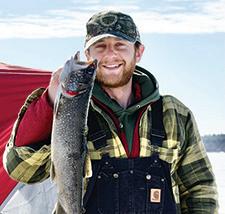
kered creatures of the deep, creep up from the mud to the edge of the bank during September, and often find their way into our fish box.
Blue sharks are the
By Jonah Paris, Ellsworth, ME
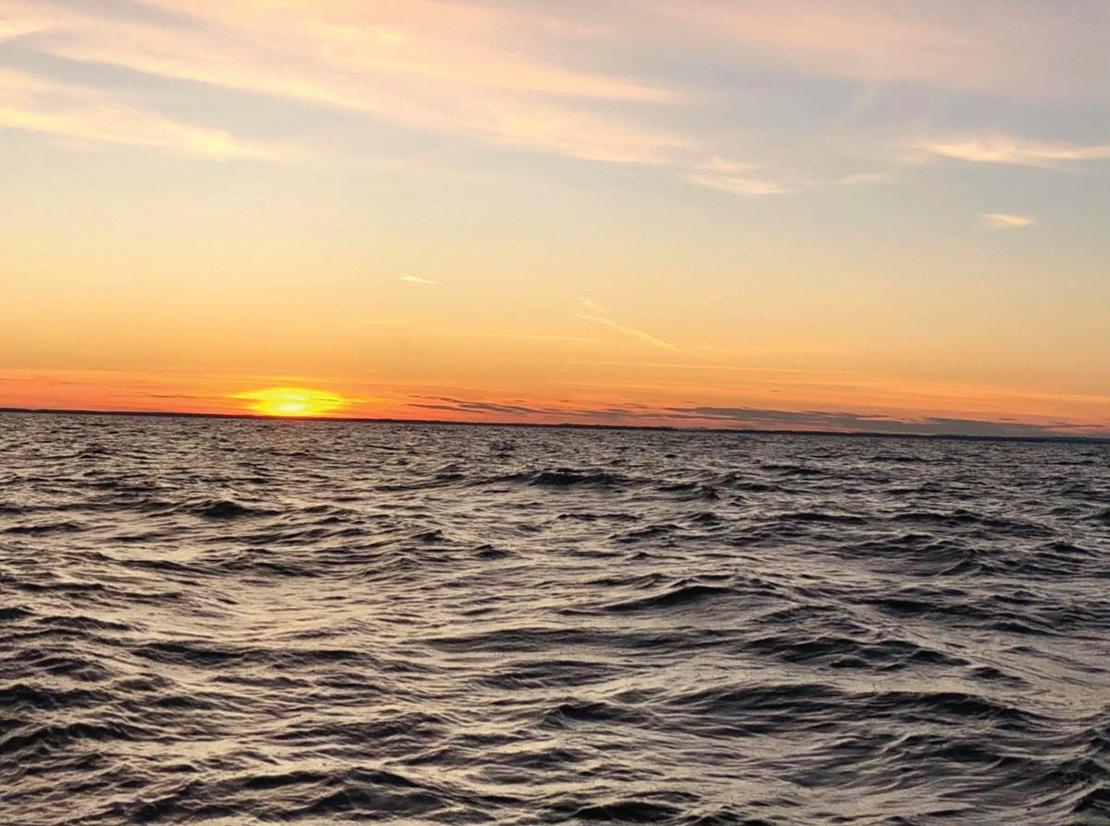
first fish to declare that summer is over. After only a few consecutive nights dipping into the low 50’s, the surface temperature
offshore plummets. Blue sharks are a common August catch, and favor a water temperature of at least 65 degrees. As the water cools in September, blues are replaced by young porbeagle sharks. Porbeagles are hardy, cold
(Transition cont. pg 38)


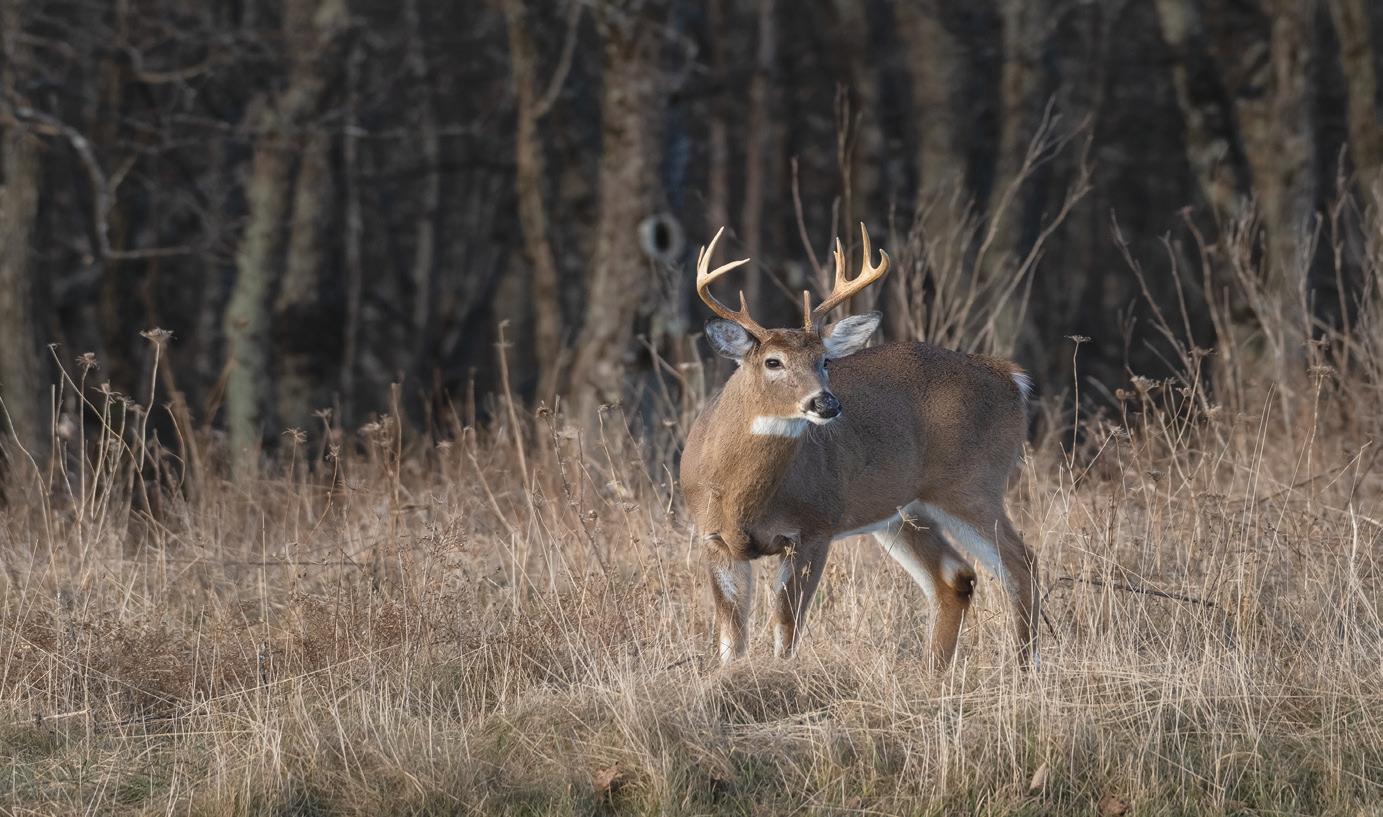

Any time you use a tree stand you should treat it like your life depends on it, because it does. Whether you have a self climbing stand, a ladder type, or any other kind; safety should be on your mind every step of the way.
Read everything you can about your particular stand and Fall Arrest System (FAS). Look up videos as well about proper use
by Joe Frazier, Bangor, ME
training and practice they can be safe and enjoyable. A tree stand is no different. Always remember your training is for WHEN you fall, not IF you fall. You should inspect all your gear before and after each use. Don’t try to repair any rips, missing straps, mice chewed ropes, etc. Throw out anything questionable and buy new. Don’t risk your life to save
One in three people who use tree stands WILL fall. 99 percent of them are not attached to the FAS when they fall. 89 percent of those who fall will suffer a major injury or death.
and safety concerns.
One in three people who use tree stands WILL fall. 99% of them are not attached to the FAS when they fall. 89% of those who fall will suffer a major injury or death. Even the fastest search and rescue can take several hours. A gun or a bow are lethal and dangerous, but with the proper

a few dollars. Practice with your gear before you go to the woods. Be sure you know how to properly secure your stand and how to use it safely. Hunting from a stand is different than from the ground, be sure to target practice from the height you will hunt from. Practice with it 2 or 3 feet off the ground with a step ladder to start so you can get down if you need to. Get used to moving around and be able to reach your gear. This is the time to adjust your FAS and pack. Remember you should always climb with empty hands. Your pack and your UNLOADED weapon should be brought up after you are settled and secure using a rope or two.
One non-negotia -
ble rule with tree stands: your feet NEVER leave the ground until you have your FAS secure. Always do things the same way in practice as well as in hunting. If you don’t like the FAS that comes with your stand, buy a different one. Your FAS should be a full body harness with chest pockets and groin straps. When you fall the only thing you will be able to reach is the chest pockets, not your pack, your pants pockets, or your stand. You should have your Suspension relief strap, a spare Suspension relief strap, and your cell phone or Signaling device in your FAS pockets. Also 2 or 3 folding screw-in tree steps.
Practice self recovery near the ground with someone standing by to help if you haven’t learned how yet. When you practice be sure your feet are off the ground and you are suspended by your FAS. Don’t let the first time be 25 feet in the air.
WHEN you fall, your FAS will arrest your fall. This is much better than landing on the ground, but you are still in extreme danger. The rope at your back catches you and your entire body weight is suspended by the groin straps of the FAS. The groin straps, when they are supporting your weight, cut off circulation in your legs, prevent blood from returning to the body, can cause heart problems and death. This is suspension trauma.
You need to use the suspension relief strap to take the pressure off the groin straps and put your weight on your feet. The strap attaches to your back where the safety rope of your FAS attaches. The loop should be adjusted in length so when you stand in the loop, the pressure is off your legs and groin
your suspension relief strap and you need to get back into your stand to be safe. Use the screw in tree steps and mount them so you can climb back into the stand.
When you get back in your tree stand, put your Suspension relief strap back in it’s pouch so it is ready for next time. Call
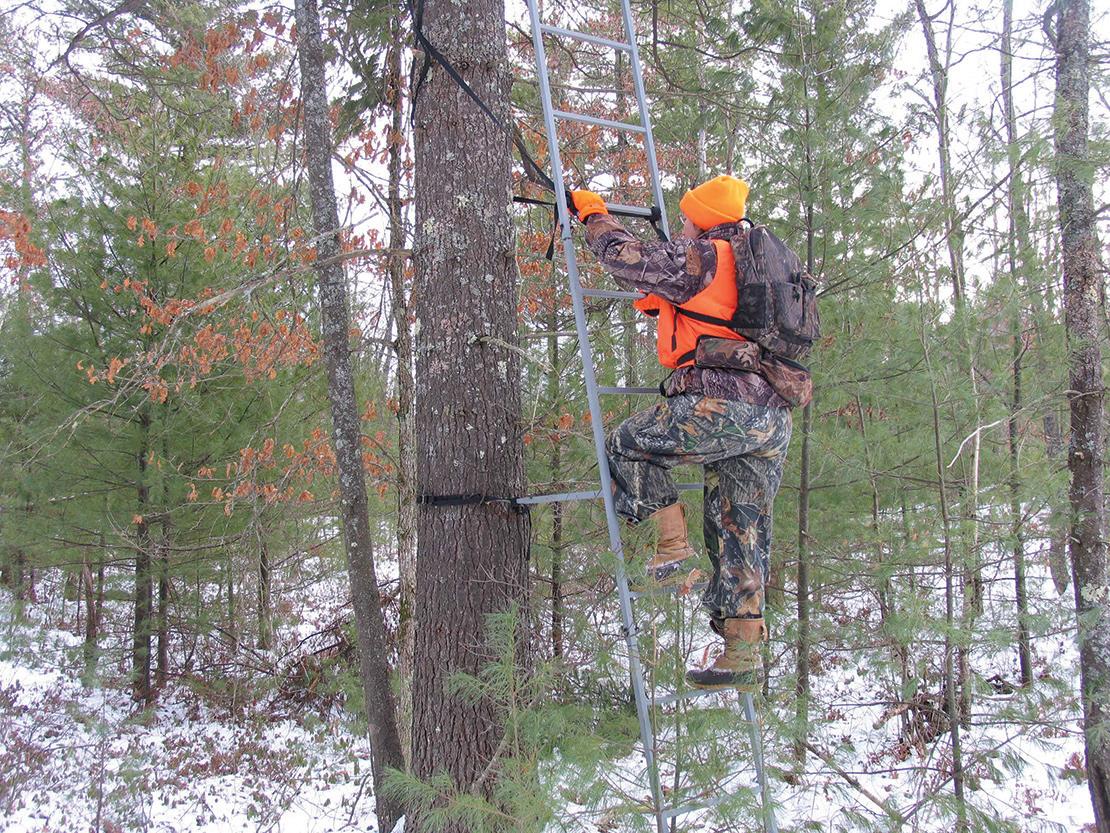
straps. Adjust it when you practice to be sure it is the right length.
As soon as you are standing and are stable with your weight on your feet, signal your hunting partner or call for help on your cell phone. “I fell out of my tree stand. I’m ok, but call me back in 10 minutes. I’m going to try to get back in my stand. If I don’t answer when you call me back, send help ASAP.”
Just like any trip in the woods always tell someone where you are going, when you will be back, and when to call for help. Leave a map of where you will be.
After you call and let someone know what happened you can attempt a self recovery. You are in
your emergency contact back and let them know you are in your stand. If you feel you need help getting down, ask for it. If your nerves are shot from the fall, give yourself time before you attempt to hunt or climb down.
Tree stands can be safe and give you a big advantage when hunting but you need to practice and be safe with them. A deer is not worth dying for.
If you can’t use the FAS or just refuse to put it on, hunt from the ground and don’t use a stand.

Joe is a husband, father, author and Marine. Joefrazier193@ gmail.com
First and foremost, I want to make certain everyone understands that my comments are about black bears only. Black bears are rarely aggressive. They tend to be very shy and will go to great lengths to avoid human contact. It is also true that black bears have the equipment and size to be dangerous in the right circumstances. Some
hours or stay on a stand until the end of shooting time. Those last few minutes are the time that most mature bear show up to a bait sight. It is also the spookiest and nerve fraying time where every noise becomes the boogy man or bear. Reality does not quite support your jitters, but perhaps some insurance would help. What kind of
If you are going to shoot a bear, you want to stop the attack and kill the bear. In the close quarters of a bear attack, your handgun should be very maneuverable and pack a punch.
bears become accustomed to human contact through careless trash storage, bird feeders, compost piles etc. These are the bears we usually hear the most about. They are also the bears most likely to have negative human contact, attacks, bluff charges, motor vehicle damage or pet and livestock injuries. However, bears encountered in the woods are seldom an issue. There are a couple of exceptions; young males in the 1 ½ to 2 year range can be a bit aggressive, also getting between a sow and her cubs can be very unpredictable.
From a hunting perspective, it is incredibly important to have confidence while hunting bears. If you are concerned for your personal safety, it is difficult to sit still for
insurance you ask? Well, this is a guns and ammo column so let’s talk about sidearms for bear protection. They can be a comfort that will help you relax and boost that confidence. This can be especially true for bow hunters. Let me be clear, I am not talking about handguns for hunting bears. I am talking about handguns and ammo as a defensive tool. In the rare case of a black bear attack, there is one consideration to remember. A black bear can be stopped when they attack. If they encounter enough resistance in the form of noise or pain, they will back off. Based on that, nearly any handgun will do, right. Well, actually, no. If you are going to shoot a bear, you want to stop the attack and kill the bear. In the close quar-
ters of a bear attack, your handgun should be very maneuverable and pack a punch. My recommendations would be handguns with barrels no longer than 6 inches, in calibers like 10 mm, .357, .41 mag, .44 mag and .45 Colt. They should
by Tom Kelly, Orient, ME
handgun you own is a 9 mm and you feel the need to carry it, then I would load it with the excellent underwood ammo penetrator rounds.
Another consideration is how are you going to
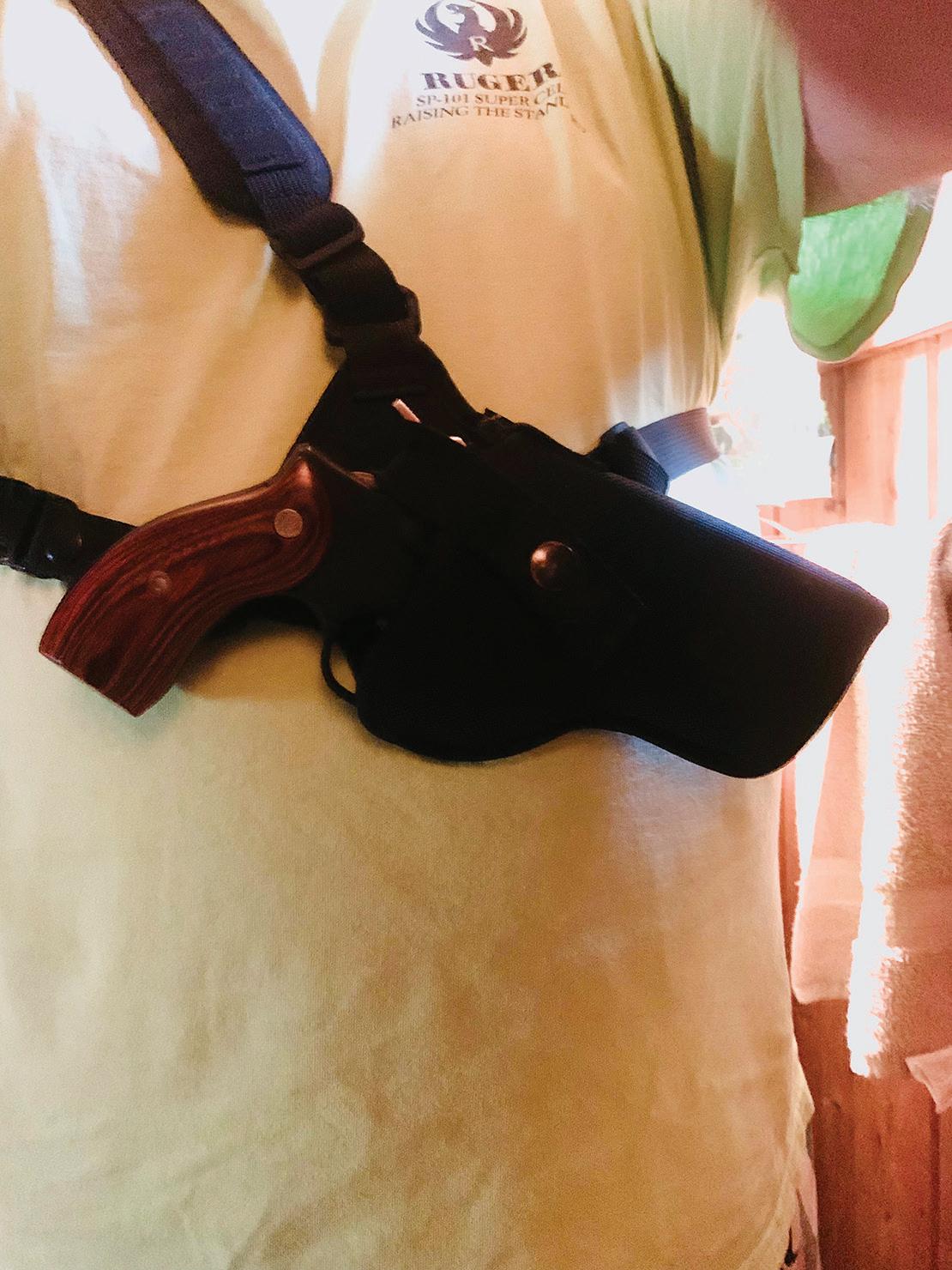
Another consideration is how are you going to carry your handgun? These handguns are not little snub nose, lightweight guns. I prefer comfortable chest rig that positions the gun in the middle of your chest.
be loaded with heavy caliber rounds to facilitate penetration. Light bullets may go faster, but will not penetrate deep enough to penetrate skulls and heavy bones, especially at handgun velocities. If the only
carry your handgun? These handguns are not little snub nose, lightweight guns. I prefer a comfortable chest rig that positions the gun in
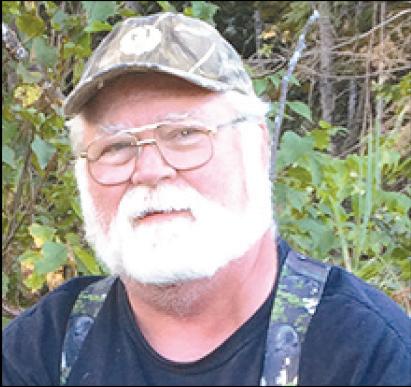
the middle of your chest. Just remember, if you are a bow hunter, practice while wearing this rig to make sure there is no string interference. If you choose to put the gun in your day pack, you are carrying extra weight for nothing. You will never be able to retrieve it in time. So, if carrying your handgun in addition to your primary hunting tools give you the confidence to sit still and stay late, then by all means, do it. Please take a kid on your outdoor adventures. Pass along your knowledge.

Tom is a Registered Maine Guide. He is the owner/operator of Shamrock Outfitters in Orient Maine with his wife Ellie. He is a retired police officer as well as a retired manager from two major firearms manufacturers. He is an NRA Certified Instructor as well as a Hunter Safety Instructor in Maine, New Hampshire and Massachusetts. You can reach Tom at Shamrock Outfitters (207) 694-2473. Please visit our Facebook Page: Shamrock Outfitters and Properties and come visit us on East Grand Lake


by Erin Merrill, Portland, ME
I have multiple apps on my phone to figure out weather, movement, maps, and can get pictures of animals in the woods within minutes. All of this is meant to help us figure out the prime time to be in the fields and woods to maximize our opportunities for be successful with our hunting. Over time, small technological changes have been made to ‘help’ hunters
the buck that I shot. Had I not received the pictures, I would not have been in the woods early enough to position myself to be ready when he walked by. Did it help? Absolutely. Does it usually? No.
Technology has also made us more addicted to our phones as we spend time searching wind direction, property lines and geographic layouts. We
Technology has also made us more addicted to our phones as we spend time searching wind direction, property lines and geographic layouts. We spend more time in front of a screen than we do actually walking around in the woods ...
increase their chances of being successful but has it gone too far? Are we taking the hunt out of hunting?
Technology
Dad and I have been using trail cameras for more than a decade now. Up until last year, it had been an exercise in disappointment. I may see a picture of a nice buck but I never could find it during hunting season. Last fall, a camera set up in a key spot, helped me pattern
(Cont. from pg 25)
As always, remember to take a young person hunting or fishing to keep our outdoor heritage alive and well!

Rich is a full time Registered Master Maine Guide. He owns and operates Twin Maple Outdoors guide service and sporting
you don’t need an app to tell you when peak rut is. You can do the math; if the majority of fawns are born in May and June, then we know that those does got bread between the months of October and December. Average that and you’re in the middle of November. We know this. All deer hunters know that the middle of November is the prime time to be in the woods. We don’t need an app to tell us this. Does will be in estrus and bucks will be on their feet. And we need to be out there.
Do the work
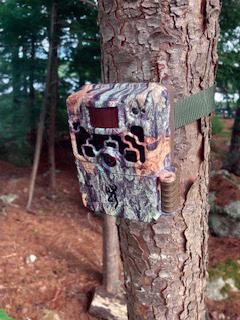
deer will be moving.
spend more time in front of a screen than we do actually walking around in the woods and studying where deer are crossing trails or where natural pinch points are. Plus, apps are not fool proof and just because it shows you an estimate of where a property line is, it doesn’t mean it is accurate.
Biology
The average gestation period of a whitetail doe is about 200 days which is about 7 1/2 months so
lodge located in Bradford, Maine. He is a “Certified Yamaha G3 Guide” that runs fly and spin fishing trips with a G3 Jet boat and Stealthcraft drift boat. Rich also guides Maine partridge, turkey, moose, deer hunting and recreation adventures. Call 207907-9151. E-mail: info@ Twinmapleoutdoors.com or Visit: http://TwinMapleOutdoors.com
So, have we gotten to the point or are we close to the point, where we are expecting technology to tell us when to be in the woods as opposed to actually spending the time out there learning? No app is perfect and it’s hard to beat observations in the woods. If you pay attention, you will notice what weather is needed to get deer and turkeys out into the fields. Then, you’ll know what sort of conditions you should be out in if you want to see those animals and get a shot at harvesting them. I have cancelled work meetings when the weather calls for snow squalls so that I could be in my stand, knowing that the
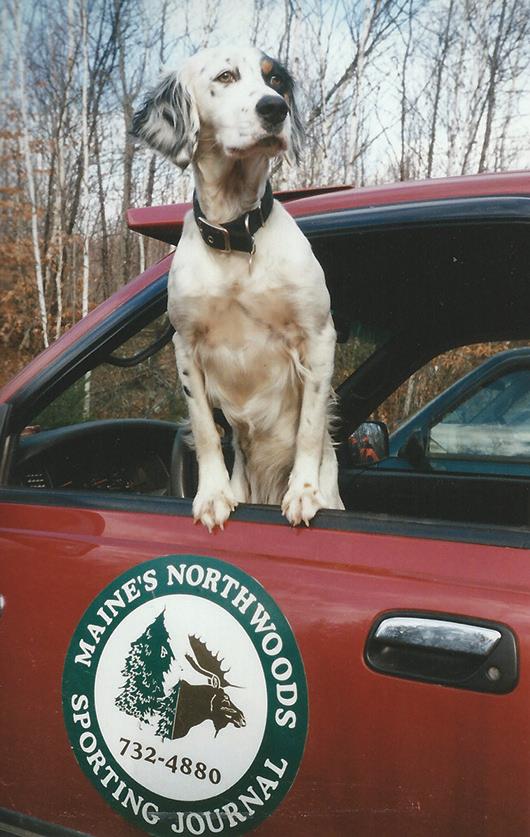
A lot of hunters that shoot big bucks will tell you that they either cut a track and followed it or that they knew a certain buck was in the area and just put in the time and effort needed to be in the right place at the right time. I have interviewed a lot of hunters across the United States and very few of them gave full credit to any app on their phone. They talked about spending hours getting ready for the season, putting in the time and effort to scout and having a little luck on their side as they sat in the stand and had the buck of the lifetime walk in front of them.
Are we at the point where we are starting to take the hunt out of hunting? Are we losing our connection with the woods
we losing along the way? I will continue to use my trail cameras, mostly as a source of entertainment to see what sort of deer are on my property but I will also continue and look forward to my 12 hour sits in the stand in my wool pants and jacket and knowing that if I put in the hours and have a little luck on my side I will be able to fill my tag and put meat in the freezer for the next season. because we’re so busy in our everyday lives that we can’t spend hours scouting? Are we substituting hours of walking in the woods, fields and streams, for an algorithm to tell us when we need to schedule our hunt? And what handed down knowledge are

Erin is a member of the Professional Outdoor Media Association and the New England Outdoor Writers Association. She is a senior writer for Drury Outdoors’ DeerCast. You can read about Erin’s adventures and contact her at www.andastrongcupofcoffee.com
In my last column, I announced the arrival of nine-week old Fenton River Mac, our new German shorthaired pointer puppy. Here’s a recap of the first month at his new home.
Mac comes from a very well-established breeder. He had already been crate trained and had
ing a bird is more fun than pointing the bird. That encourages chasing rather than pointing. Why waste time pointing if you can chase and catch a bird. That’s so much more fun than standing still. The lesson: Don’t use birds that your pup can chase and catch.
The intro to birds,
Susan is also taking Mac to weekly puppy class. Puppy class gives your puppy an opportunity to interact with several different breeds and temperaments. Both Susan and I highly recommend it.
significant socialization. In a new environment, he initially had peeing in the house issues, however, that was quickly stopped with frequent visits outside. He quickly learned that “hurry-hurry” meant to pee outside.
Susan truly enjoys training a new puppy. She quickly had him sitting before he could start eating his meals. And, he quickly learned his release command “super”. Recall is good but needs a little more work. We worked on recall using food as an incentive. We may have stopped using the food a little too early. We’ll get it done. With any pointing dog, we’re anxious to discover his natural instincts. We went to a local bird hatchery and picked up four chukar. Both Susan and I like to use chukar for training since the pup(s) usually can’t catch them. Often the problem with pen-raised quail is they can easily be caught. When a puppy catches the bird, they then think that catch-
would also introduce gun fire. Mac pointed, Susan flushed, Mac chased and I fired the starter’s pistol. He turned and looked back at me, however, showed no signs of fear. He went back to chasing the bird, which he never caught.
Susan is also taking Mac to weekly puppy class. Puppy class gives your puppy an opportunity to interact with several different breeds and temperaments. Both Susan and I highly recommend it.
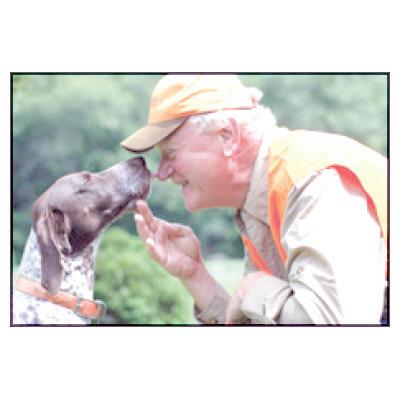
using chukar, went very well. Mac gave us a very nice point on his very first bird. A stylish point with
Last weekend, Susan took Mac to an informal training day. Mac got to interact with many of his littermates. Susan said they romped and rolled in the grass just like they did
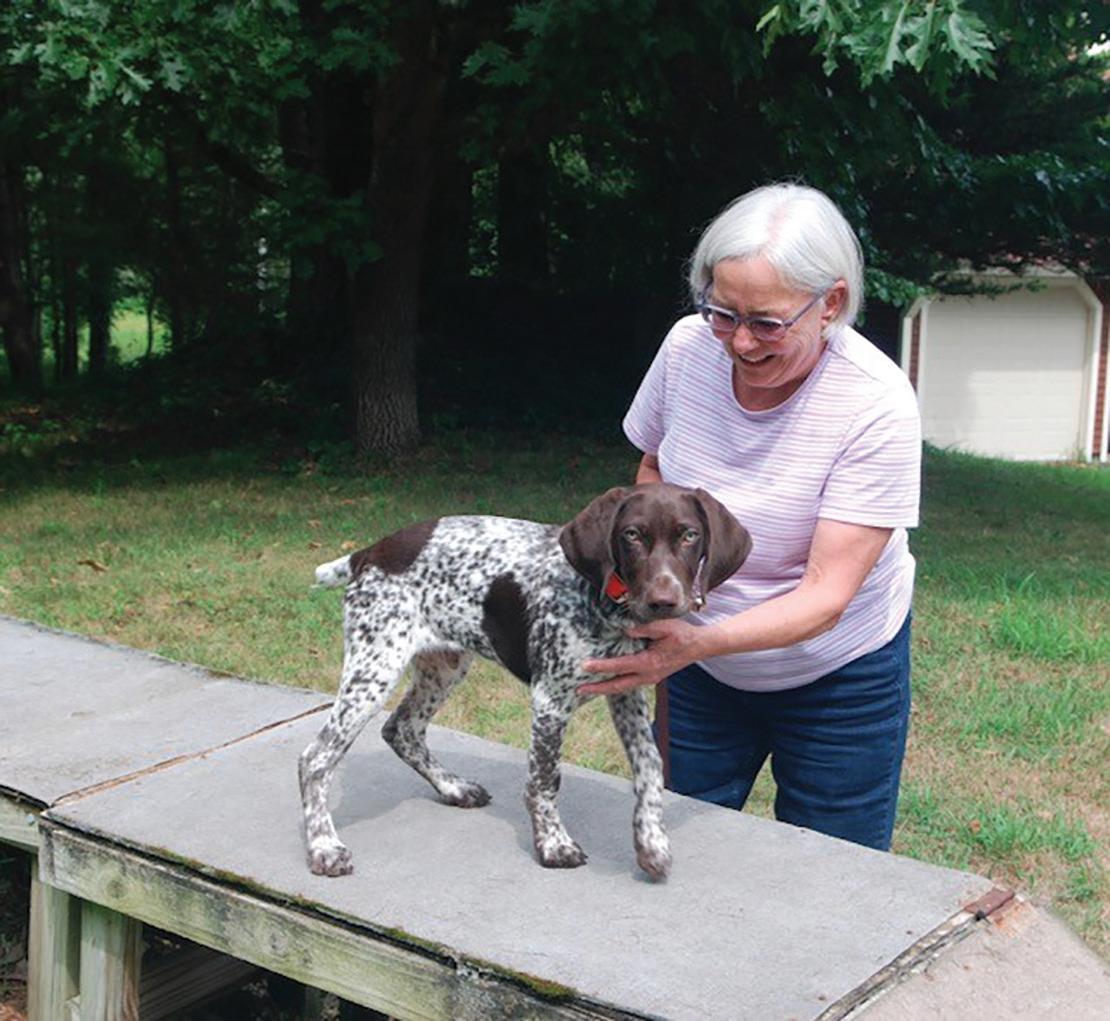
good conformation. Both Susan and I were elated. He did chase when the bird flushed, however, that’s fine. Getting him steady to the flush will come later.
The first bird encounter went so well, we decided to plant another bird. However, if all went well, we
when the litter was still together. It was great fun for all the puppies.
At the training day, all pups were shown birds. Susan was thrilled that Mac continued to demonstrate his genetics with two perfect points. As pointing dog owners, no matter what
age, we never tire of seeing our dogs point. That’s especially true with a puppy. We’re not sure if we’ll show him any more pen-raised birds. August is a perfect month to show your puppy wild birds. Both woodcock and grouse broods can fly well in August. We don’t have grouse behind our house, however, we have plentiful woodcock numbers. Wild birds are the key to having a good hunting dog. And, we want Mac to be a good hunting dog. And, he will be.
When training your puppy, remember the four golden words: patience, persistence, repetition and consistency. Those words will put you on the right track toward a fine hunting partner.

Paul and his wife, Susan, are co-hosts to the Bird Dogs Afield Tv show. Pat episode can be ween on their website (www.birddogsafield.com


From small rises on the rolling North Dakota prairie, you can see forever. The sky is immense, and the morning sun bursts forth, an orange orb on the pale pink horizon.
For the hunters, the day begins much earlier, a good two hours before legal shooting time. With blinds and decoy spreads set up, the men hunker down, waiting patiently with their dog in the pitch-
by Laurie Chandler Bremen, ME
ponds that formed in depressions the glaciers left behind.”
Not all the hunts are over water, though. Their top choice would be a cut cornfield with plenty of debris left behind and mostly mallards feeding. There’s no water to wade through, and they won’t lose cripples like they might on a lake.
These October or early November trips were a gamble at the start, back in 2019.
black chill. All is quiet and hushed, but anticipation makes their hearts beat faster.
“You hear the ducks long before you see them,” my son Taylor begins. “Some pass close enough to touch. The whistle of wings, the movement of air, the solid sound as they settle in among the decoys, softly chattering. None of us had ever seen anywhere near that many ducks until our first Dakota hunt. It’s all farmland. Prairie pothole country they call it, because of all the shallow
These October or early November trips were a gamble at the start, back in 2019. After an unsuccessful and very expensive elk hunt, the group of friends—law enforcement and firefighters who’d long hunted together in tidewater Virginia —learned about another possibility. With the lead on a house to rent, they piled in gear, two dogs, and a mess of silhouette and floating decoys and drove twenty-six hours straight through to southern North Dakota.
No one was sure if it would pay off. Was it realistic to plan a self-guided
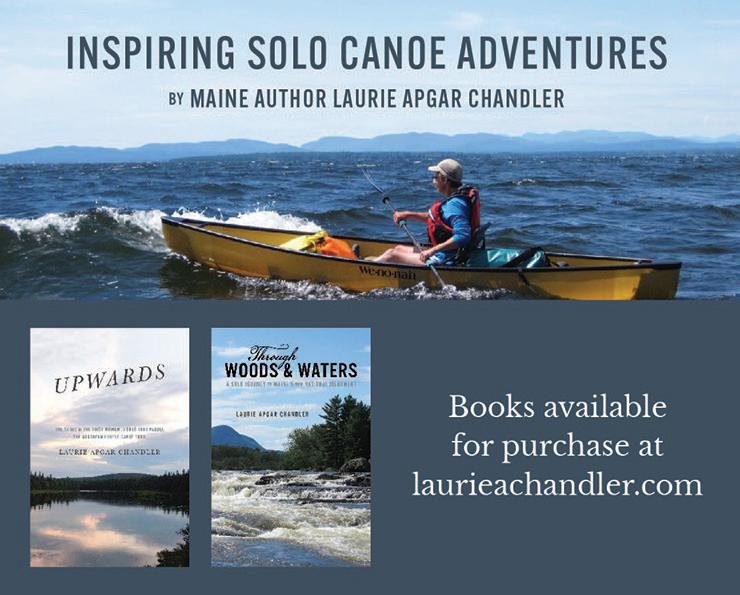
hunt, fifteen hundred miles from home, relying totally on last-minute scouting? Would they get permission anywhere to hunt? Would the ducks and geese cooperate?
They’ve learned a lot over the years. Be prepared for snow and temperatures in the teens, but it could also be seventy. Gas stations can be thirty miles apart. The guys stock up on groceries in Aberdeen, South Dakota, and bring a case of shells per person. Scouting, mostly in the afternoons, involves many hours of driving every day.
“We take hundreds of dollars of Whitley Virginia peanuts to give away,” Taylor laughs. “We end up knocking on a lot of doors.”
Some landowners now post their land electronically. An app called OnX provides up-to-date information on property ownership, boundaries, and access. In North Dakota, if land is not posted and does not have crops on it, it is legal to hunt without asking permission. However, courtesy and a good hunting ethic prompt the group to introduce themselves in advance whenever possible. Although they’ve built lasting friendships with some landowners, changes in rainfall and crops often mean they do not hunt the same places year to year.
A careful read of the North Dakota Game and Fish website is a must. Five licensing items are required: a non-resident waterfowl hunting license; a federal waterfowl (duck) stamp; a Fishing, Hunting, Furbearer certificate; a
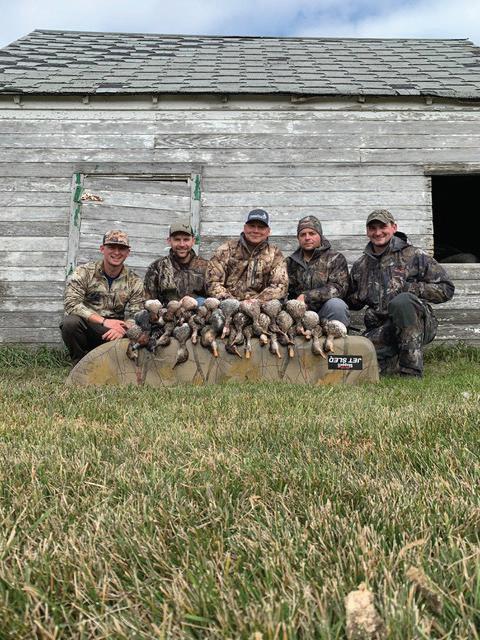
General Game and Habitat License; and a free Harvest Information Program registration number. Species specific regulations, as well as season dates, change and are only finalized when the governor signs the annual season proclamation.
North Dakota lies on the North American Central Flyway, a major migration route for millions of ducks and geese moving from northern Canada to the Gulf of Mexico and beyond. My son and his friends primarily hunt ducks but set up for geese a couple of times each year. Even a week’s difference in timing can impact species availability. Bluewinged teal are the first to head south, and may only be taken through early October. They also travel the farthest, with some overwintering as far away as South America. Wigeon, gadwall, canvasbacks, redheads, ruddy ducks, pintail, green-winged teal, wood ducks, and more can be found, in addition to the desirable and very common mallards.
That first year, there was one particularly memorable morning. Hustling to the field they’d scouted, the glare of headlights revealed a parked pickup truck. Someone had gotten there first. Scrambling for another spot to hunt, they lucked out along the edge of a large cove on a huge lake. In the gray light, they could already see lots of ducks dumping in.
The sun was rising by the time they’d tossed out a dozen decoys and squatted hurriedly in the tall marsh grass. Gunner, an unusual reddish-yellow Lab with a soft mouth, crouched at their feet, alert and ready. Flock after flock wheeled and dropped, finishing right in front of them. In an hour, despite a brisk wind, they had their five-man limit—mostly gadwall, with a sprinkling of wigeon, green-winged teal, and pintail. Taylor will never forget that hunt.

Laurie Apgar Chandler is the author of Through Woods & Waters, which provides an adventurous look at Maine’s Katahdin Woods and Waters National Monument, and Upwards, the story of her 2015 solo self-propelled thru-paddle of the Northern Forest Canoe Trail. To learn more or purchase the books, please visit www. laurieachandler.com
A guiding career is built on stories. By the time you’ve reached your own senior years, the hard drive is so full, some of them begin to get lost in the margins. And yet, some remain, due either to their compelling nature, or perhaps, to the degree to which
last time Henry came. It was in the summer of his 94th year. It so happened that his trip coincided with the anniversary of his marriage to Betsy, some 60 years earlier, though Betsy herself had recently hopped the twig. In observance of the occasion, my wife
While some of these stories of hopping the twig gathered over a long career of guiding have played out before my own eyes, some have come to me through the eyes of others. One in particular takes the cake.
they were personal.
Two of the latter variety have happened to me within the last decade. They both came to mind recently when a sport from Westport Island, Maine used the expression, “hopping the twig.” It was, on the one hand, new to me, but on the other hand, much, much better than kicking the bucket, biting the dust, buying the farm, having had the biscuit, or cashing in your chips. I’m not sure why “hopping the twig” is better, it just is.
Henry Moulton was 94 when he hopped the twig. It was his daughter who used that expression while fishing with me on West Grand Lake this summer. Also along on that trip were a grandson and granddaughter. All remembered, as did I, the
made a blueberry cake, á la Marjorie Standish, and adorned it with candles. Henry blew them all out with a big smile on his face, took his aprés lunch nap, then went back to catching one smallmouth bass after another on a blaze orange Rapala. That indelible image of Henry’s happy face stays with me permanently.
Two weeks later, Henry hopped the twig peacefully at home.
Ray Plewacki fished his last rotations for Atlantic salmon on the Margaree River in Cape Breton, Nova Scotia when he was 93 years old. He didn’t hook up that year, but he chatted up every fisherman on every pool we fished that fall, and came away with contact information on several of them. The fly rods he made during
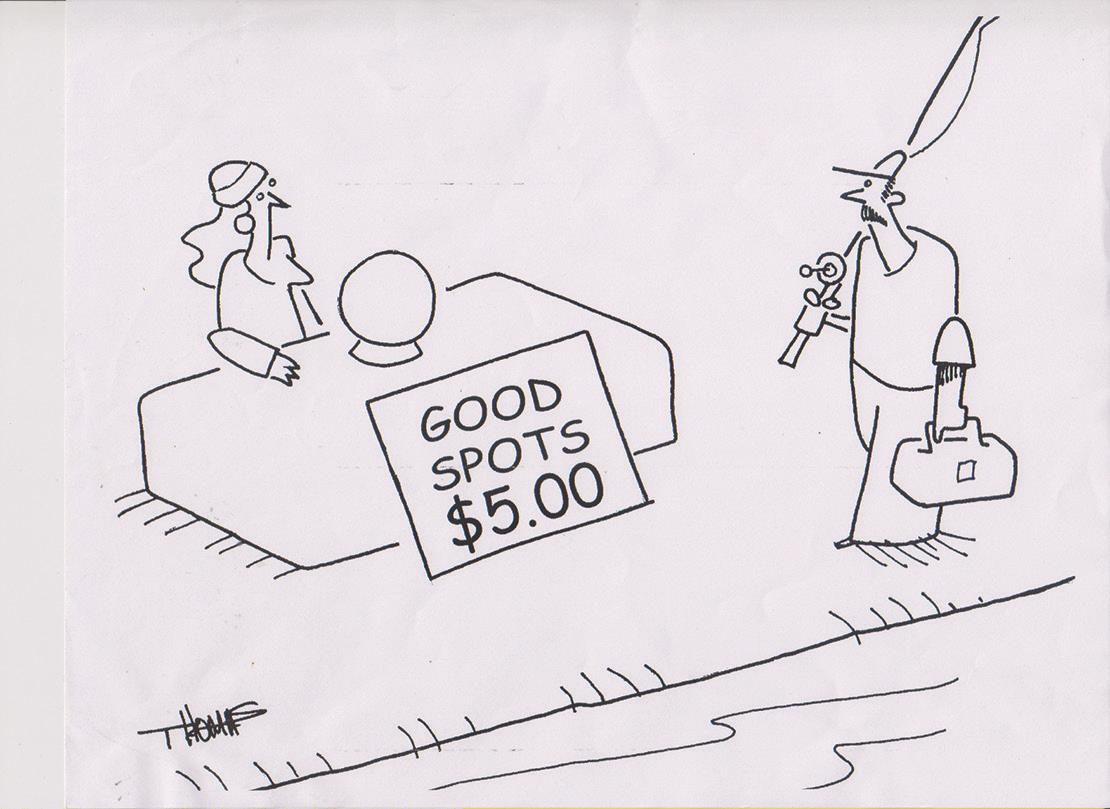
his long life live on, as do many of the flies he tied. He was a joyous fisherman, delighting in the camaraderie, the sounds and scenery of his cherished sport. Two weeks after swinging the big rod for Atlantics that year, Ray hopped the twig at the home of his son in Fairfax, Virginia.
These are not tragic deaths. These were long lives that ended about as happily as one could hope for. For me, it has always been the biggest argument for not giving up the things that you love to do, as long as you can still do them. Maybe you’ll modify your approach. Take it slower. Get a hand at the dock getting in or out of the canoe. Take a shorter walk on a better trail while bird hunting. Let the dog do his work. Sit on a lower deer stand, or better yet, a stump with a nice, soft cushion. If these adjustments enable someone to keep moving and be among kindred souls while pursuing lifelong passions, then I say make it so.
While some of these stories of hopping the twig gathered over a long career of guiding have played out before my own eyes, some have come to me through the eyes of others. One in particular takes the cake. It was the grandfather of a friend and long time visitor to Grand Lake Stream, whose name was Bill. Bill’s grandfather lived and fished in the great Northwest, Washington state to be precise. In fact, he was still fishing at 96––and out of a float tube no less! He and his wife were living in their cabin just as they had been for many years since retirement. One evening,
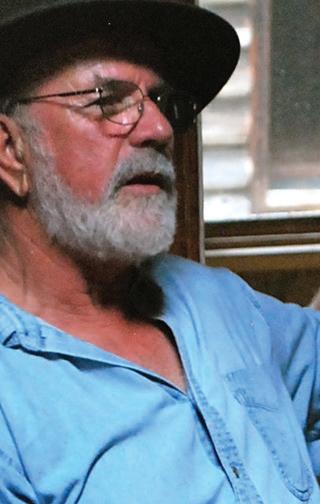
by Randy Spencer, Grand Lake Stream, ME
Bill’s grandfather was late in returning to the cabin. Then, he was way too late. Since they were not living off the grid, the old trout-

er’s wife called the warden service. She knew the approximate whereabouts of his favorite haunts, even if she’d never been there herself. As it was too late to put a plane up, they had to wait until first light the next day.
They found him alright, and it was indeed in one of those haunts. When the wardens reached him, they knew it was too late. The man was out in the pond, slumped over in his float tube. They had a job reaching him, but the funny thing was, he was still holding onto his fly rod. When they pried it loose, there seemed to be life on the other end. One of the wardens reeled in the fly line,
only to find that the old man had been fishing a wet fly, along with a dropper fly tied on below it. Each fly had a trout attached to it. Bill’s grandfather had hopped the twig, but only after setting the hooks on these, his last two trout. In the life and times of a true fisherman, who could ask for more?
The moral of these stories? Maybe it’s that the longer you keep doing the things you love doing, the greater chances you have of hopping the twig happily. Might be worth a try.

Randy Spencer is a working guide and multiple award-winning author. His books are available on Amazon, his music is available on all streaming services. Reach Randy at randy31@ earthlink.net, or via www. randyspencer.com

(Cont. from pg 31) water sharks. They are the first to appear in spring, and the last to leave in fall. Eager to indulge in an easy meal, chubby ‘beagle pups, only several feet long, are common pests during fall tuna fishing trips. Like porbeagles, shortfin mako sharks will stay later into the fall and bite best on gray, rainy, rough days.
Giant bluefin tuna, fattened up from a summer of feeding in the rich waters of the Gulf of Maine, run the inside edges shockingly close to land in the fall as they begin their great migration. Some giants are destined for a transatlantic crossing to the Mediterranean Sea. Others will swim south to the warm waters of the Gulf of Mexico. Clouds of juvenile Atlantic mackerel, known locally as spike mackerel, appear during September. Encountering acres of “spikes” rippling on the surface, like shards of broken glass, is common throughout the late season. Just like in the farm country of central Maine, apples are a hallmark sign of fall offshore. Except, instead of an orchard laden with fruit, we find apples drifting in tide rips, floating along weedlines, and embedded in mats of de-
day, spotting six to ten “bobbing” apples up to twenty miles offshore is not uncommon. I suspect the apples, if they could talk, would tell of wild journeys; falling from a tree somewhere inland, rolling downhill or being washed by the fall rains into a nearby river, eventually floating their way down to the bay, before riding the tides offshore into the Gulf.
By now, my fly rods have a layer of dust on them. They haven’t heard the song of the river since May. I have a box of gaudy salmon streamers pleading to be thrown before the end of the month. Wood ducks will be in the acorns, and once the season opens, a morning paddle through the swamps of the North Zone, shotgun alongside, is long overdue. When the leaves thin out, several grouse hikes in the mountains with Ashley and our hound, Aurora, are planned for next month. Then, when the mornings turn frosty, deer season will be upon us. As September wanes, we turn the final pages on another season in the Salt.







During the summer, Jonah is first mate aboard the Teazer in South Portland, Maine. Jonah can be reached at jonaheparis@ Zach Vieria enjoying the Northwoods Sporting Journal at the summit of Mount Katahdin

Now it is time for me to call it enough. I just don’t get out there any more to get meaningful things to write about. I have been left with dragging up old memories to write about, but many I know that I had written about before. I had nothing new!
I am fortunate that the place we chose to buy in Southern Maine was backed up to woods. Actually it wasn’t an accident because as our daughter and son-in-law drove us around looking for a place to buy it was the only one that caught my eye. I guess my mind was made up right then. The move was a big one for me as I was born and raised in Fairfield. The house I was born in still stands there on the Fairfield Center road, and I grew up only a mile or so away on the same road. When we returned to Maine after
Skowhegan where Dot and I both taught for many years.
Anyway, the woods I have to wander in now are a far cry from what I had roamed in as a younger man, but at least our dog, Sukey and I can get out and stretch our legs every day. So, a lot has changed in our lives and it is time for me to tell about another change that was long thought about by me before coming to a conclusion about what must happen. I have been writing a monthly column about the outdoors since the mid 1970’s. Over half of those years it has been for the Northwoods Sporting Journal. My thanks go out to the owners of this magazine for keeping me on all these years and publishing my ramblings. It is greatly appreciated!
task has been a joy to me for all those many years. I will miss it, but I don’t want to get boring. And so this is my farewell article. Again, so long folks!

Gil Gilpatrick is a Master Maine Guide, and is the first living recipient of the Legendary Maine Guide award. He is a life member of the Maine Professional Guides Association, a founding member of the Maine Wilderness Guides Organization, and served as a member of

the Advisory Board for the Licensing of Guides from 1996 to 2010. He is a member of the New England Outdoor Writers Association.
Best Wishes to Gil and his family in their next chapter. He will certainly be missed!
my military time we came back to the same town and bought a place in Fairfield, but only a few miles from
Now it is time for me to call it enough. I just don’t get out there any more to get meaningful things to write about. I have been left with dragging up old memories to write about, but many I know that I had written about before. I had nothing new! So it is time for me to say goodbye. This monthly



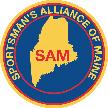
It is often said that you do not want to see how sausage is made, and that same saying is also used to describe the lawmaking process. The inference is: It’s not pretty to watch, but in the end, the job gets done. Except, the thing
by David Trahan, “Executive Director”
legislators, and a complete sell-out to a ruling minority that is flush with out-ofstate influence money.
Those are strong words, and some lawmakers will be offended, some will want to retaliate against me and those with
to the foundations of our Democratic Republic, (a government in which ultimate power is held by the people through their elected representatives).
Over twenty years ago, as a State Representative I introduced a bill to put cameras in the Legislature. This bill went to the
The Democrats hold an almost super-majority of votes in the Maine Legislature, and they also control the Executive Branch, Gov. Mills (D). Let’s face it: Maine is under one party rule and has been for some time now. Nearly all current Democrat leaders are from urban, densely populated cities and the coast, whose politics are decidedly more left leaning than in rural areas of Maine.
about sausage is, at the end of the process the product is edible. But in the case of the last Maine Legislative session, it was not the usual “sausage making”, it was a vicious exercise in legislative vote suppression, intimidation of dissenting
a conscience will be embarrassed. But none will call me a liar. Because what I am about to describe happened, it has been going on for several years now, and anyone who witnessed it knows instinctively that it is wrong and an affront

www.yodersawmill.com Yoderssawmill@gmail.com

State and Local Government Committee where, to the surprise of many, it received a unanimous ought-to-pass committee report. I also tried to pass an amendment to the House Rules to ban the practice of intimidation or undue influence when the Legislature is conducting a roll call. This bill and rule change was not introduced on a whim, I introduced it to try to stop what at the time, I believed was an affront to our long-standing norms of civil discourse during the legislative process.
Our lawmaking process is supposed to work like this. We elect 151 Representatives, and 35 Senators who represent equal numbers of citizens across Maine. There is a state representative for every 9,000 citizens, and a state senator for every 38,000 Mainers. These representatives and senators are expected to introduce legislation on behalf of their constituents, not their party or some outof-state entity or agenda. Proposed laws are referenced to a committee and a public hearing is held, amendments are considered, and then a committee vote. At this point, the bill goes to either the House or the Senate for further debate, amendments and then finally, a vote. Most votes by the Legislature are not recorded, but on controversial bills, anyone can ask for a “Roll Call” or a recorded vote. Arguably, this is the most important stage in the lawmaking process. It is supposed to be a sacred time, when legislators, having learned all the facts, listened to their constituents, and had an opportunity to

hear both sides of the debate, vote their conscience much like jurors in a jury trial.
Roll Calls-Expose Representatives to Intimidation and Voter Suppression
When the debate is finally done and members of the House are ready to vote in a recorded Roll Call, the Speaker of the House, in this case, Speaker Rachel Talbot Ross (D Portland), opens the vote and rings the bell for legislators to return to their seat and vote. There are two large, lighted boards on each side of the Speaker with the names of all 151 House members and a light next to their name. As each member votes, their light is either green or red representing yeas and nays on the pending motion.
This is where the dirty little secret starts. The roll call vote can remain open as long as the Speaker wishes. The Speaker then announces, “first call of absentee votes”, “second call of absentee votes”, and the “third call.”
Unless you can count (Process cont. pg 42)
night hunter by means that the Wardens of yesteryear may not have ever anticipated using to catch a man hunting moose at night. Game camera technology. It is no secret that every summer and early fall, hundreds, if not thousands of game cameras are brought out into the woods of Maine and placed on game trails, deer runs, and often times overlooking that hunter’s favorite illegal bait substance of choice! But in this specific case, a Maine Guide had placed a camera along an old logging road to get photos of moose travelling the road in advance of the start of the season. After the first moose hunting week, he travelled in to pick up the camera, no longer needing it placed in this location. He was surprised to get video footage of a man walking along the road, two hours after legal shooting time ended with a rifle and a flashlight. The guide brought the SD card containing the videos of the man caught red-handed looking for moose on foot after dark to Warden Mark Hutcheson at the Clayton
Lake Warden house. Warden Hutcheson and I then began sorting through the videos to figure out who the man might be. We were able to get a partial plate from his vehicle, which we then used, along with some legwork and creative thinking, to figure out the identity of our suspect.
I drove down to central Maine later that fall and interviewed the man, subsequently charging him with night hunting moose and hunting moose without a permit. After being faced with the videos and evidence from the game camera which showed him walking past the camera on two separate nights with a flashlight and loaded rifle, the man realized his defense argument was pretty limited and he pled guilty in court. Game cameras are a double-edged sword at times for a Game Warden, but in this case, a concerned Maine Guide reported the violation, which ended up in a night hunting conviction and hopefully a learning lesson for the hunter involved.

Kale O’Leary is a Maine Game Warden who has served since 2016. He lives in Ashland, Maine.
(Cont. from pg. 3) (Cont. from pg. 7)
when the VT F&W finally stated that “a stake is not legally recognized,” since the Public Trust Doctrine states that all navigable waters of the state do not belong to any one party. In the past, lake hunters put up a half a dozen stakes, thinking that someone would “respect” that tradition.
Early to bed. Early to rise. Gets the first birds in the skies. But please. Let us try to respect one another. Years ago, I experienced some very unsportsman-like conduct on Opening Day. I had worked all summer for a farmer to get permission to hunt a field for geese. I “babysat” them until dusk and when we came back in the morning, we were able to shoot sixteen birds. Then they started flaring dramatically when the sun came over the hillside. We had heard a few shots in the field north of us and on the way back to the trailer, we saw that some nimrod had laid out a white sheet held down by picked grass, intent on flaring the birds out of the field for which they couldn’t get permission, because we had already worked our tails off for that permission. Don’t be that guy.
Another opportunity
for getting out in the field is the early bear season. With the number of reports of bears walking downtown in urban areas like Burlington, Montpelier, and Morrisville, it is apparent that the population is growing, even as we encroach on their territory. Early bear season opens September 1 and runs through the day before rifle season for deer. That means we can pursue bruins until November 15.
Please note that an “early season bear” tag must be purchased in addition to the regular license with includes the late bear tag to be used for the first 9 days of the regular rifle season for bucks.

Bradley Carleton is the founder and Director of Sacred Hunter.org which teaches the public respect and empathy through hunting, fishing, and foraging. More of Bradley’s writing can be read on https:// sacredhunter.substack.com
dead end road with new growth spruce in abundance. While the team had snacks, they spotted a cow move through 200 yards away. Erv continued to glass the area. A few minutes later, Erv was bailing out of the truck as shouts of ‘Bull! Bull!’ resounded in the cab.
Ervin took a clean shot, fulfilled a lifelong family wish and earned everyone on the team their first moose; as well as Country’s first blood as a Registered Maine Guide.

John is a Registered Maine Guide, an NRA Certified Instructor and is the owner of Tucker Ridge Outdoors in Webster Plantation, Maine. He is also an active member of the New England Outdoor Writers Association. Reach him at john@tuckerridge.me or on Facebook @ tuckerridgeoutdoors



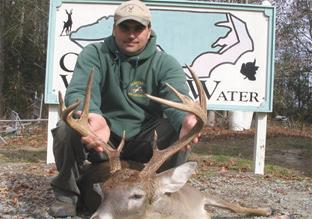
(Cont. from pg. 40)
really fast, no one knows the on-going tally at the podium, and this is where voter suppression and intimidation start. If the Speaker is unhappy with the vote tally or members of her party are not “voting correctly”, (i.e., voting the party line), a call is made to the majority party leaders in the corner of the room. The Speaker then shares with the leaders who is voting “wrong.” The party leaders start writing notes to individuals, cajoling them to change their votes. If they resist, the majority leaders take individuals out of their seat, back behind the glass or into the Speaker’s office for a “dressing down”. Remember, the Speaker holds power over whether a given legislator’s bills are heard, passed and funded. She controls committee assignments, and she can threaten to primary a member who bucks the system, possibly ending that person’s political career.
Countless times as a former legislator and now lobbyist, I have watched individual lawmakers brought to tears by the bullying of partisan leaders during roll call votes. Another way they manipulate
votes is to ask legislators voting the “wrong way” who refuse to change their votes, to take a walk and abstain from voting. Find a closet or bathroom stall to hide in until the vote is completed!
The most heinous use of this process was highlighted recently in the Bangor Daily News piece describing how Maine passed the most liberal abortion law in the country last year, https://www. bangordailynews. com/2023/08/07/politics/ candid-texts-show-mainedemocrats-abortion-billjoam40zk0w/
The Democrats hold an almost super-majority of votes in the Maine Legislature, and they also control the Executive Branch, Gov. Mills (D). Let’s face it: Maine is under one party rule and has been for some time now. Nearly all current Democrat leaders are from urban, densely populated cities and the coast, whose politics are decidedly more left leaning than in rural areas of Maine. A glaring exception is Senator Troy Jackson (D) who is supposed to represent the interests of Aroostook County citizens.
Special interest groups, funded by out-ofstate billionaires like Mi-
chael Bloomberg, funnel money into these urban/ coastal areas to promote progressive agendas like extreme gun control, and this money is also used to more easily elect progressive, like-minded legislators. The far-left progressive policies these urban/ coastal legislators support are almost always outside the mainstream, and they lack the support of the average Maine family. Without this influence money, these progressives would have little power, because they are numerically few, compared to most other Democrats and Republicans in Maine.
If a moderate Democrat legislator wants to seek the next office or get elected to leadership positions, they create a Political Action Committees and chase the biggest donor checks. Political parties collect hundreds of millions in progressive dollars and in return are expected to deliver progressive policies, whether they personally support them or not.
(See the accompanying article on billionaire donors.) The quest to maintain power and the use of influence money at the state and national are among the greatest weaknesses of our political system at

this juncture in American history.
The process I described is how the 72-hour waiting period for gun purchases law and many others were finally passed this spring. New York Billionaire, Michael Bloomberg and his followers in the so-called Gun Safety Coalition, led by progressive Democrats like the Speaker of the House and Senate President, armtwisted enough moderate Democrats to change their vote or take a walk in order for the bill to become law.
This despicable practice of voter intimidation and suppression at the time of roll call has changed our system of law making from the rule of the majority to the rule of the minority. It has turned the integrity and respect for the voting process and the foundation of our voting system, the individual right to vote one’s conscience, into a mockery.
Over time, this influx of progressive money into our system will destroy our trust in all voting systems. Whether it is our judiciary, jury system, our elections, or our lawmaking voting processes, they all rely on the integrity of the vote to earn the public trust. When our elected officials in leadership openly disrespect, cheat and manipulate votes
to secure the will of the elitist minority, our lawmaking system and democracy itself are broken.
I write this piece because I feel the will of the majority of Maine voters is now being trampled. We can no longer be a voice for and advocate of our outdoor traditions and the Second Amendment if the Legislature doesn’t respect the very system, they took an oath to defend and protect.
It is the reason we now turn to the courts to challenge the 72 hour waiting period for gun purchases. When direct Democracy, the Legislature, no longer represent the will of the majority, it is the courts and the People’s Veto referendum system we must use to protect your rights. Our founders recognized the need for checks and balances. Unfortunately, the same forces that threaten the majority rule are using their money and surrogates to attack the courts. How long will it before our courts are compromised as well?

David Trahan is executive director of the Sportsman’s Alliance of Maine.

(Cont. from pg. 8)
dreamed about for a while. Whereas my other friends daydreamed about bagging a 6x6 elk or a monster buck, Ole Slew Foot was at the top of my list. All of the legendary mountain men and American folk heroes were bear hunters and I wanted to follow suit.
This was my first bear, and I wanted it to be memorable. I couldn’t care less about its size as long as it was legal. When I say “memorable”, I mean the hunt itself. One of the most alluring characteristics of Western hunting, especially to a native flatlander from Missouri, is the ruggedness and complexity of the mountains and the quarry that calls it home. Driving along logging roads is a great way to scan thousands of acres of bear territory quickly, and your odds of seeing one probably go up substantially. Although practical, something felt cheap to me.
The challenge of mountain hunting was what I craved. I won’t say I’ll never shoot a bear via an “easier” method, but for my first bear I wanted a challenge. I wanted to look for bear sign and glass their food sources. Being chauffeured around the backcountry made me feel like some jerk. I felt like the hunter version of the yuppies who play blue-collar workers with their Carhartt clothes and 4x4 trucks with tires about as dirty as fresh snow. But what was I to do? Hiring a guide wasn’t cheap, and I’d dreamed about shooting a bear for years. I was not confident that I could take a good shot if a bear did find its way into my crosshairs as I wrestled with this moral

tough time deciding what to do. I was in advanced classes in high school (my GPA tipped the scale in the other direction, so trust me, this isn’t a brag), and a teacher once told us that the biggest mistake they saw in the advanced students was overthinking questions, even the simple ones. I found some solace in the fact that maybe the CTE from fighting hadn’t made me completely dumb yet, but time was ticking, and a bear could jump out at any moment.
Furthermore, from a spiritual standpoint, it wasn’t fulfilling either. I realize just how corny that sounds, but I fight professionally, and when your ears look like Gothmog from The Lord of the Ring, and you’ve had your face stitched up as much as I have, you’ve earned the right to say girly things like that occasionally. Is bumbling along an old forest road and jumping out of a still-rolling car the type of story you want to tell people when they ask about the bear skin rug on your floor? Black bears are some of the most fascinating animals out there, and
they survive in the same mountains that wolves and grizzlies call home. I hold bears in high regard, and I didn’t want my first experience killing one to be tainted with the thought that I had performed the act in a cheap fashion.
I thought back to that fight and how cheated I’d felt. It was the first fight my grandfather had watched. He’d flown in all the way from Washington D.C., and I felt like he was cheated too. I’d won, but the early stoppage didn’t allow me to showcase all of the hard work I’d put in for weeks. It was a win, but a hollow one. I don’t even think I took the belt back home with me at the end of the semester.
Although success may not completely justify the time and money we spend on hunting to our better halves, it at least provides us with a bucket once that bridge starts to burn. I ended up killing a bear that trip after talking things over with my guide. After scouting and sitting on wild apple orchards and huckleberry thickets for the better part of the previous day, I sat on a cliff face and shot a 300-pound boar at about 120 yards as he
foraged for huckleberries on a misty morning in the Evergreen State. Had I shot one over a bait pile he had predictably and religiously visited all year or taken one from the logging roads we seemed to endlessly drive over the first few days, I would have felt robbed of something in the first bear I took. Hunting is more than filling a freezer or space on your wall. I think we can all agree a 150-inch mule deer taken on public land beats a 200-inch buck taken behind the confines of a high-fenced ranch any day of the week. There is a famous quote from Seneca where he states “No man is more unhappy than he who never faces adversity. For he is not permitted to prove himself.”
Maybe it’s strange to have this moral dilemma. My first bear was a damn good one and I’ve probably eaten bear every day since I shot it. I know I should focus on being grateful for a successful harvest, but the thought of killing my first bear in what I would consider a questionable way still nags at me. Nowadays, life is so darn easy. We can work from home, order food on an app, and dating is almost exclusively online. My old truck even had a heated steering wheel. Everything from rifle scopes to all the extra stuff we put on our bows seems to only be making the pursuit of game easier. In a world where AI is taking over and the only time we seem to face the elements is on the short walk from our house to our cars in the morning, it seems sacrilegious to let the softness of the modern day permeate something as sacred as bear hunting. As that fight and my utter contempt for the belt I won showed,
it’s not all about the end result. But then again, a few months before this a teammate and I almost fought one another for looking at each other in an odd way. This was done en route to training where we would essentially already be fighting each other, so take my moral musings with a grain of salt I suppose. No matter how much I philosophize, I’m closer to an ape than I’d like to think.
I killed my first bear with pride. That will be reflected every time I feed myself or others with its meat. In the future when someone asks about the rug on my floor and how I got it, I won’t be ashamed. Unlike my first belt that I probably threw away somewhere, my first bear will be displayed proudly, waiting for its tale to be told. Our conscience is what separates us from the quarry we pursue. Before you pull the trigger or release the string, be sure that it is done with pride. Ask yourself if it’s a noble way for the animal to die. I don’t want a cheap win in the cage. Regardless of how I win, I don’t want anyone in the vicinity to question my victory ever again. Most of all, I myself don’t want to question my victory or accept any tainted accolades. At the end of the day, a rug is just a rug. That meat in the freezer will be eaten. But the memory of your experience is something that will last a lifetime. Make sure that it’s something that doesn’t keep you up at night.

Ty “Big Medicine” Flores is a professional MMA fighter. His record includes 14 wins and 5 losses. He lives in Denver and reads the Northwoods Sporting Journal.

Once again Maine wild turkey hunters are allowed a five turkey, any sex, any age limit during the fall season. What this means to serious foodies is a freezer filled with crock pot size goodness. The 2024 fall wild turkey hunting season runs from September 18 through November 7.
late 1960’s wildlife managers have agreed that fall season are primarily meant to reduce the population of flocks in areas where the reduction is feasible.
Maine wildlife managers have crafted the fall season in various Wildlife Management District accordingly. Five in WMD’s that can withstand the pres-
choose to try for mature gobblers but they are much more difficult to find and kill and they miss out on some mighty fine eating.
A young hen or jake in the fall weighs approximately five to seven pounds. In comparison it would take three ruffed grouse to equal one young turkey and I can only guess at how many quail.
Maine hunters have a long history of shooting grouse (partridge) off gravel roads without try-
is surprised the young birds are likely to frantically run around or back and forth making it difficult to pick out one target. If this occurs the hunter is better off to run at the flock and scatter
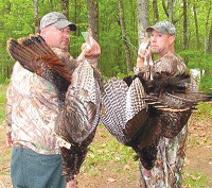
nized.
Maine law prohibits taking more than two fall birds either sex or age in a single day. Hunters should be aware of game call makers such as me and “Uncle Pete” Wentworth that use the wingbones of these young birds. Body and wing feathers can also be used for crafts. Any wild turkey is too valuable to just pop the breast out and discard the rest of the carcass.
My favorite in the fall is crock pot turkey. Rather than plucking the bird, I skin and remove the entrails. Place the entire carcass in a crock pot, add a quart of low sodium chicken broth, potatoes, carrots, an envelope of Liptons dry soup mix for spices and slow cook on low for 10 hours. There are still several hunters who will not shoot smaller birds of the year fearing the spring season will be adversely affected. Having dealt with wild turkey management for more than fifty years I assure you the five bird limit in the fall will only serve to enhance the spring season.
Since the reintroduction of wild turkeys into New England back in the
sure, three two and one in areas not in need of dramatic population reductions. Having reviewed kill figures over the past couple years since the five-bird limit began I still see a lack of interest in shooting smaller hens and jakes. Some hunters just can’t lose the desire to shoot record book size mature gobblers in the fall. I have no problem with those who

THE LATEST IN INSTANT ACCESS TO ALL OF THE ONLINE LINKS THAT ANY SPORTSMAN OR SPORTSWOMAN WILL EVER NEED!
With any device, simply google www.sportingjournal.com and click on the box: Outdoor Connections – One Stop Shopping. Looking for a guide or outfitter? Want to list your camp with a realtor?
Looking for a hunting regulation in your state? Lodging in the North Woods? A fish stocking list? Wondering about sunset time on opening day? Or you simply need a new recipe for venison, moose or bear?
It’s all there at your fingertips with one click of your mouse. Try it! www.sportingjournal.com and click on Outdoor Connections.
The Northwoods Sporting Journal...helping you get the fast information you need so you’ll have more time to hunt, fish and explore the great outdoors.
ing to shoot only mature specimens. In fact, in my travels across the country hunting grouse I have found that most road birds are young of the year. Mature birds are back in the woods where most hunters never tread.
Hunting fall wild turkey flocks divides into to two distinct groups. Those who drive or walk back roads, encounter a flock and shoot and those who hunt the deeper woods, find a flock, scatter them and call individual birds back.
Shooting at wild turkeys in a tight group has its disadvantages, the most obvious hitting more than one bird and killing or crippling others. If a flock
the birds in as many different directions as possible. Rather than trying to catch up with scattered birds, simply find a good vantage point and wait twenty minutes or so. The hen will usually bring the flock back together, at the spot in which they were scattered, with a loud series of assembly yelps. In return the young birds will vocalize a three note keekee-kee.
To hasten the return hunters can sound off with their own renditions of keekees. Some believe they can mimic the assembly yelps of mother hen but I have never found that to be helpful. I am certain the mother hen’s voice is the only one young bird recognize. Other times in the year hunters’ vocalizations can be used without the danger of being recog-
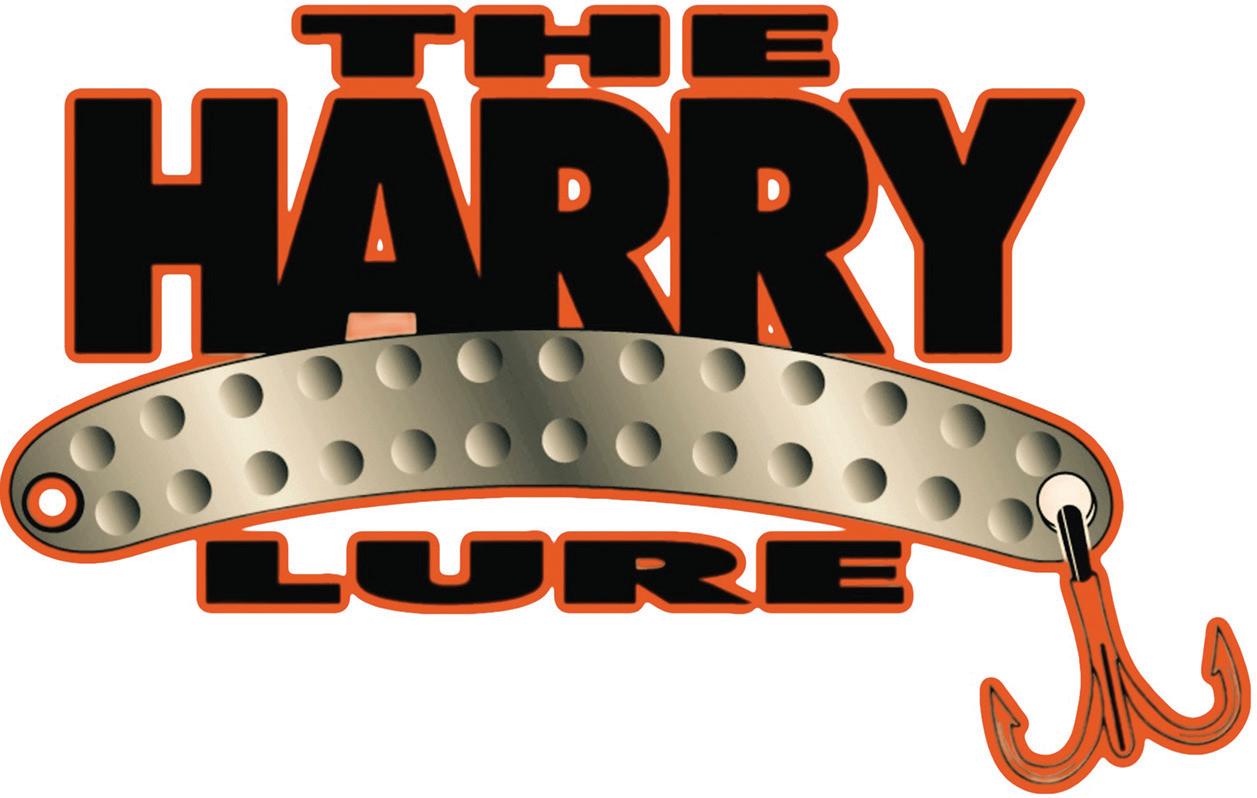
My favorite in the fall is crock pot turkey. Rather than plucking the bird, I skin and remove the entrails. Place the entire carcass in a crock pot, add a quart of low sodium chicken broth, potatoes, carrots, an envelope of Liptons dry soup mix for spices and slow cook on low for 10 hours.
Pluck the carcass of all meat and use in a variety of menu items from sandwiches to soups. Leave the mature gobblers alone in the fall when they weigh the least and wait for the excitement of a springtime hunt. Crock pot turkeys taste great, utilize the entire bird your friends that are finicky eaters will never be able to tell they were wild birds.

Stu Bristol is a Master Maine Hunting, Fishing and Tidewater Guide, Outdoor Writer and game call maker. His features have been published nationwide for more than 60 years. Stu was inducted into the National Wild Turkey Hunting New England Hall of Fame in 2019. He can be reached at deadlyimpostergamecalls.com
The cow moose was looking directly at me from 40 feet away and in between us was her calf.
As a forester there have been many long days in the woods through all types of weather and all seasons of the year. This day was in the late spring and I was walking an old woods road off Route 107 in Baldwin to locate a landlocked parcel. The plan was to find the property and circumnavigate the boundaries.
I had all the required equipment. A silva ranger compass, map of the property and several rolls of
something triggers our primal instincts. I believe it is our olfactory system sensing something that we do not even recognize or acknowledge. The human sense of smell is poorly developed but I think our subconscious knows more than our waking selves and sends an alarm to the brain. That funny feeling.
Well, that funny feeling brought me back to the task at hand and I started observing. The roadbed was grown up to grass and ferns and saplings were crowding the edges. Forty feet ahead something moved. It was an ear, then
Now this is a different situation. I glanced around for climbable trees and realized I was in a stand of red maple poles six inches in diameter. I began to sweat. The cow now realized junior was watching something and came to her feet.
pink flagging in my vest. From habit I always carry a hunting knife and fire starter. The lot was a half a mile from the tar so I was counting paces as I went to put me roughly in the right place to look for old blazes.
My father taught me the value of observation skills. Whether you are deer hunting, fixing a piece of equipment or driving a car, use all your senses to focus on what is going on around you.
On the day in question, I was not paying attention. I was counting paces and wondering why I had not brought extra bug dope with me. Then I had a funny feeling and I stopped. You have been there. We all have. Something isn’t right. There was no sound and nothing moved but
Now this is a different situation. I glanced around for climbable trees and realized I was in a stand of

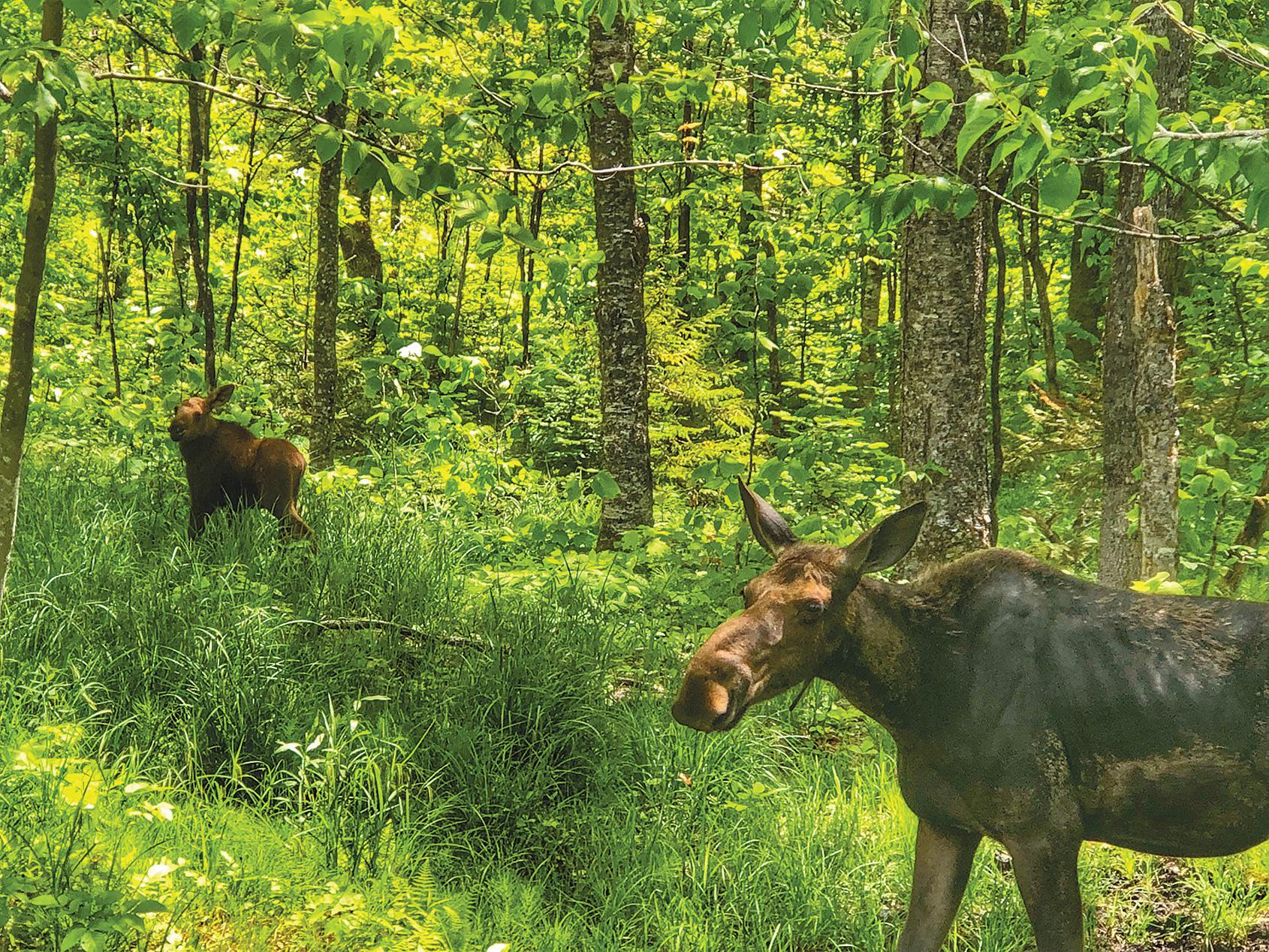
two ears, twitching as flies were pestering them. A moose! Now you don’t see a moose everyday even if you do spend every day in the woods. It appeared to be a cow and she was chewing her cud and had no idea I was around.
I stood there, thinking about the 50 acres I needed to flag and wondering what to do. I could go around but that would mess up my pace count. As I was looking off to the right trying to formulate a plan a commotion commenced suddenly and seemingly right in front of me. A calf moose half way between me and mom was struggling to its feet with legs that were far too long. The uncoordinated calf began to stabilize with front feet spread wide and eyes staring straight at me.
red maple poles six inches in diameter. I began to sweat. The cow now realized junior was watching something and came to her feet. Impressive! Moose are tall. She was looking right at me and I was weighing options. Moose are fast so running was not on the table. Thankfully my prayers were answered, that cow grunted to her calf and they took off down the trail away from me at
a pace I could not have matched. That was the closest I have ever been to soiling myself. Lesson learned. Pay attention. Thanks Dad.

Joel F. Tripp is a Maine Woodsman who to date has never had to climb a tree to avoid a moose. For more information go to; trippsend.com



by Denny Corriveau, Kennebunkport, ME
The beginning of summer is an exciting time of year as it brings about much anticipation.
Why, you ask? It is the annual Maine moose lottery.
If you are fortunate enough to be drawn, it is
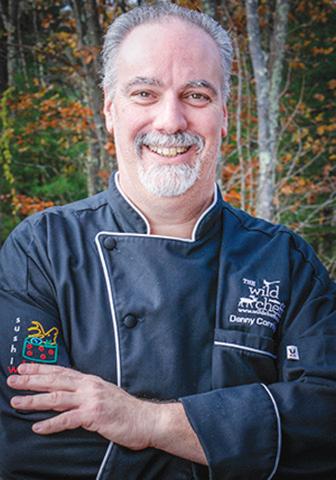
was epic. I was picked for a November cow and within a few days my phone rang. It was a gentleman that was also picked who drew a bull permit for one of the northern zones. The reason for his call was to offer a swap – his September bull
hunt, so he was not hyped about traveling to Northern Maine again.
My dream was to harvest a bull that was between 50-60” and I did in fact accomplish that thanks to my guide, known as “The Legend”. My bull was 51 1/2” and the 15th largest moose in Maine for that year. It made MASTC and just missed Boone & Crockett by 3/8”.
My dream was to harvest a bull that was between 50-60” and I did in fact accomplish that thanks to my guide, known as “The Legend”. My bull was 51 1/2” and the 15th largest moose in Maine for that year. It made MASTC and just missed Boone & Crockett by 3/8”. the opportunity of a lifetime!
I have been blessed to have participated in six moose hunts prior to 2024. My role has varied, but each and every one of those hunts provided something special that is etched in my memory.
My first moose hunt
permit for my November cow.
I had dreamed of a bull hunt ever since I learned about moose hunting. With no hesitation, I agreed to the swap. I was told by this gent that he had participated in six family hunts and had already experienced a northern bull

This year one of my closest friends from the Midwest was drawn for a September bull. I will be embarking on my seventh moose hunt. I am not his guide, but a hunter/game chef of 45 years. I have hunted with family and friends who wanted to hunt without a guide, and with a few quality guides who had varied methods for hunting moose.
Through these experiences I have learned a number of valuable insights that will help increase the odds for anyone who engages in this type of hunt. I’ve seen a number of people who go home empty handed. What contributes to unsuccessful moose hunts? In many cases, it’s the lack of being prepared.
Preparation plays a huge role in your hunting success.
Even skilled hunters can end up with an empty poke. Deer and turkey hunting are not the same
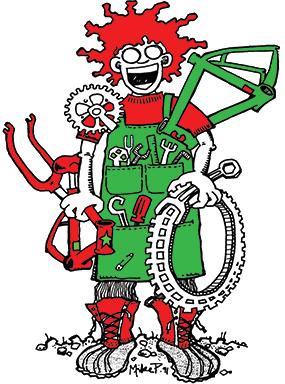

as moose hunting. The dynamics of hunting moose in the past 25 years have changed; particularly over the past 10 years.
While we do have a healthy population of moose, I personally believe that we are giving out far too many permits. I have observed people harvest moose that are smaller in weight and horn growth is not as large as years prior. This is shifting some of the methods of how to hunt moose, and the things necessary for you to be successful.
Hunters come from diverse schools of thought, so I understand “Mainers” who want to do it on their own.
My recommendation to many is to hire a guide if you can. The advantages in this new era of moose

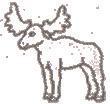
hunting are significant. Many of the guides live within proximity of where they guide. They put an enormous amount of effort into scouting areas that have history or habitat that supports a vibrant moose population.
Moose guides also understand that ten to twelve ply tires can ensure you are not stuck in the wilderness with a flat tire and no cell connectivity.
Guides have the appropriate equipment such as winches, ropes, pulleys, and numerous other things to ensure that when you harvest a moose, you have what is necessary to pull that moose out and get it to the check-in station. When you are trying to pull out a game animal that weighs 500-1,000 pounds you need specific things to get the job done.
Mental preparation also matters. Having a positive expectancy and place a good ethical shot. Having a weapon worthy of getting the job done and having practiced and sighted it in with verification upon ar(Tradition cont. pg 66)
A lot of sportsmen might argue with me, but aside from the vagaries of the timing of the rut, deer hunting is pretty much deer hunting. The same is true for the moose hunt; and depending on your preferred method, you can’t say much different about bear hunting. But duck hunting offers an everchanging kaleidoscope of outdoor experiences as the soon as the harvest season hits.
For those of us blessed enough to hunt on Maine’s river drainages, the fun
experiences, though, it’s hard to beat the flight of the northern diving ducks. When they come, they come in clouds of hundreds.
One winter morning I was driving to work and spied a flight of common goldeneyes—colloquially known as whistlers for the shrill sound their wings make as they fly—speeding down over the Penobscot River, which was frozen over except for the sections containing those boney rapids in the shallows. When I checked the outside
For those of us blessed enough to hunt on Maine’s river drainages, the fun starts the first week, as blue-winged and green-winged teal start packing their bags for warmer climes at the first frost. starts the first week, as blue-winged and greenwinged teal start packing their bags for warmer climes at the first frost. Wood ducks hang around a bit longer, and flights of black ducks and mallards reliably stick around as long as there’s open water. For the finest of hunting


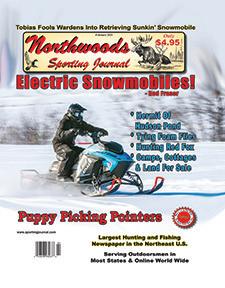
temperature, dear reader, it was twenty-six degrees below zero. There’s a reason why whistlers are some of the last ducks to reluctantly make their way down the Atlantic flyway.
In addition to the variety of species that make up the changing of the guard as the season matures, there


are a couple of different ways to hunt. Pass shooting is pretty popular and requires the least amount of gear; you just set up on a point or a narrow part of the river where ducks are likely to pass over, and take your shots as they cruise by; but hunting over decoys brings them in closer, and most importantly, gets them to

by Matthew Dunlap, Old Town, ME
species limits on wood and black ducks.
The whistler, or goldeneye, should be easy to pick out. With black wings and a white underbelly, they certainly stick out

slow down and even land in your spread, increasing your odds of success.
Ducks fly fast; wood ducks and whistlers can top seventy miles per hour, requiring lots of practice at a skeet range to have much success. A chief skill a duck hunter also needs to develop is species identification, as there are individual


(please allow 4-6 weeks for your first issue) Mail to: Northwoods Sporting Journal P.O. Box 195 West Enfield, ME 04493 Email: info@sportingjournal.com
even at full speed. But the Legislature made that a bit more problematic in 2015, when as part of LD 807, they protected in law as threatened the Barrow’s goldeneye, which is a subspecies of the common goldeneye. Identification is the trick; while a common goldeneye has a bright, white circle on
its otherwise-dark green head (punctuated by its stark yellow eye, inspiring its name), on a Barrow’s the circle is reduced to a curved crescent. That’s not too easy to pick out at a half-hour before sunrise on a duck flying at top speed.
The first reasonable question to ask is whether or not the Barrow’s is in trouble. That answer is a matter more of management opinion than of strict science; while the population of the common goldeneye is estimated to be around three million worldwide, the Barrow’s numbers are less than two hundred thousand. A respectable population, albeit considerably smaller.
We don’t see a lot of Barrow’s in Maine, as we sit at the extreme southern part of their range. I shot one many years ago (which is a story unto itself), and largely gave up hunting in the latter part of the season (Cheek cont. pg 66)
One of the most impressive things about living in a rural setting is how often we get to see wildlife, right in our backyard or just down the road from us. Take just a few days ago, when I was coming back from some chores in my village of Castleton. As I passed a house only 75
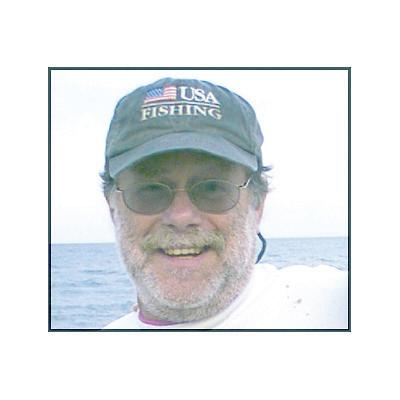
by Dennis Jensen Vermont
yards from where I turn off to take my road home, I saw two jake birds, feeding just off the road. I pulled the truck over, hit the warning lights and grabbed my trusty camera. The shots were close and came out very well. (See photo). Then, after turning on my dirt road,
only some 200 yards from my home, I spotted two hens and seven poults, crossing a neighbor’s driveway.
Four days later, Kathleen, my wife, and I were headed to a wake for one of her relatives. Down at the end of our dirt road, at 1 p.m., two gorgeous fawns crossed the road. My wife asked, where’s the mother, and told her that, at this early stage of the two fawns’ lives, they will always be following the
Over the years, I have written about my passion for mountain biking and how I restrict that pastime to a rail trail, located about four miles from home. I have biked along that trail now for about a decade and the things I have seen, wildlife that is, could fill two columns.


Old Guns Bought, Sold, Traded and Talked About (Incessantly)

We have an amazing selection of guns at our Bennington, Vermont store. We also sell a variety of modern, rare & antique rifles, pistols and scopes on www.GunBroker.com Search by seller "BenningtonArmoryLLC".
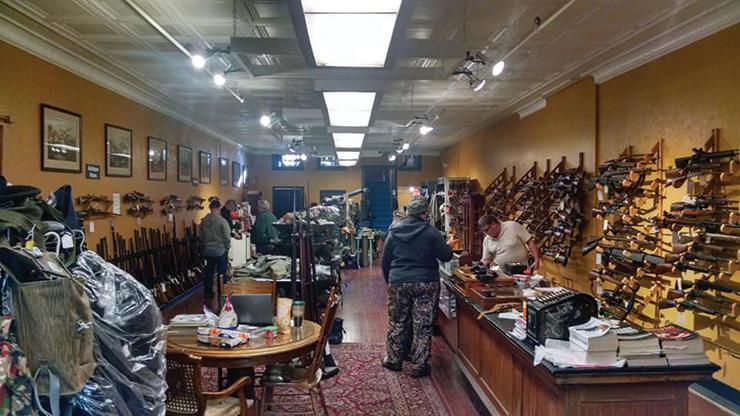
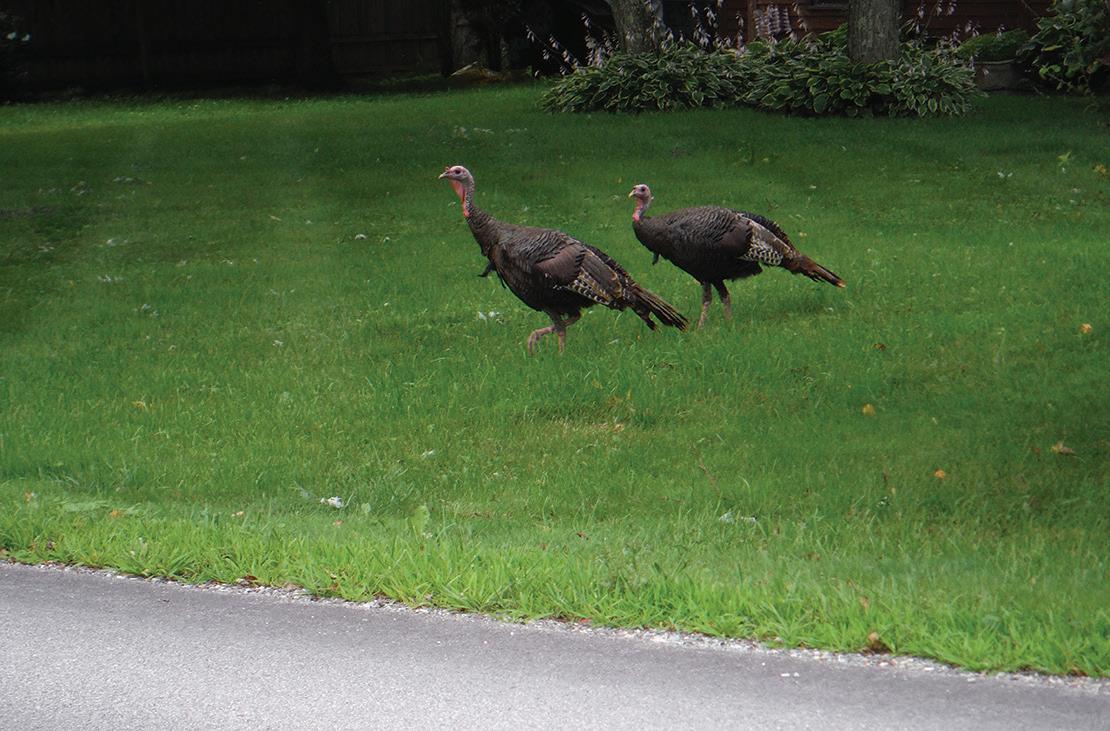
Two jakes cross a lawn just down the road from the author’s home in Castleton, later in July. A minute later, only a hundred yards from home, two hens and seven poults were seen crossing a neighbor’s driveway.
grab the camera and get off a shot or two. What I do remember, however, is the sound of saplings snapping and twisting as the young bull crashed through the woods.
doe. We simply missed her when she crossed the road.
Before a bad knee went south, I would head down the dirt road where I live with a vigorous walk, usually early in the morning for many years. One morning, almost a mile into my stroll, two coyotes ran across the road, only 30 yards away.
Perhaps two decades ago, headed up to my favorite turkey grounds, late in the day and about a mile from home, my goal was to roost a tom. Turning on a private road, I spotted a young bull moose, the first and only moose I have observed in my home town. He was moving so fast I did not have a chance to
One late night, some years ago before I retired, I was headed home from work on Route 4 and, up ahead, the blue flashing lights of a police car caused me to slow down. An officer with a bright light waved me by and as I slowly passed a Cadillac in the road, a large cow moose was there, sadly dead on the blacktop.
Over the years, I have written about my passion for mountain biking and how I restrict that pastime to a rail trail, located about four miles from home. I have biked along that trail now for about a decade and the things I have seen, wildlife that is, could fill two columns.
There was the huge

snapping turtle that granted me one of my all-time favorite photos, a close-up shot of the prehistoric appearance of the big turtle, the reptilian, ancient photo of his face and two huge front feed.
On another morning, I was rounding a curve in the trail when I spotted a doe, feeding on the edge of the trail, maybe 40 yards away. I slowly stopped, pulled the bike from view and grabbed the camera. Somehow, she spotted me and took to the thicket. But moments later, a fawn emerged and, in a panic, ran down the trail in my direction. I got four fantastic shots of that fawn from only feet away.
There is more, much more, but you get the point. Life here, right on the edge of big woods, I have been fortunate enough to not only see some great moments of wildlife, I have been blessed enough to have taken both deer and turkeys not far from home. I guess you could say that I am blessed.

Dennis Jensen is a freelance writer who resides in Vermont. He can be contacted at d.jensen62@ yahoo.cm
“Unlike most hunters, no one in my immediate family hunted and we didn’t have guns in the house. I understand that is unusual because hunting is a tradition that is passed on from generation to generation within a family. I didn’t oppose hunting; it just never occurred to me that I might like to hunt.
“Today I hunt for many reasons. I hunt because I love native plants. I hunt because I love our forests and wildlands. I hunt because I have a great deal of respect and compassion for deer and I want their population to be healthy and stable. At the same time, I love harvesting and processing high quality, lean meat.
Never in a million years would I have imagined that one day I would love hunting. Fast forward to today, I would describe myself as an avid hunter. I hunt all three seasons, archery, rifle and muzzleloader in Vermont, New Hampshire and
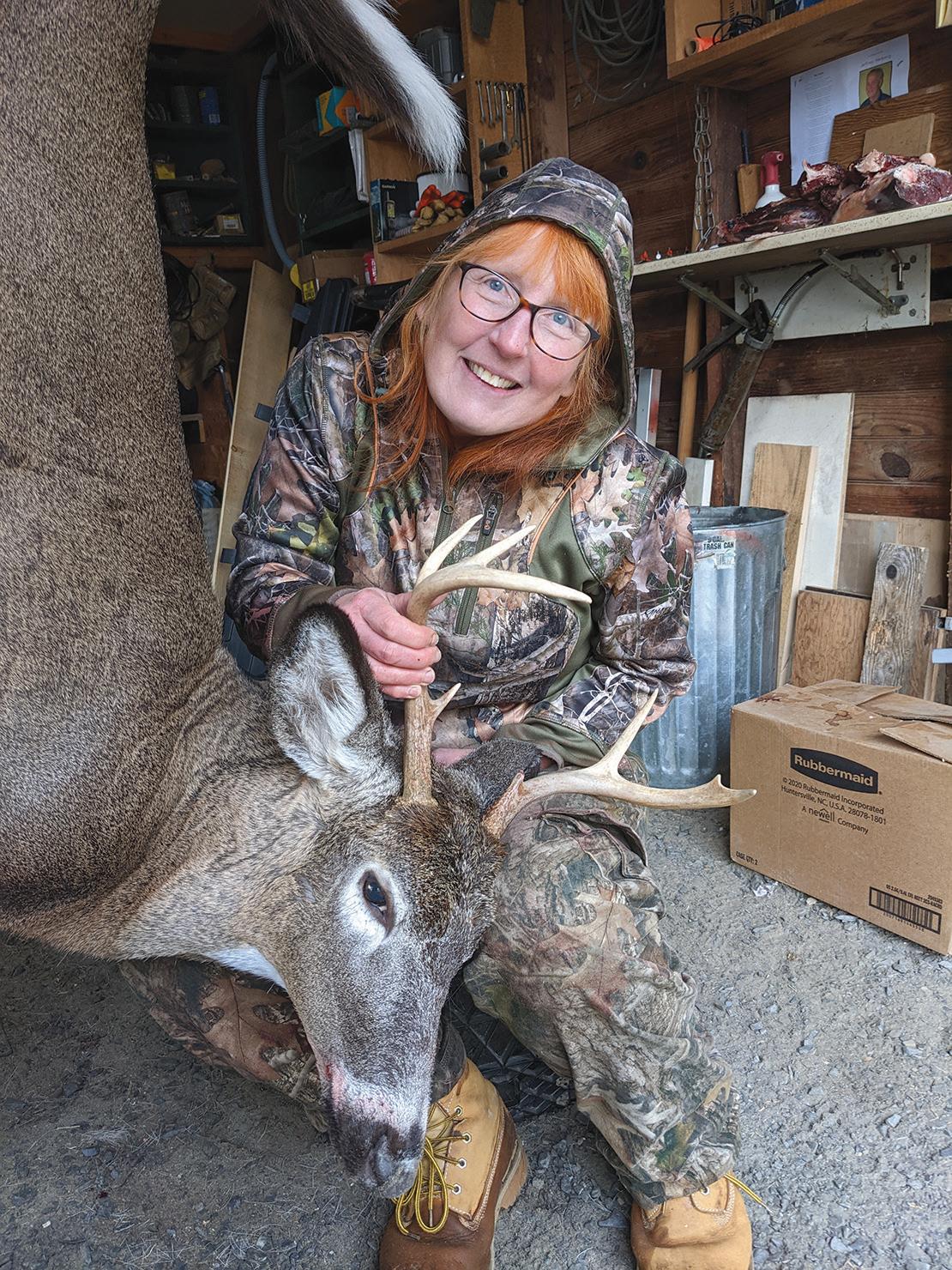
sometimes Maine. Today I have a million reasons why I hunt from enjoying being out in nature to bringing home high quality, low cost meat. So what was the thing that changed my mind about hunting? What flipped that switch in my brain from “Non-Hunter” to “Hunter”? Believe it or not, I hunt because I love native plants.”
That was how Norwich, Vermont resident Jenn Goulet answered the question of why I hunt. She was speaking at a program, which I was moderating, dealing with deer over

browsing the habitat. After the meeting, I had to ask her more about how she came to be a hunter and the following is what she said.
“Around 2012 a speaker from Cornell University spoke at my school. The speaker’s main point was that humans have created an imbalance in our forest ecosystem. Large deer populations and exces-

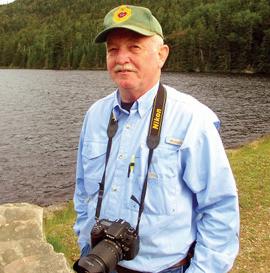
sive browse are symptoms of the problem. Due to a perfect storm of factors, deer have less habitat, less food, and fewer predators than ever before. We have built up and fragmented the forest landscape to such an extent that deer and other wildlife have less habitat and food available to them than ever before. We have also extirpated top of the food chain predators. There are no longer any breeding populations of wolves or catamounts in the northeast. So, deer have fewer natural predators than ever before. We humans are also less willing than ever before to step up and fill that role as top predator by hunting. Large deer populations wreak havoc on the forest understory since deer have evolved eating plants that are native to North America and prefer them over nonnative plant species. As larger deer populations are squeezed into fewer and fewer wild lands they devour every single plant available to them.
Gary W. Moore,
Forests have lost the ability to regenerate because hungry deer eat every single seedling. The speaker’s take home message was that if you love our forests and wild lands, if you love native plants, if you want them to be around for future generations to enjoy, then you need to hunt. More hunters will reduce the deer population and it is the most expedient way to restore our forest ecosystems.”
(Hunter's cont. pg 61)
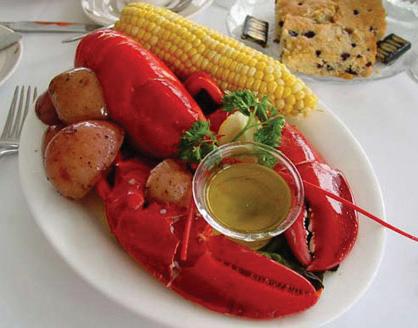


by Joe Judd Shelburn, MA
In New England, sports have always been important to many, many people. Summer evenings listening to Red Sox games, long ago winter afternoons watching Bird and Co.

enjoy, it as well.
And when Tom Brady said goodbye on 03/17/2020, the saddest St. Patrick’s Day ever, he took with him an era of Boston sports history. After two
The same is true about hunting, until a back, leg, shoulder, or knee gives out, and suddenly this so-called “simple task” becomes a major challenge, which I can relate to with first-hand knowledge, because I’ve been there!
rule the NBA, the Bruins sweeping NHL teams off the ice, and the Patriots, finally, turning things around into a myriad of winning seasons! I only wish some of our parents could have still been around to see, and
decades of watching Brady, we became accustomed to his, “Lazurus act” of willing his teams back from the dead repeatedly which, for Patriots fans, was so beautiful to watch and root for. And like thousands of
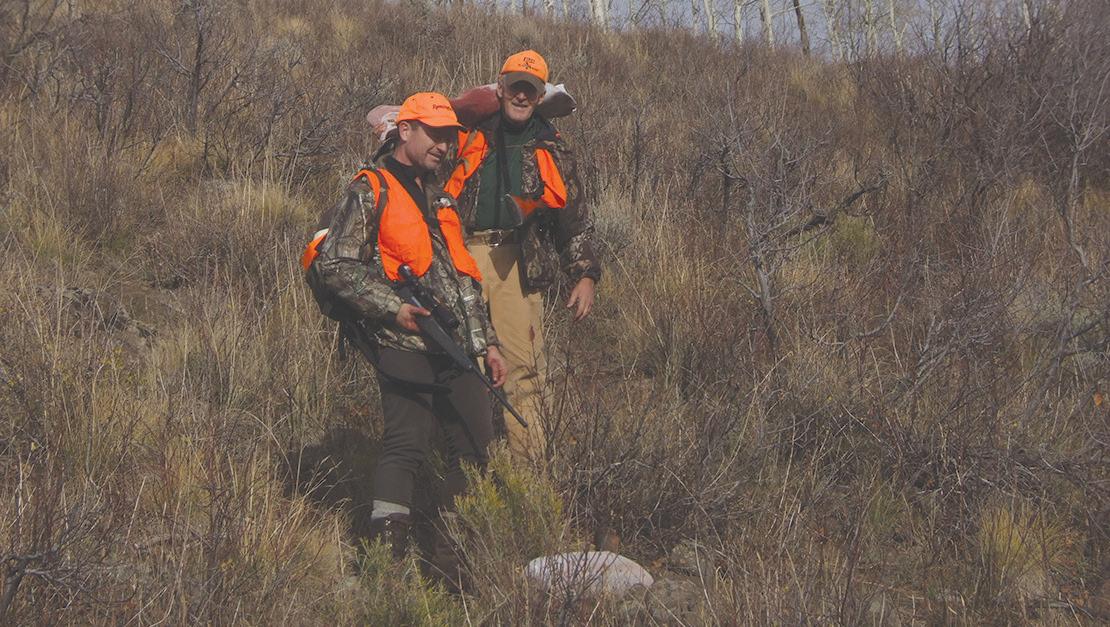
others, I admit to weeping openly when I heard the news that he was gone.
But through this odyssey of excellence, we learned something from Tom Brady about the way he took care of himself, continuing to play football at a high-level well past the age when most NFL quarterbacks are sitting in a commentary booth! He was given a gift, and he did everything possible to protect it.
Many of us have also
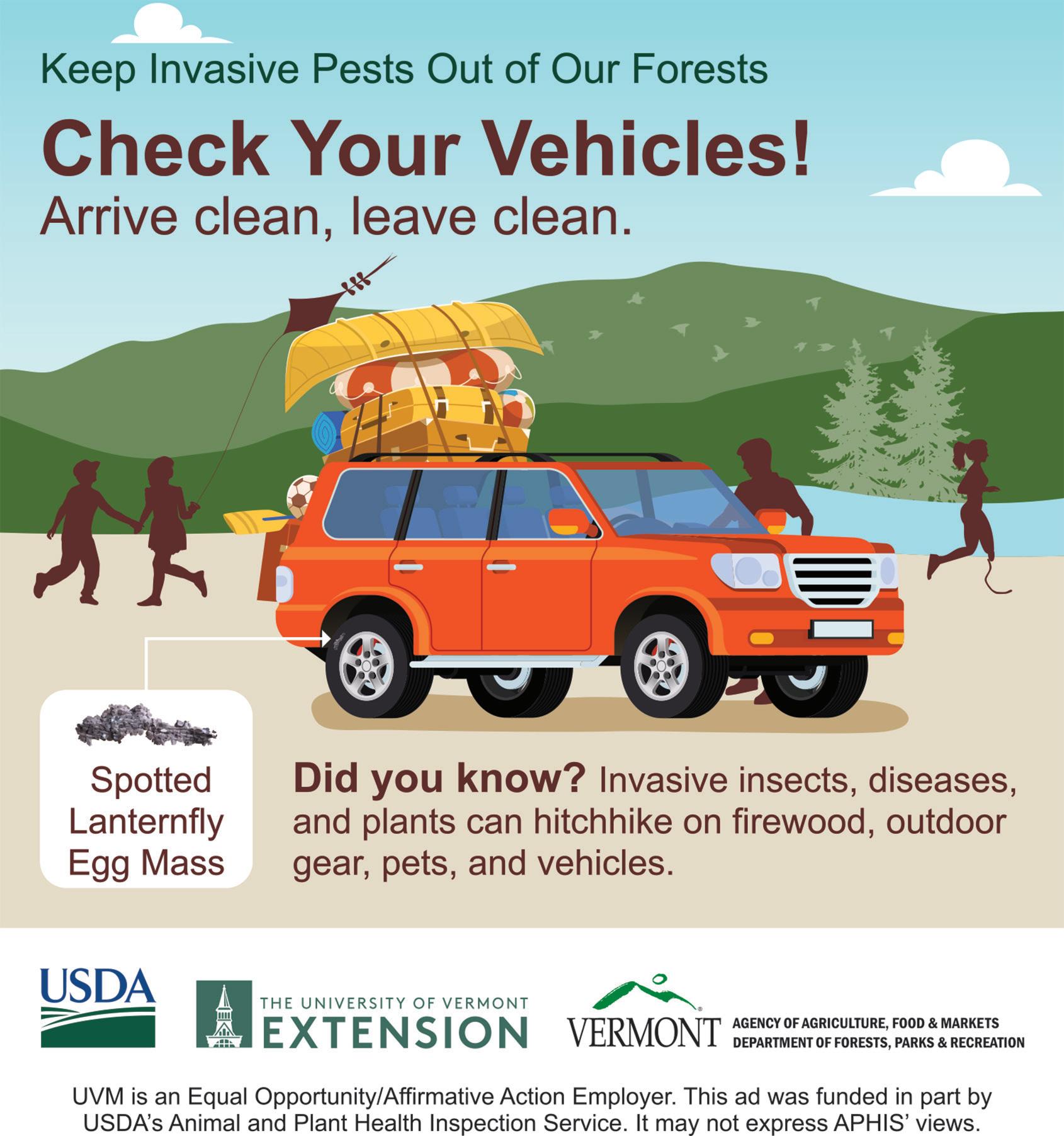
true about hunting, until a back, leg, shoulder, or knee gives out, and suddenly this so-called “simple task” becomes a major challenge, which I can relate to with first-hand knowledge, because I’ve been there!
been given a gift, of being able to hunt in New England for many years! Moreover, through these years, we’ve faced many challenges along the way. Like maneuvering up and down trees daily, long waits on stand in all types of conditions, working through rough and difficult terrain, long hikes, or long hours of dragging deer, bear, moose or whatever, out of some god forsaken location that most could never imagine.
Venturing into these challenges can be torture on your lungs, heart, body, and mind! Now, I’m not comparing myself, or anyone else, to Tom Brady. However, some think of football as simple, until they try it themselves. The same is
A few years back a knee injury took me off the ridge, and into the flat lands, looking for any sympathy I could get. A little twist at the wrong time during a stormy day of deer hunting was all it took. I knew something was up as I struggled just to get back to the truck. I remember trying to hide it from Linda for a while, but being the “absolute nurse,” it didn’t take long for her to catch on. A few days went by, and it began to feel better. However, as the hunting season wore on it became apparent that something was wrong! A visit to my physician, Dr. Robert Miller, brought the whole matter to a screeching halt! And with two words from Doctor Robert, which were “NO HUNTING”, the rest of the season



Vicky A. Dubois of St Agatha, Maine caught this remarkable landlocked salmon at Madawaska Lake this past winter. The fish weighed 4.3 lbs, was 23 inches long and was caught on a shiner.
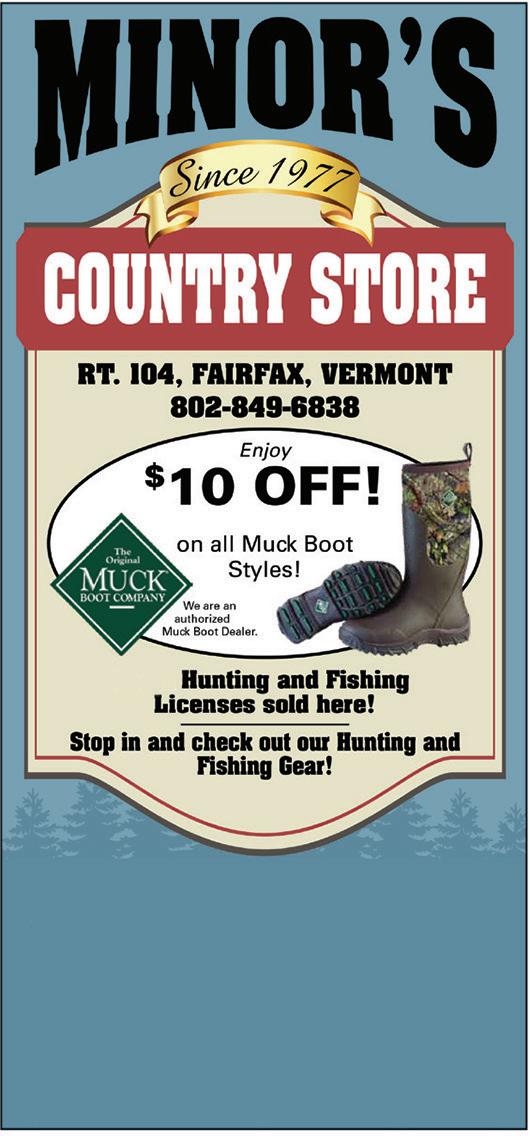

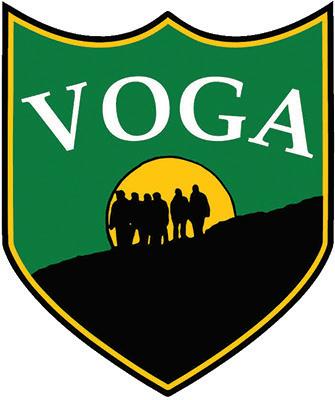


Testing your luck at trying to spot a black bear can be relatively easier during the spring and early summer months based on two facts. The first is that obviously many of the black bears’ preferred food sources are much
by Justin Merrill, Cherryfield, ME
several others actually dry up and are no good for black bears during the fall months. A bear hunter on a non-baited spring black bear hunt would do well to target mountainous hillsides that green up first. Glass all the green patches
down wherever they feel like doing so.
Spring and summer are gone with limited food supply remaining. What will the black bears do? Well, let’s see, In September there are still a few remaining blueberries but, however, at this time of year the raspberries and black berries are ripening up. Also during September on into November the hard
Dozen’s or more of herbaceous vegetation that black bears love like that of dandelions, skunk cabbage, some ferns (fiddleheads), plantain, wild violets and several others actually dry up and are no good for black bears during the fall months.
more plentiful. The second fact making it somewhat easier to stumble upon a large black bear during the spring and early summer would be that the black bear boars are moving all over the place in search of a receptive mate.
By late summer leading right up to the fall months suddenly the food sources that once were plentiful are dried up and withering away. In addition to seasonal changes to plant life, any edible treats remaining are also gobbled up by deer, coyotes, red foxes, porcupines, birds and several other critters. All these animals are competing for the same herbaceous non-woody plants that black bears also love. Once the mating season subsides the black bear’s main focus is finding plenty of food. This can make it more difficult for a bear hunter to find black bears.
Dozen’s or more of herbaceous vegetation that black bears love like that of dandelions, skunk cabbage, some ferns (fiddleheads), plantain, wild violets and
on secluded hill sides and in two to three year old cuts. Also look for black bears along brush lines, swamp edges that get a lot of early season sun and drainage areas that too also get plenty of sun and has trickling water running through. Douglas Boze the author of, “Just Bears, No Bait”, says in a “Hunt Backcountry” podcast to look for fresh cuts or two to three year old cuts. He goes on to mention that brush lines, swamp edges and drainage areas are all great starting points to go look for black bears.
Douglas was asked whether or not black bears have distinct patterns that a hunter can look for to make it easier to find black bears. He said, “bear are looking for food! To me, that is the pattern”. I’ve heard Douglas also say that bears do not have setin-stone bedding areas that they come and go from during the day like that of the whitetail deer. The black bears are moving so much and far distances in search of food that they will lay
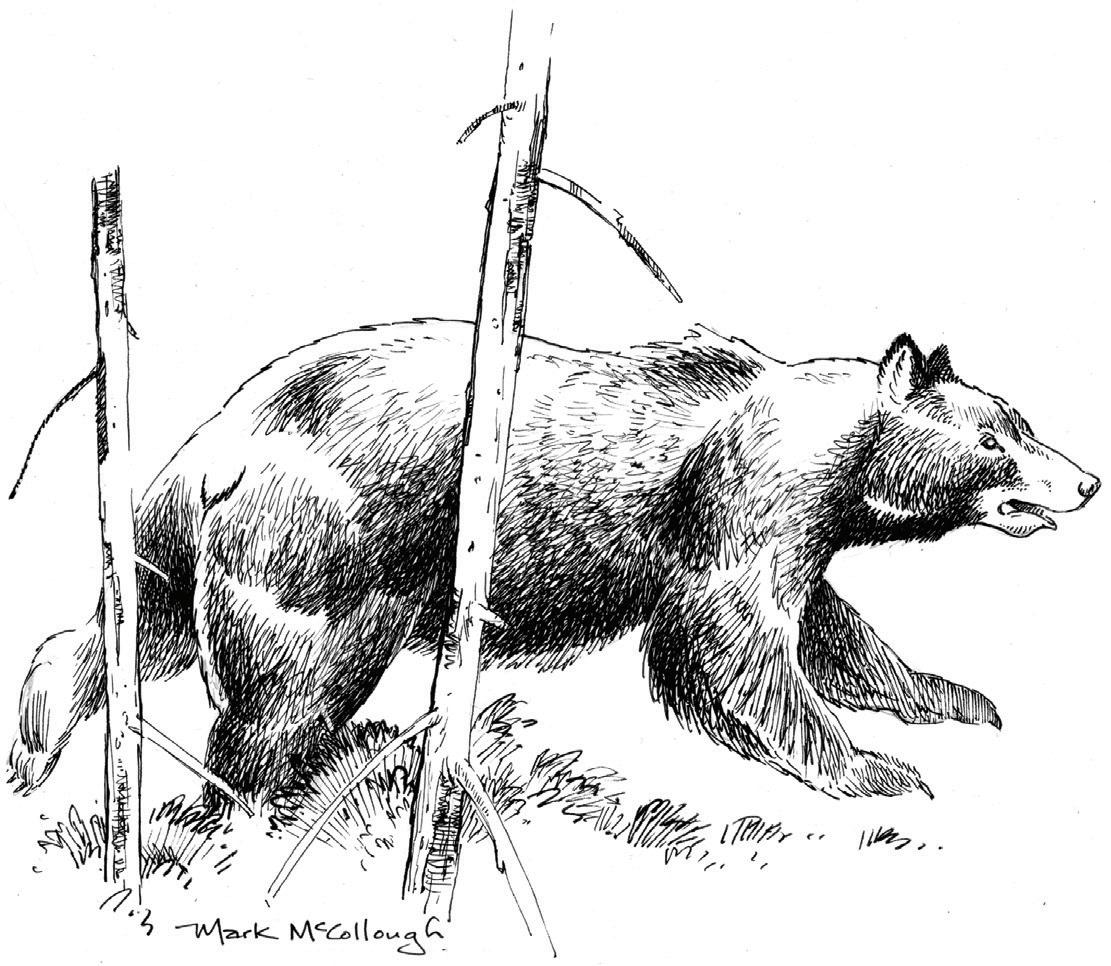
mast broad leaved woody trees like that of red oaks and beech trees are dropping nuts that the black bears absolutely love. Occasionally black bears will find secluded apple trees. In addition to these fall favorites there’s also the black cherry tree or what some call the wild cherry or rum cherry tree. These trees obviously produce fruit that the black bears target in the fall months along stream or river banks where these trees do well due to rich moist soils.
The old timer bear hunters used to take their canoes and float the rivers in search of black bears climbing and pulling down black cherry trees. Black bears sometimes become a nuisance for farmers as they will sometimes camp out for days on end in corn fields devastating the corn crop. Fall herbaceous plants that black bears can find are red and white clovers and various types of grasses. These plants can actually grow in a “bearmade-clearing” as I call it.
Black bears will of-
ten strip small diameter trees, slightly bigger than your wrist, to eat the sugary sweet cambium layer under the outer bark of the trees. It’s the same reason that porcupines strip the bark from trees. Douglas Boze says that if you cup your hands together and pull them apart about two inches that is about the diameter of a tree that black bears prefer to strip. Over the course of several years open pockets of land form deep within the forests caused by black bears. These clearings are usually right by water or within a wetland. With ample sunlight and moisture, grasses and clover will start to grow. Many other favorite plant species will begin to grow there as well making it a black bear paradise. A bear hunter would do well to search for these

types of clearings on Aerial photography on a mapping app like that of the OnX Hunt app. This can help a hunter find random small clearings within a mountainous forest land. These clearings along with all the aforementioned places would make for a great starting point to search for black bears.

Justin has around fourteen black bears from Maine and Canada under his belt. He has taken all but one with a bow and arrow. He educates the public about black bear Biology and hunting black bears on his YouTube channel. In addition to black bear hunting videos there are other types of hunting, ice fishing, fly fishing, product reviews and how-to videos on his “SPIKES and GILLS” YouTube channel.
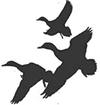

Soon after my wife and I purchased our camp in western Maine, we invited her parents to join us. It wasn’t long before this became routine. Her mother did the cooking for our little troupe, her father taking it upon himself to be caretaker of the camp. By midlife, Charlie Troop acquired many skills a young attorney from sub-
As my father-in-law grew older, I’d set out solo to fish the surrounding rivers and streams, always making time to take him out in my sixteen-foot, square-stern Grumman. While Charlie lowered his line from the bow, I’d steer the four-horse Johnson, trolling from the stern.
urbia found foreign. He had a knack for coaxing a recalcitrant generator to sputter into life. Treating an ancient pump like a princess, he coaxed its mysterious levers to sweep up and down, forcing water up a hill and into our sink. For the next twenty years, Charlie taught me how to perform chores necessary to maintain a cabin
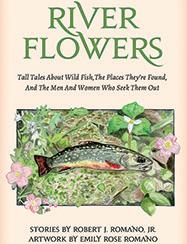
located forty-five minutes down a dirt-and-gravel logging road, showing me how to tar a roof, cork windows and solder pipes. He was by my side, cutting, dragging, splitting, and stacking billets felled from our woodlot. When in his eighties, the man could lay a tree down within foot or so of where he wanted it to fall.
My father-in-law had grown accustomed to casting a spinning outfit, but when we began fishing together, he converted to a fly rod. Charlie relied upon a fiberglass fly rod purchased from a box store while wearing a pair of patched hippers. Back then, I couldn’t understand why he had so much trouble wading. Now, well past middle age, I find my legs unwilling to carry me across those same runs, and unlike Charlie’s old-style hippers, my boots have felt soles.
As my father-in-law grew older, I’d set out solo to fish the surrounding rivers and streams, always making time to take him out in my sixteen-foot, square-stern Grumman. While Charlie lowered his line from the bow, I’d steer the four-horse Johnson, trolling from the stern. Although I’d tie on a streamer, perhaps a Gray Ghost or maybe a Mickey Finn, he preferred copper spoons. His favorites were Sutton
RIVER FLOWERS - by Robert J. Romano, Jr. "Lyrical, poignant, and sometimes fantastical angling tales from the Maine woods and beyond, written in the great storytelling tradition of Sparse Gray Hackle and Robert Traver..."Stephen Sautner, author of A Cast in the Woods and Fish On. Fish Off.
FOR A LIMITED TIME: readers of Northwoods Sporting Journal can obtain an autographed copy, with free shipping and a five-dollar discount from the retail price of $25.00. Send your check in the amount of $20.00 made payable to West River Media to Andora and Romano, 15 Essex Rd., Suite 406, Paramus N.J. 07652. For more information go to forgottentrout.com
44s and Mooselook wobblers. We’d spend hours in that old boat, discussing matters I’d never dare speak of with others.

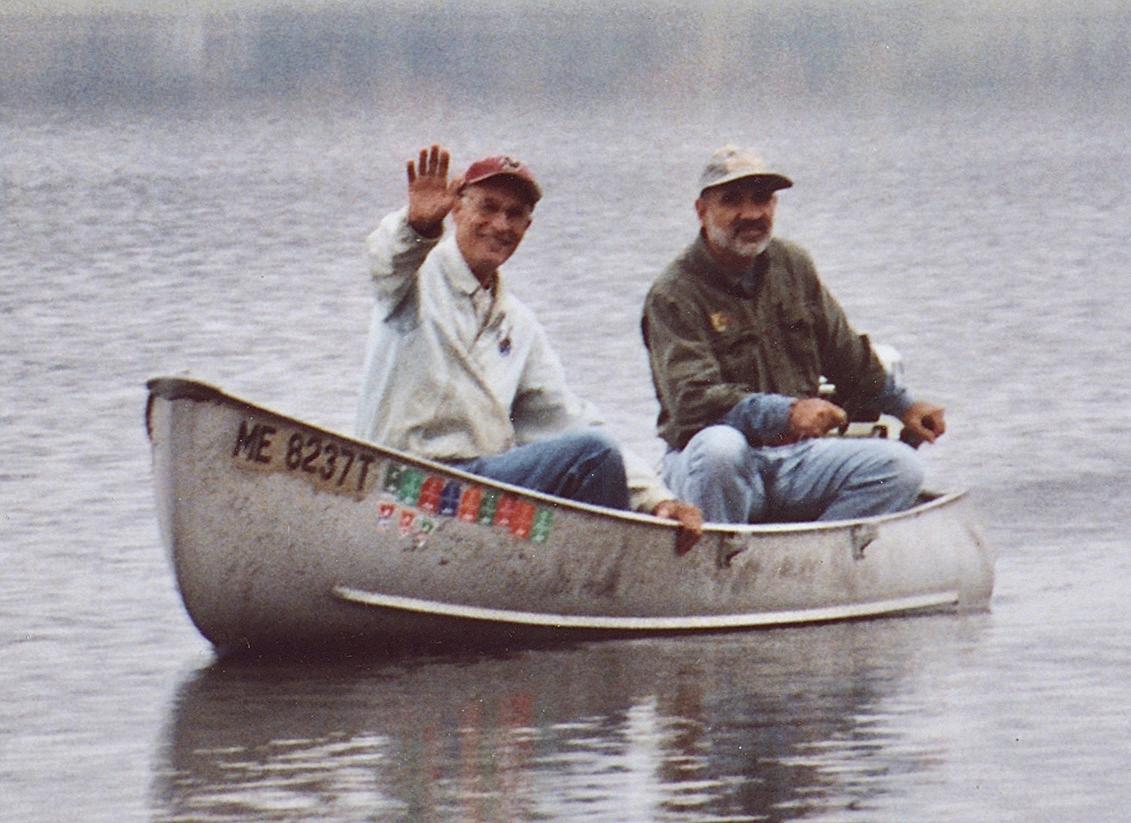
Lying about his age, Charlie had joined the See Bees during the Second World War. When a head wound inflicted by a sniper’s bullet would not stop bleeding, a doctor applied a bandage and ordered a medic to sit on the eighteen-year-old’s head while being overheard saying, “If this doesn’t work the guy is a goner.” He was a union man, making a living as a printer until his eyes went bad. In his later years, he wrote letters to the editor of his local paper, many of
which were published, each decrying both Republican and Democratic politicians when he felt they went afoul of his progressive ideals.
As an attorney, I’ve represented a brain surgeon, a number of engineers, a scientist or two, as well as quite a few teachers and college professors. There was also more than one F.B.I. agents and a one man, who only after much urging, grudgingly admitted he worked for the C.I.A. (Supposedly in
by Bob Romano, Rangeley, ME
an administrative capacity.) But of all my clients, none were brighter than my father-in-law.
A high school graduate, Charlie was an avid reader. He could hold a knowledgeable conversation on just about any subject whether it be philosophy, history or science. He understood all things mechanical and electrical. A devote Catholic, each Sunday he drove an hour from our cabin to attend mass in a little church built with funds once raised by Fly Rod Crosby. Yet, he never attempted to divert me from taking those mornings to fish a backwoods pond or stream. Back home, Charlie continued to make the rounds, mowing lawns, fixing broken appliances, bringing food, or simply spending time with those in the neighborhood who had no family to assist them.
The only real disagreement we had involved the killing of fish. Charlie saw no reason why he shouldn’t

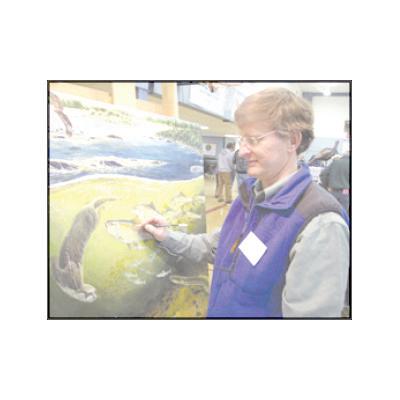
The first tinge of September frost has me longing for caribou country. While we experience the last gasps of summer warmth, snow clouds are billowing 500 miles north. While we stroll through New England forests painted with crimson maples and yellow aspens, shelf ice is forming on the shores of arctic lakes. Northern black bears fatten on hillsides of blueberry and crowberry and polar bears venture inland looking for caribou carcasses. Wolves mourn the end of a short arctic summer.
Joe and I were fortunate to make four treks

by Mark McCollough, Hampden, ME
north of the tree line when we could still hunt caribou in northern Quebec. Each adventure was different.
lic, but it was the expansive horizons and the beauty of the tundra in autumn that I fell in love with.
The arctic is big sky country. The weather fronts rumble off Ungava Bay in quick succession. They seem to slide off the pole
Caribou are everywhere and nowhere. Their presence is enigmatic – a shed antler here, a wolf kill there, and saucer-shaped hoofprints left the night before on the beach along the lake.
Tufts of hair clinging to arctic bilberry and fresh droppings tell of the caribou that passed this way last week. Were they the vanguards or the stragglers?
Each landscape and wildlife unique. Sometimes there were caribou by the thousands, sometimes there were hardly any. The hunting and fishing were idyl-
and hurry their scuddy, lead-colored clouds to lower latitudes. Morning rain can turn to snow squalls or skies clear as Waterford
(Sky cont. pg 64)
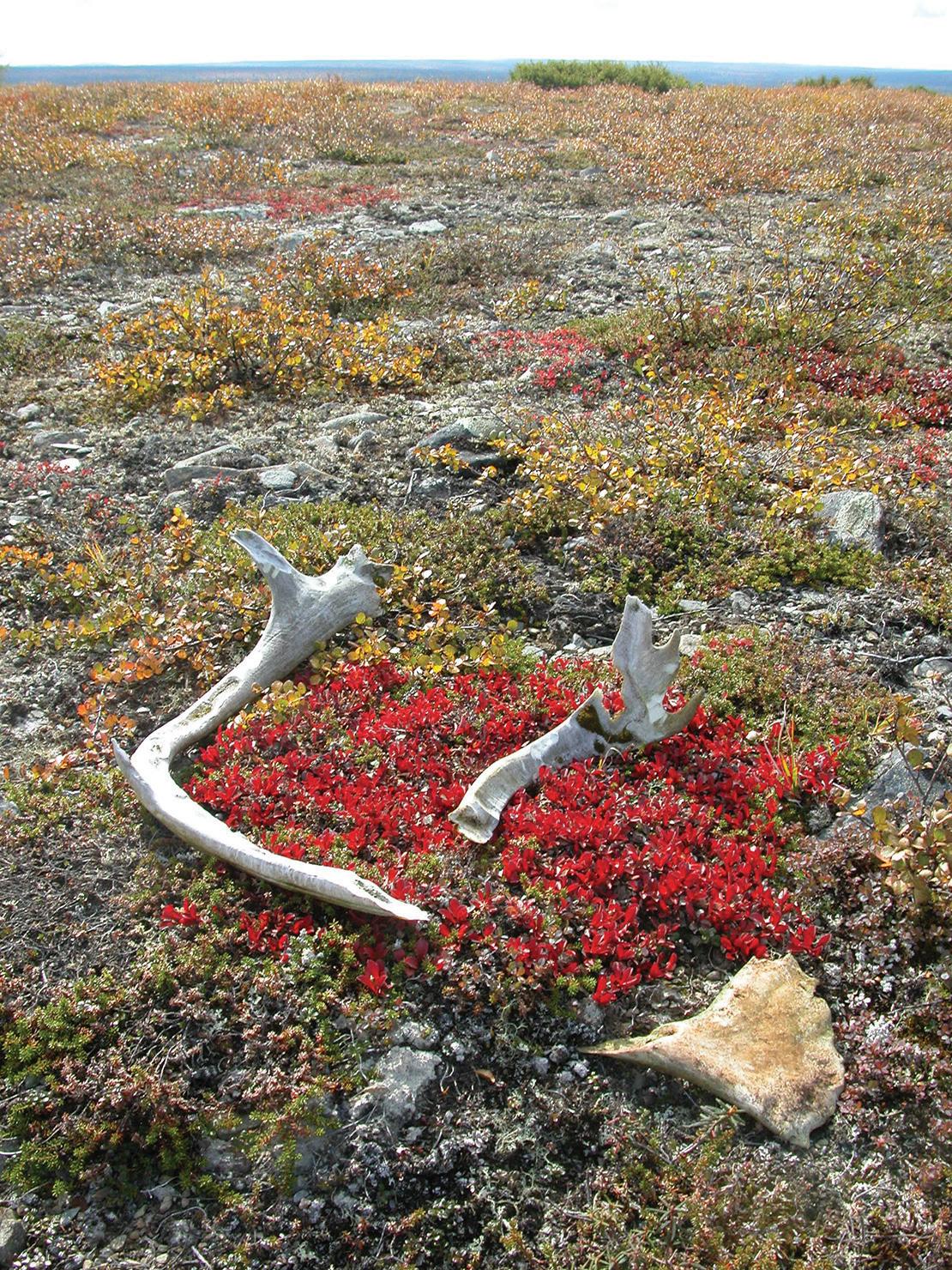
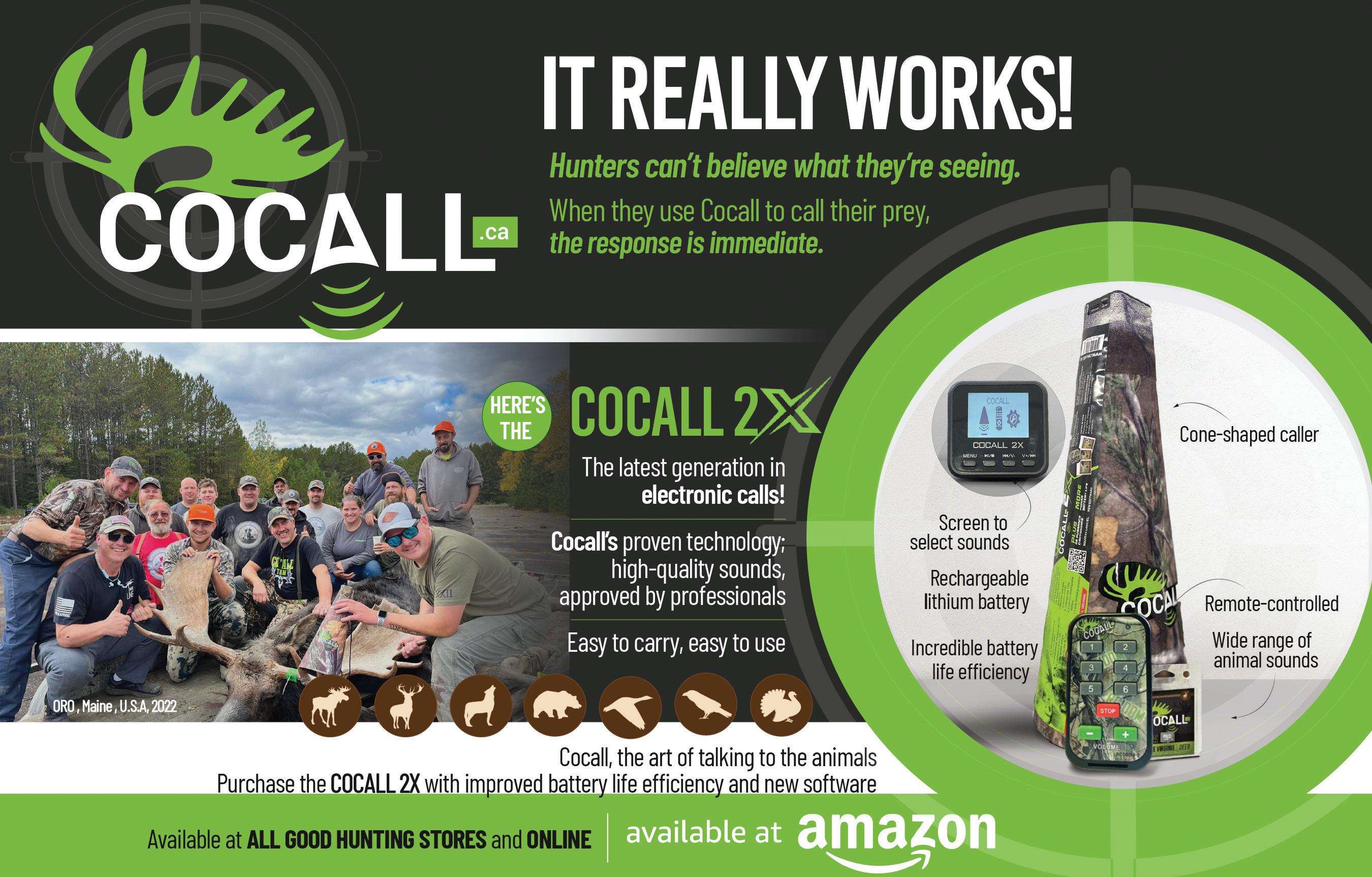
For me, Maine bogs have always held an allure. It may be the deer hunter in me. The buck of my dreams is always seen in a bog, ghosting its way silently on the mossy ground, weaving slowly between gnarled old cedar trees and grey, weathered deadfall. There is a dusting of snow underfoot. The air has warmed creating a rising mist. Antler tips can be seen intermittently through the tree openings as the fantasy monarch moves like a cat amid the gauzy, shifting layers of fog.
I became acquainted. Wary but fascinated, I hunted the edges of Orson Bog and a few bucks met their demise during my visits.
Deer feel safe in these dark, moss-covered lowlands. For obvious reasons, many hunters won’t stay on the track when the quarry takes them into seemingly forbidden places. But it’s quiet going underfoot, for the hunted and the hunter. Once in the late afternoon I ventured too deeply into the bog and - though not really lost - found myself boxed in by standing water.
Over the years, a number of hunters have become lost or disappeared altogether in Maine bogs. In May of 2013 three people perished in Windsor Bog after their Jeep Wrangler became hopelessly stuck in the mud.. Bogs merit respect from all interlopers.
Whether you are a deer hunter or not, if you have an affinity for natural wild places, a bog can be both inviting and intimidating. Inviting for the mystery of it; intimidating because it can swallow you up if you are not careful.
Orson Bog just north of Brownville Junction is a case in point. Many Novembers ago, as a young deer hunter, Orson Bog and
Spitting snow and fading light had me worried, but eventually, through some creative compass work, the bog, with darkness coming on, lost its grip on me.
Over the years, a number of hunters have become lost or disappeared altogether in Maine bogs. In May of 2013 three people perished in Windsor Bog after their Jeep Wrangler became hopelessly stuck
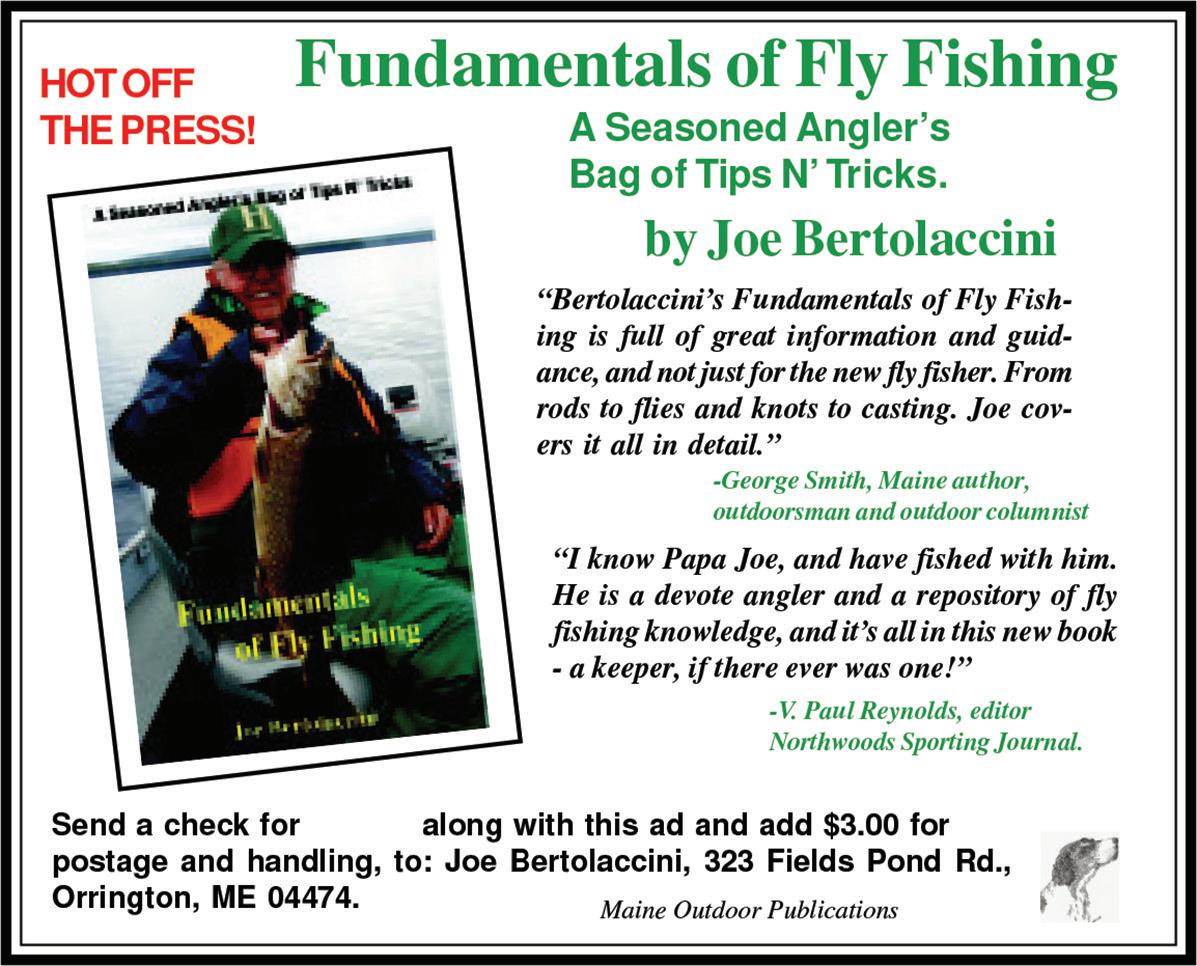
in the mud.. Bogs merit respect from all interlopers. One of the most puzzling cases of a lost hunter took place Nov 18th, 1997 in Garfield Plantation a short way from Ashland. Bob Smith, 70, was hunting with is wife and never showed up at dark. What followed was one of the most extensive ground searches in Maine history. Over 300 wardens, foresters and trained search and rescue teams along with trained scent dogs found not a trace of the missing hunter, save one boot print. The next spring, teams of Game Wardens and dogs searched the various bogs and flowages and streams in the area. According to Game Warden Kale O’Leary, the search team even drained beaver dam areas looking for a trace of the missing hunter. Nothing. We may never know what happened to Mr. Smith.
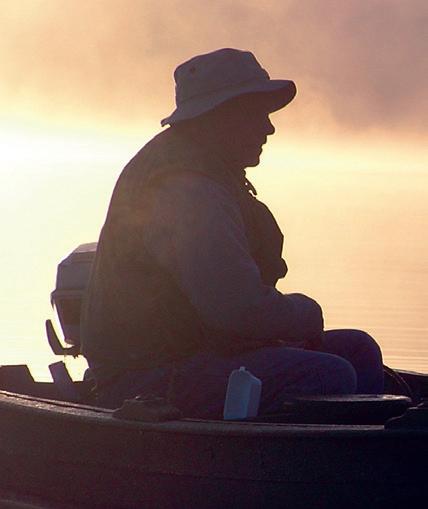
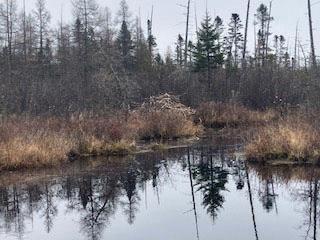
In the fall of 1997, Aroostook deer hunter Bob Smith was seemingly swallowed up by the woods and bogs of Garfield Plantation. Despite the most extensive man hunt in Maine history, no sign of the missing hunter has even been found. (Photo by V. Paul Reynolds)
Bogs all seem to have distinct features peculiar to themselves. Another of my favorites is Horseshoe Bog, which is part of the Scutaze Stream drainage. Not far from there, One Thousand
Acre Bog has shared its solitude with me and some moose hunters that I have guided. Yes, these bogs hold many personal memories, some of which have (Bogs cont. pg 68)

By Mark Cote
I have been in the investment / insurance business for 33 years. The industry arguably has the largest golfing community in existence. Despite the prodding from my peers and invitations to play in industry sponsored tournaments, I never got interested in it. I never in a million years expected to spend any time on a golf course... until I got the opportunity to take a rifle!
I bought a place in Florida about five years ago and immediately began hunting and trapping wild hogs. They are considered nuisance animals, and any way of hunting them is totally legal; day or night, all year round, you don’t even need a license! Since I’ve started, I have taken hundreds of them by box traps, corral traps, and leg snares. A few years ago, I was asked to do wildlife control at the golf course just a couple of minutes from my place. I mainly trap hogs there but often hunt them at night with thermal equipment. I am also the hunter/trapper for a
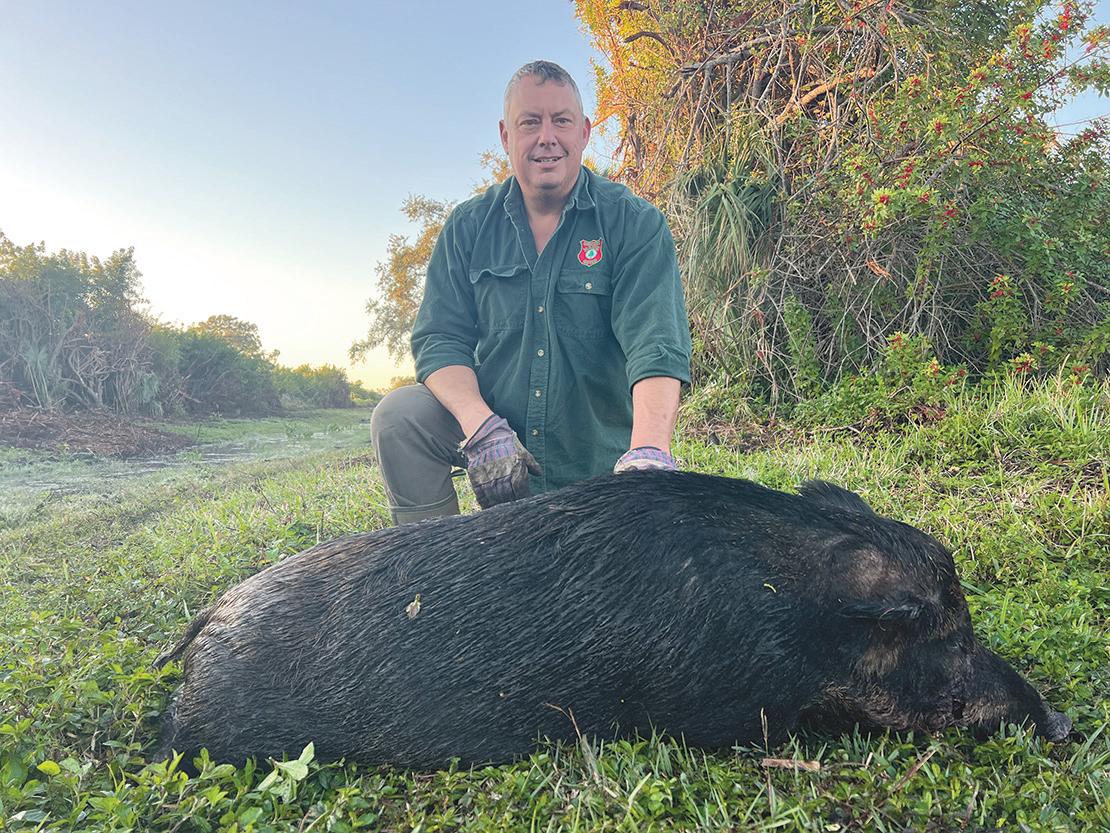
The author with a golf course hog.
private jetport in the neighboring town. There, wild hogs on the runway can create serious life safety concerns. It is an important role and I love it!
I gotta tell you though, riding around on airport grounds in a John Deere Gator with an AR15 by my side is a whole new level of redneck! Today, the golf course was closed due to three days of very heavy rain. It presented a great opportunity to safely remove some pigs. There had been a group of hogs tearing up the course over the last few weeks. This
morning my game cameras showed them frequenting a spot beside the eastern side
of trapping. The conditions couldn’t have been more perfect, the course was closed and I had a perfect SSW wind.
The tee box on hole number 4 is on a hill maybe ten feet high. I got off the golf cart with my backpack and rifle and crawled up the backside of the hill until I could barely see over it. Using my backpack as a rest, I had a perfect sniper setup. Today, I was hoping for a hole in one! It was a relatively long distance, but I was equipped with a 22-250 Remington model
The blackbirds were chased away and the hogs claimed the spot. I was completely undetected. I had all the time in the world to pick out the biggest one and wait for it to present a good shot. It was all over in a flash! It dropped like a stone.
of the course. The day before, I fabricated a special corral trap to catch them all, but once the cameras showed me they were coming into plain view, my focus went to hunting instead

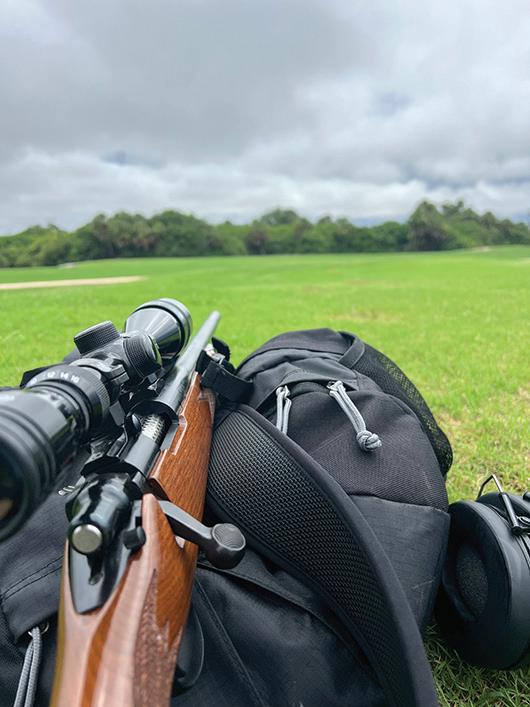
The hog hunter's view from the fourth hole. (Photo
700 with a bull barrel and a Tasco varmint scope. It’s a solid sniper rifle. As I lay in a prone position on the tee box, watching for hog activity across the next fairway, I couldn’t help but snicker, thinking that my version of golf is way better than chasing a ball! There were dozens of blackbirds milling around eating in the area the hogs had been
coming to. It wasn’t long before the hogs appeared. Maybe 45 minutes tops. The blackbirds were chased away and the hogs claimed the spot. I was completely undetected. I had all the time in the world to pick out the biggest one and wait for it to present a good shot. It was all over in a flash! It dropped like a stone. All I had to do next was load it on the back of the golf cart where the golf bags usually go because I couldn’t take a pickup on the soggy fairways. I guess golf isn’t so bad, I had a pretty good game.

Mark Cote is a financial professional and Registered Maine Guide from Rumford Maine who enjoys sharing his hunting adventures with the world.
Over the course of getting older, I’ve noticed changes in me and those around me. (More them than me of course). But one glaring thing is that we have a tendency to look back on our lives through a filter. Not that it’s bad, it just may not always be accurate. But it’s usually done to embellish our stories. Things like, “when I was growing up the winter’s were brutally cold” or “the snowfall was always up to the roofline”. We know that neither of those are accurate but who am I to get in the way of a good story? As a matter of fact, I’d swear that in my childhood, the oppressive heat of August gave way to cooler, more comfortable conditions on September 1st every year. Ahhh, would that be true, I’d be a happy camper. But,
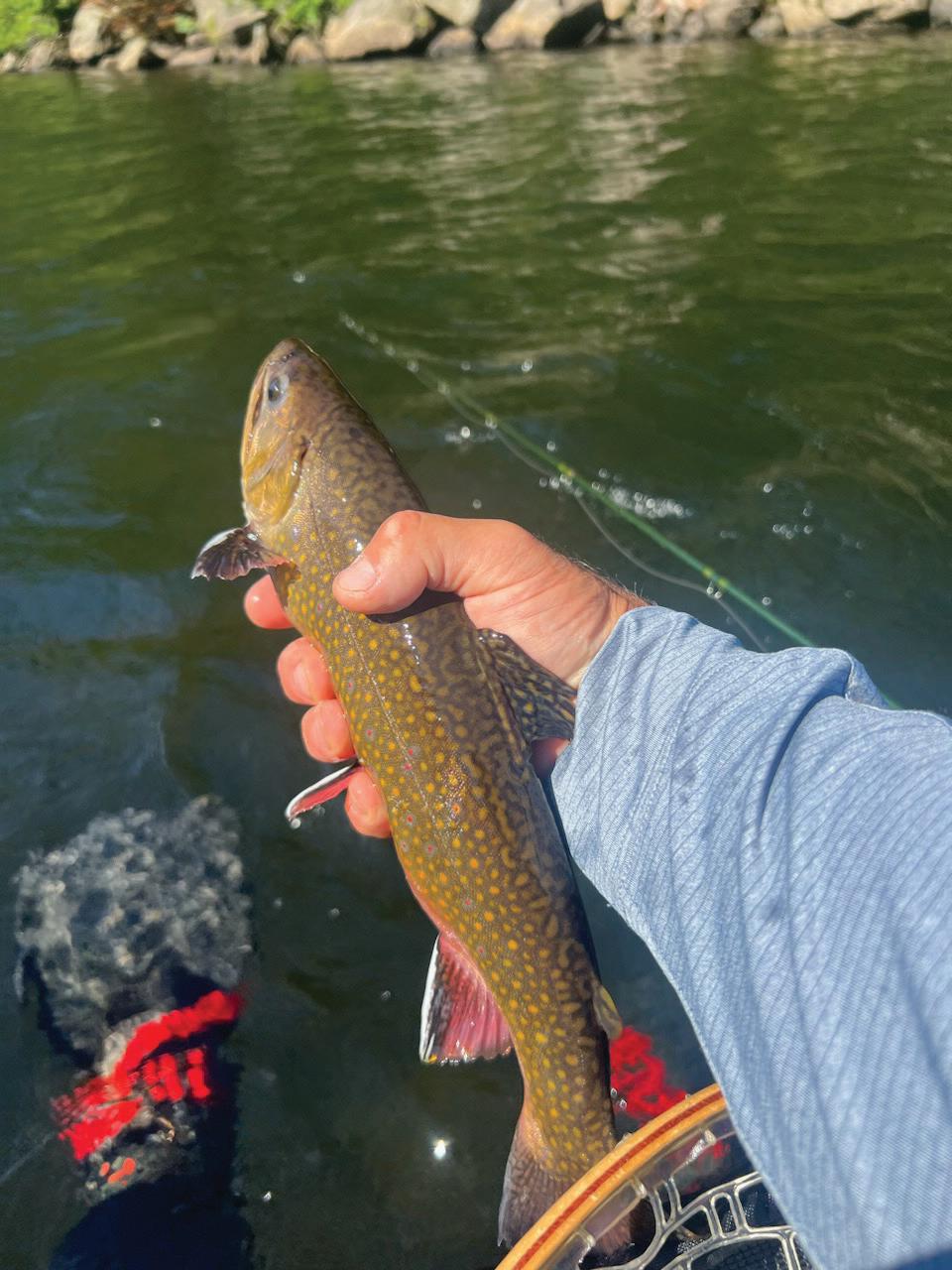
is also the last day for taking lake trout and salmon for the season.
For bass fishing,
year and doesn’t need to be purchased at the same time as the statewide bear tag. Season dates and methods
But, regardless of the weather, there’s still some great fishing to be had, bear season opens this month as does archery hunting for deer and turkey.
with global warming, hurricane season, La Nina and El Nino who knows when we’ll get into the weather pattern that many of us live for?
But, regardless of the weather, there’s still some great fishing to be had, bear season opens this month as does archery hunting for deer and turkey.
If it’s trout fishing you want, trout rivers and streams and trout ponds are open until October 15th Wild trout streams and wild trout ponds close on Labor Day, September 2nd. Trout fishing in lake trout and/ or salmon waters are open until September 30th which
you’ve got until October 15th in rivers, streams and trout ponds. In all other waters, there’s no closed season.
Bear season opens on September 1st and depending on the WMU you’re hunting, it will end on either November 12 th or November 30th. New this year is that hunters are now able to purchase a second bear tag that may be used in the White Mountains region, which includes WMUs : C1, D2, E, F. This additional tag is only valid for those specific management units. The additional tag can be purchased at any time throughout the
by Peter St. James, Warner, N.H.
of take for registration.

Archery season for deer opens on September 15th and runs through December 15th in all WMUs except WMU-A which closes on December 8th
Archery season for turkeys has the same dates as archery season for deer. September 15th through December 15th in all WMUs except WMU-A which closes on December 8th. The limit is one (1) turkey of either sex.
I’ve seen estimates that put our state’s deer herd in the neighborhood of 100,000, the turkey population at around 45,000 and somewhere between 4,8005,000 for black bears. Populations big enough to create opportunities with some patience and planning.
If bird hunting is your thing, check out the state-
of take remain unchanged for the additional tag.
Successful bear hunters may bring their bears directly to a NH Bear Registration Station or contact a Conservation Officer for reporting. To register a bear with a Conservation Officer, call 603-271-3361 or contact a CO electronically to make arrangements. Successful bear hunters are no longer required to report their harvest within 12 hours of take to the Law Enforcement Division but are required to present the bear to a NH Registration Station, Fish and Game regional Office, or Conservation Officer within 24 hours
wide Canada Geese season that runs September 1 st through September 25 th
For that you’ll need a NH hunting license, NH waterfowl license, Federal Duck Stamp, HIP Permit and non-toxic shot. Unlike the regular Canada Geese season in October a firearm plug is not required for the September season. Here’s hoping that the September weather will coincide with my childhood memories so we can all get out to hunt and fish…and enjoy it!

Peter St. James is a member of the New England Outdoor Writers Association, Outdoor Writers Association of America and a licensed NH Fishing Guide at outsideinsides603@gmail.com
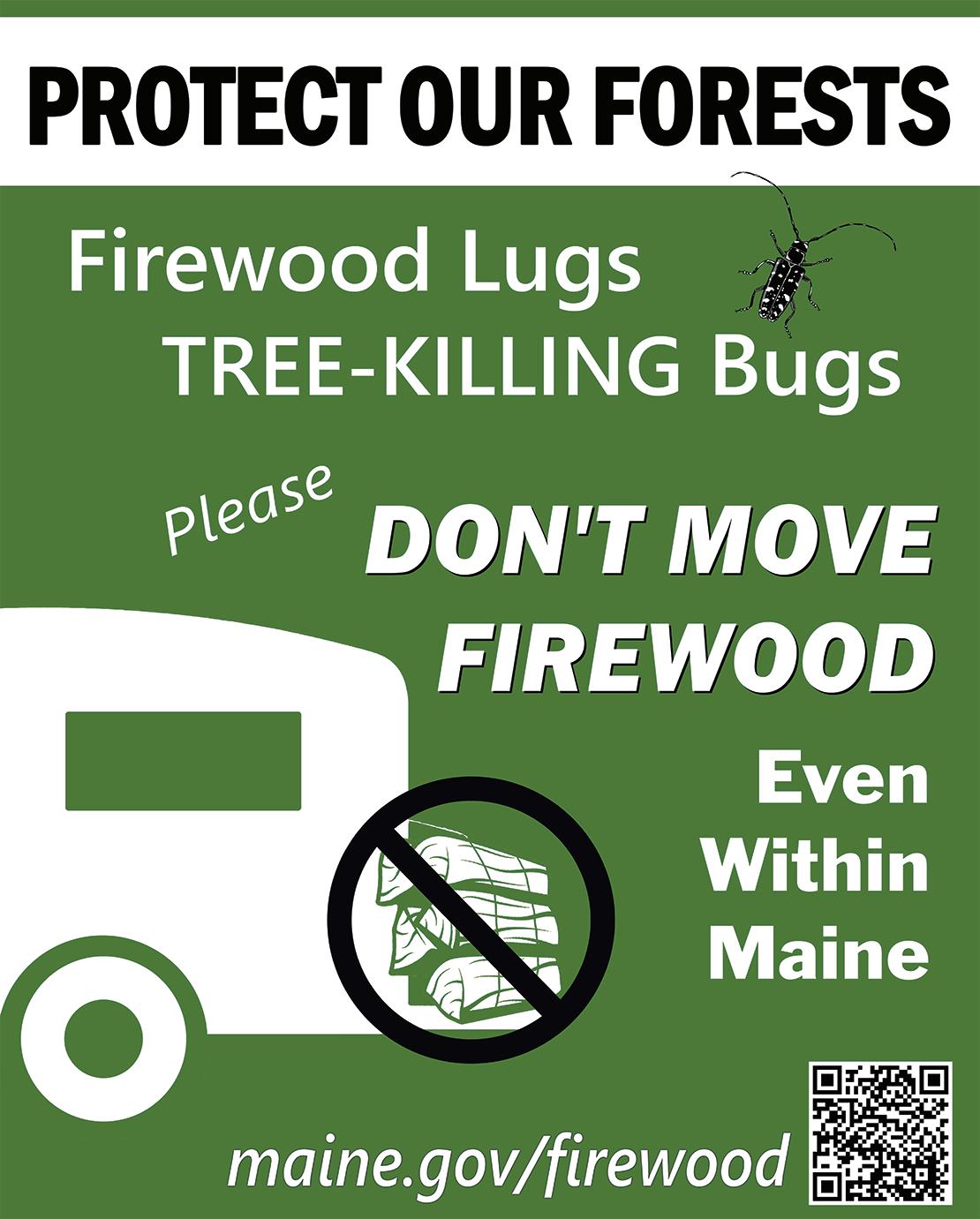

by Suzanne AuClair, Rockwood, ME
I just read with interest Paul Reynolds’ editorial in the August 2024 edition of the Northwoods Sporting Journal, where he and wife Diane had a booth up at this year’s moose lottery drawing in Ft. Kent.
It made me think of the moose weigh-in station that used to be here in Greenville. In his editorial,
Dept. of Inland Fisheries and Wildlife. It was a perfect location. And, it was a thing! Moosehead wildlife biologists collected important samples from the moose brought in by the hunters. Moosehead has always been known as a hunting and fishing paradise. It still is. Only, a number of years ago, the
sorts about our own culture and heritage.
For many years, people came from far and wide, in late September or early October, to see the moose at the station. Locals from all around Maine took a ride up to Moosehead, often with families, and spent a day or three here. Visitors from all over the world stopped in, cameras in tow, and learned an exceptional amount about Maine moose, populations, health, growth, conditions,
For many years, people came from far and wide, in late September or early October, to see the moose at the station. Locals from all around Maine took a ride up to Moosehead, often with families, and spent a day or three here. Visitors from all over the world stopped in, cameras in tow, and learned an exceptional amount about Maine moose, populations, health, growth, conditions, and life cycles.
Paul notes about how big an event the moose lottery is, attracting a huge crowd, and many of them not hunters at all — just curious to be there and excited to experience this Maine happening.
Greenville used to have a moose hunt registration station right in town, off the main road coming down from Kokadjo, at the headquarters of the Maine
Greenville moose station was scrubbed out of town, largely because of the constant campaign by a lodge owner from England who found it offensive. He has since moved away, but so has the station. After years of agitation, the town and IF&W finally acquiesced, and quietly moved the station further north. Since then, it has been a lost opportunity, and a shaming of



and life cycles. Wildlife biologists were on hand to collect data about the moose and hunt, directly from the hunters. The seaplane hangar was set up with enormous freezers and a cutting station, where the meat from the animal could begin to be processed immediately, avoiding spoiling. Large crowds gathered, and learned a lot. They watched in amazement as the huge animal was skinned and its meat cared for. A few local organizations sold coffee and donuts. Local restaurants, stores, and inns were busy, at a time when it would normally be pretty quiet. In late September or early October, Greenville’s culture was front and center, and wildly popular.
During the day, I heard many languages, from regular Maine talk to Japanese and German.
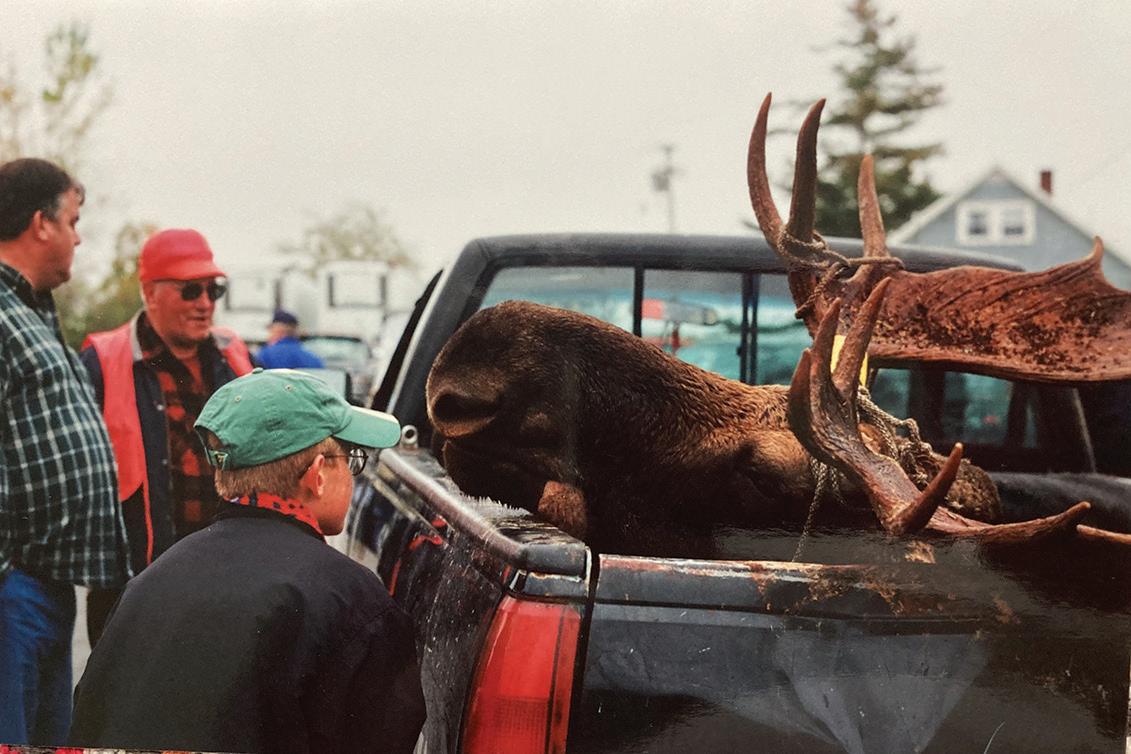
In Greenville, folks, hunters and nonhunters alike came from miles away to view the moose tagging operation.
The moose hunt and registration was a unique part of this region of the state, where the moose population is about the largest, along with areas in the County. Over the course of the weigh-in and data collecting throughout the week, I would guess 1,0002,000 people showed up — a great economic boost locally, and, most importantly, an honoring of a local tradition, with a great educational component besides.
Today, all of that is gone. Maybe it could be brought back. Moose are still number one in the Moosehead Lake Region. The first question any traveler asks is “Where can I see a moose?”
Whether it is alive, standing in a pond somewhere, or at a weigh station, where it is up close and personal in the back of a pick-up truck, doesn’t seem to matter, overall.
Visitors are looking for a genuine local experience, and take their cue from locals. It is hard to imagine just how big these animals are, until you get to see one.
Seeing a moose is a lifetime experience that people crave. A lot of good comes out of the weigh station, all the way around.
Locally, there is a lot of lamenting about the changes being made around Greenville, Rockwood, and Kokadjo, due to the influx of new people settling in. Old ways are being replaced with new ways. Hunting, especially here in the North Woods, is part of life. And, a lot can be learned from it. Hopefully, we can hold onto some of the traditions that keep Moosehead special, and that keep people coming because of it.

Suzanne AuClair is an avid outdoorswoman. She lives near Rockwood and has been writing about the Moosehead Lake Region for the past 29 years. She produced Maine’s reference anthology, “The Origin, Formation, and History of Maine’s Inland Fisheries Division.”
Enjoying a hot summer’s day near the White Mountains in New Hampshire, a quick retreat to North Conway with my sister for our annual brother/ sister weekend. On our drive from Maine, we caught up with a pickup truck in Fryeburg, hauling a motorized mobility scooter on a hitch mount cargo carrier. This type of carrier attaches into your trailer hitch and is made of steel with models ranging from weight capacity of 300 lb to well above 500 lb. The width of the carrier also varies by model, ranging from 19 inches to

Mountains, outlets, small shops, coffee, and waterfalls filled our time in North Conway. As we walked down the center of town on the White Mountain Highway, we came across this Polaris RZR side-by-side parked on the sidewalk/patio.
32 inches wide.
I shared the story with my sister about my dad and I hauling his deer out of the woods this past fall on a hitch mount cargo carrier with the side-by-side, similar to the one we were seeing with the mobility scooter. The truck took their time on the road, gingerly going over bumps as the scooter bounced subtly. We nicknamed the driver
(Cont. from pg 53)
dispatch a trout caught fair and square while I believed in catch and release. We eventually compromised on a few fish for breakfast with a side helping of lowbush blueberries.
In his late eighties, he’d completely lost his sight from macular degeneration. I remember his last time at our cabin. I took
“Dr. Nefario” from the movie “Despicable Me,” as he is often depicted riding a motorized mobility scooter. Mountains, outlets, small shops, coffee, and waterfalls filled our time in North Conway. As we walked down the center of town on the White Mountain Highway, we came across this Polaris RZR side-by-side parked on the sidewalk/patio. Certainly
him out in the Grumman for one final troll, helping him over the gunwale, clipping a Sutton 44 to his line, placing his fiberglass rod in his hands. After that, I’d entertain him with stories from camp, always ending with a tale about a fish, sometimes caught, mostly lost.
A few days before his death, three weeks shy of his ninety-third birthday, his wife, daughter, and I
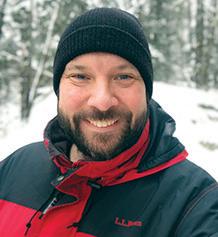
quick acceleration, terrain versatility with 14.5 inch ground clearance, and trail agility.
eye catching and great placement, advertising rentals nearby.
A newer, or new to me, abbreviation I’ve been seeing lately for side-bysides is SxS or SSV (sideby-side vehicle), which sounds pretty sporty on its own, and the model we saw in North Conway is a sport model. A two-seater XP 1000 Premium model, starting at $22,999, touting
huddled around this man we loved. He was slumped in a wheel chair, his eyes closed. Charlie hadn’t spoken for some time. With a great deal of difficulty, he began unbuttoning his shirt. As he’d did, his wife would gently move his hands aside, returning the buttons to their original positions. Each time, his fingers rose, continuing their attempt to free the buttons.
I watched this silent drama,
At a quick glance on the https://www.polaris. com/en-us/ website, the RZR has 33 vehicle variations with loads of options for customization. One of the higher end models starts at $44,999 and includes advanced ride technology, premium audio, and an advanced active suspension system. A sample of other options that can be added include back-up cameras, turbo engines, accent lighting, poly sport roof, and 4,500lb. winch. Reminds me of all of the options available now when purchasing a passenger vehicle. I’ll need to add trying one of these models out sometime soon. Something tells me it will be quite a different experience than the utilityfocused Honda Pioneer SxS we have.
As our time in North Conway comes to an end, and just as we begin our journey back to Maine, guess who we end up see-
until at some point, Bernice lost interest. Eventually, after a number of attempts, her husband was successful in freeing all of the buttons. With eyes still closed, he raised his head, and in a raspy whisper, proclaimed, “Another victory for the common man.
ing in front of us? “Dr. Nefario!” We both laughed as we pointed in disbelief that the truck in front of us was the same truck we followed down with the hitch mount cargo carrier hauling a motorized mobility scooter. Really shows you what a small world it is and what a coincidence that we should be arriving and departing at the same time. When we reached a passing zone on the road home, we passed our new “friends” in the truck and gave a wave, wondering if they had recognized us from the beginning of their journey too… two sets of Mainers now on our way back home.

Daniel Wilson works in healthcare and enjoys time outside in nature with his family.


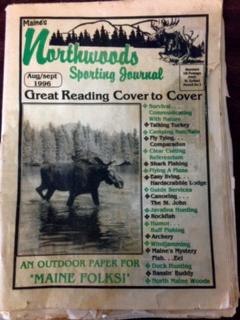
By V. Paul Reynolds
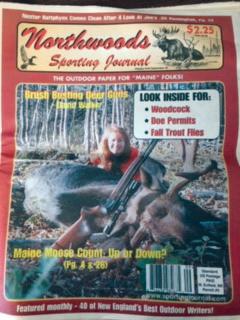
Back when America produced real leaders, one of them - Gen. Douglas MacArthur - said in one of his famous speeches that “old soldiers never die, they just fade away.” Maybe the same is true of old sportsmen.
As a stalwart deer hunter from the Old School,

history of being together every autumn in the Maine deer woods. I’m talking more than 50 years of sharing space with five guys at the same deer camp November after November for more than a half century!
Of course, there is a blanket explanation: geezerhood, plain and simple. When your vision and hear-
When your vision and hearing is not what it used to be, when your knees crack and your hip hurts, or you are on heart medication, the days in the deer woods can lose their allure.
I’m confronting a new social dynamic: most of my contemporary hunt buddies are losing their passion for the hunt. Most of them, although living, will not, for various reasons, be making it to deer camp this fall. Mind you, we have a long
ing is not what it used to be, when your knees crack and your hip hurts, or you are on heart medication, the days in the deer woods can lose their allure.
There is chapter in my book, A Maine Deer Hunter’s Logbook, called “Five

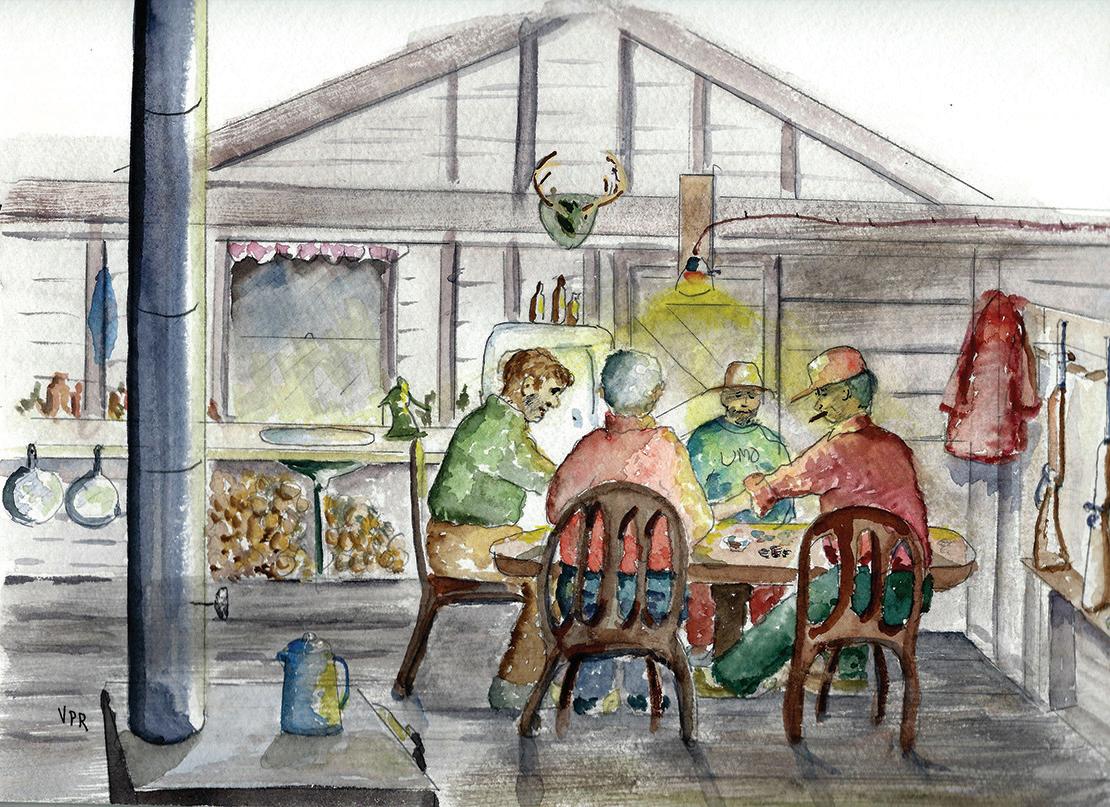
Grumpy Old Men.” It was written a decade or so ago. It was about me and my aging deer-camp contemporaries being weathered in at deer camp for a week. Part of it reads “they have completed their transformational ride from spirited, dauntless, in-their-prime deer hunters to simply Five Grumpy Old Men.
I wrote that particular chapter, despite its thread of cynicism, with appreciation for lasting, deep friendships and brotherly love. As one of the grumpy old men I knew then that my time at camp with these wonderful, colorful characters was fleeting, that our mortality or infirmities
would in time dictate an end to the deer camp experience as we knew it.
Most of us, I suspect, use different yardsticks to gauge our time on earth. When I was an enthusiastic young hunter standing a deer vigil on a cold cedar stump, I sometimes passed the time by pondering life’s imponderables. It struck me that - boiled down - my life span could be measured by X number of November deer hunts. The unanswerable question, of course, was how many deer hunts would there be?
If all goes well I will be putting my rifle on the gun rack at deer camp again this fall. I won’t be
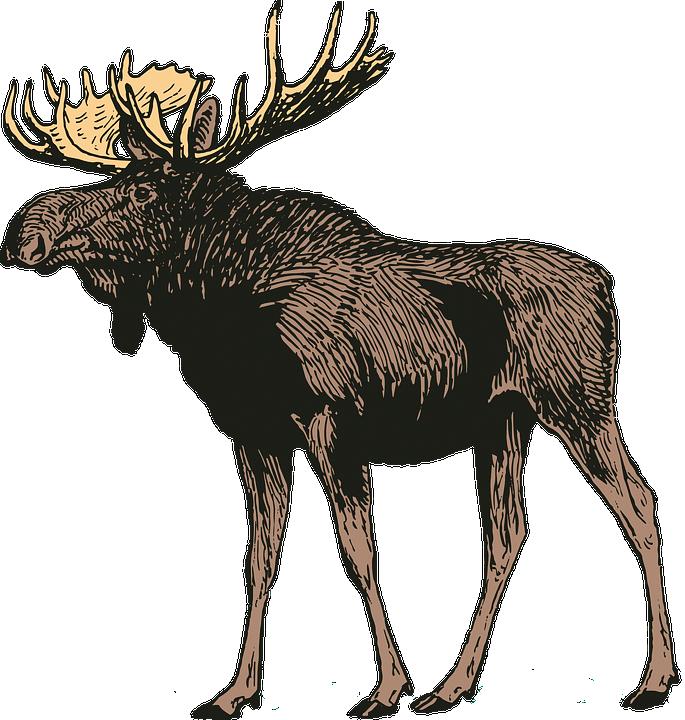

alone. My sons and other second generation camp mates, and, perhaps even a third generation hunter or two, will be around the campfire. There will still be the early morning aroma of bacon in the pan and heat radiating from the old wood stove. Above all, there will be manly laughter and stories galore. If we are lucky there may even be a buck on the game pole. With or without my aging friends at camp, who, along with me, started the Skulkers of Seboeis more than 50 years ago, it will still be a good deer camp. As Tom Heberlein wrote in Legendary Deer Camps, “..a good deer camp needs multiple generations, with old men to tell the stories and young men to sit and listen with wide eyes. It needs some serious hunters to make the new stories, and some camp men to make sure that the floors are swept and the dishes washed.”
This old Skulker, after all these years, still can’t wait to get to deer camp. If climbing over blowdowns and negotiating bogs and fir thickets proves to be too much for me, there is always plenty of inside chores to keep me busy.

The author is editor of the Northwoods Sporting Journal. He is also a Maine Guide and host of a weekly radio program “Maine Outdoors” heard Sundays at 7 p.m. on The Voice of Maine News-Talk Network. He has three books .Online purchase information is available at www.maineoutdoorpublications.com
(Cont. from pg 49)
Jenn added, “A few weeks later I was talking with a friend and she brought up the deer lecture. She said, “Jenn, you love native plants more than anyone I know; that speaker was talking to you. You love plants. You should hunt. If someone like you doesn’t do it, who will?” I had to admit she was right. I love native plants; I should hunt. So, I went online and got a Hunter Education booklet. I read it and attended a one day field training. After passing a multiple choice test, I got a Hunter’s Safety Certificate and purchased my first hunting license. My boyfriend, who later became my husband, bought me a .243 for my birthday and I was ready. I wish I could say that I was successful that first year, but I was not. However, the following year after completing a Bow Hunter’s Safety course, I harvested a buck during rifle season and a doe during late archery season.”
During one of my followup conversations with Jenn she told me of helping another woman become a hunter and how much she enjoyed being a mentor.
“When I started hunting, it never occurred to me that I might get excited over someone else’s hunting success. I have to admit to feeling competitive and somewhat jealous if my husband harvested a deer before I did.
“I was also focused on hunting locally to reduce the deer population that browsed the forests, my garden and my friends’ gardens. All this changed when I started my own
landscaping business and took on a client who lived in a town about 25 minutes from my house. I wasn’t crazy about the commute and wasn’t sure I was going to keep her, until one day she asked me if I hunted or knew anyone who did. Well, that changed everything! At 68 years old, she had never hunted before and the mentoring program for novice adults had yet to be created. She wanted to learn to hunt to keep the deer from eating her garden and for the fresh venison.
“After work, I began helping her in an advisory capacity, showing her how and where to hunt on her property. I let her shoot my rifle to see if she liked it. She did. In early fall, my husband and I helped her site-in her own rifle. I was surprised to find that I get more excited when she harvests a deer than when I do. She has been successful two years in a row now. I drive down to her house and while we hang, skin, and butcher her harvest she tells me the story of her hunt.”
In summing up our conversation Jenn said, “Today I hunt for many reasons. I hunt because I love native plants. I hunt because I love our forests and wildlands. I hunt because I have a great deal of respect and compassion for deer and I want their population to be healthy and stable. At the same time, I love harvesting and processing
high quality, lean meat. I make stock from the bones and soap with the tallow. And, I hunt because I enjoy passing on the knowledge and the skills necessary to keep the forests and the deer herd healthy.”
She added, “There are two types of hunters, trophy hunters and meat hunters. I am a meat hunter. I take the first mature animal I see that is in season.
“I haven’t bought beef in a supermarket in over ten years. Hunting provides me with better quality lean meat than you can buy at the store, at an affordable price per pound with an extremely low carbon footprint.”

Syndicated columnist Gary W. Moore is a life long resident of Vermont and a former Commissioner of Fish and Game. His latest book, Four Season in Vermont, is available at many bookstores and sporting goods shop or from him directly. He may be reached by e-mail at gwmoore1946@icloud. com or at Box 454, Bradford, VT 05033. came to an end! The knee was injured, and I would be sitting in the cheap seats the rest of the way.
(Cont. from pg 50)
Minor injuries that you just shrug off can happen anytime. More so if you’re an active person. But staying in good physical condition can head off serious injuries that might set us back even further. Being in shape can also help when the lungs and legs are burning like a forest fire, and it can help us in other aspects of life as well. Because hunting is not unlike any other strenuous activity. At times, it takes strength and stamina to accomplish what you’re doing, and it becomes exceedingly difficult to realize the true joy of any activity if nagging injuries continually slow us down. A few days of this can eventually break one’s spirit to where you might think, “it’s just not worth the effort”! Which would really be too bad.
Few of us will ever come close to Tom Brady’s approach to all of this. And that’s what makes him the G.O.A.T. But like athletes, hunters can easily have an off-season exercise program, and it doesn’t have to be a TB12 routine! Just
a simple, daily exercise schedule will build your stamina and strength quicker than you can imagine. And this will absolutely help you avoid injuries and physical problems that cause older ridge-runners, “like myself,” to cry to their wives complaining about knees, backs, shoulders, or whatever. Most importantly, it will extend your life as a hunter while keeping you in a better frame of mind for everything else, including staying fit well into the future. Brady had it right … and with just a little bit of effort we can get it right too, and “Stay in the Game”!

Joe Judd is a lifelong hunter and sportsmen. He is an outdoor writer, seminar speaker, member of the New England Outdoor Writers Association, and a 2019 inductee into the New England Turkey Hunting Hall of Fame. Joe is also on the Quaker Boy Game Calls, Bass Pro-Shops, and Cabela’s Pro Staff.
Which brings us to the point of being in shape, while trying to avoid injuries during the season.
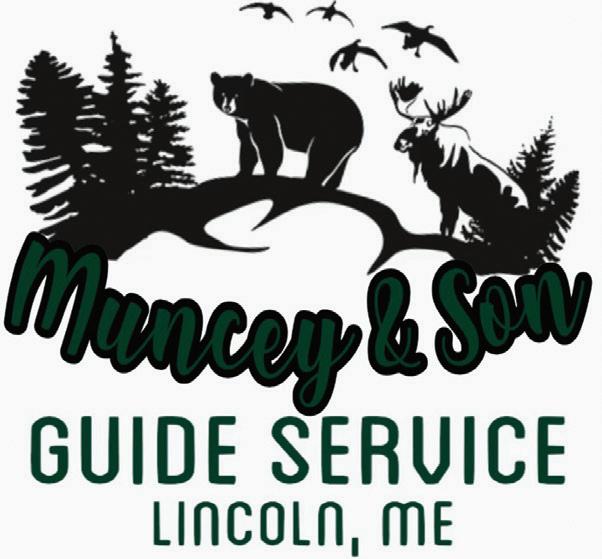


by Bob Mercer, Bucksport, ME
The eclipse this year made me more aware of the sun and the events in our lives that are connected to it. We, who spend time in the out-of-doors, encounter some very special things referenced by the sun. It is important to be grateful for everyday occurrences concerning the sun, which give us glimpses of the All Mighty. Among these
One sunrise that I do remember vividly took place a number or years ago, back when duck hunting meant being out before sunrise and staying until closing time, regardless of the tide.
I was firmly ensconced in my blind on our favorite island, with the decoys all set, just waiting for legal time. Being first season, the trees were all colored
brilliantly, it was a portrait no photo could do justice to. Legal time came and went and I hardly noticed. Some of the most spectacular sunrises I have seen come from my daughter’s cell phone. She rides the stern of a lobster boat and is often out at sunrise. Sunrises mixed with the ocean and islands of our Maine Coast certainly move one’s soul, even in photographs.
These bring focus on the brilliance of the Creator. When the Good Lord takes out his brushes and proceeds to paint the sky, it is always noticeable and sometimes spectacular. I guess the depth of the scene depends upon His mood. are sunrises, sunsets and rainbows.
These bring focus on the brilliance of the Creator. When the Good Lord takes out his brushes and proceeds to paint the sky, it is always noticeable and sometimes spectacular. I guess the depth of the scene depends upon His mood.
I must confess I have seen many more sunsets than sunrises. I am just not an early morning person.

up and it was so calm, there was not a ripple on Cobscook Bay. As Old Sol peaked up over the eastern horizon, the Good Lord must have awoken. He began to paint the horizon in the most spectacular display of color. Colors of the whole spectrum reflected from the sky into the wide expanse of the bay. With the far shore ringed by the colors of the foliage and the rest of the bay painted
Sunsets are another matter, as we see one most every clear day. We are especially aware of sunsets when we are at camp, as our pond runs east and west so the sunset in the west reflects the whole length of the pond. Most evenings there is a cadre of folks in boats, out for sunset. They sit, view and meditate on the beauty of God’s handy work. We tend to go down to the dock to watch and

wonder in the same way. It is a quiet introspective, observing the sun slide below the horizon. The over arching thoughts are of the magnificence of God’s art work. The beauty and quiet of the moment lends itself to reflection of the events of the day and the gratitude we have of being allowed to live in such a special place. The secret is to take the time and relish the moment, as opposed to just glancing at the sunset with a, “Oh, that’s pretty”. I think the words to Taps says it best, “Day is done, Gone the sun, from the lakes, from the hills, from the sky. All is well. Safely rest. God is nigh”. There is a” yin and yang” feeling to the moment, in that our sunset is some other folk’s sunrise. This is a continuous event across the whole world. Our beginning of the day is some others ending. Wouldn’t it would be nice to know exactly where others are welcoming sunrise, as we see it set?
When the Good Lord
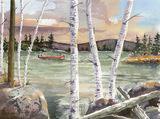
Sunsets are another matter, as we see one most every clear day. We are especially aware of sunsets when we are at camp, as our pond runs east and west so the sunset in the west reflects the whole length of the pond. (Illustration by V. Paul Reynolds)
paints these events it is with a free brush all over the canvas of the sky. The colors are interspersed and accented by the cloud formations. Some days are muted and others bright, spectacular, and take your breath away. However when He is feeling more precise He makes rainbows. The colors are the same but the difference is that rainbows are like
(Sunrises cont. pg 67)
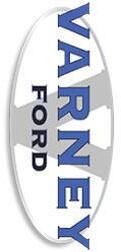
In 1968, Keith Havey, the first Regional Fisheries Biologist for the Dept. of Inland Fisheries & Wildlife (then called Maine Fish & Game) for the Downeast region, stocked 150 anadromous (ocean) alewives in West Grand Lake. This first stocking of alewives
swimming along with their mouths open, filter feeding on zooplankton. Inland fisheries biologists found just the opposite. In the 1990s, Downeast Inland Fisheries biologists worked with biologists from the University of Maine discovered that adult post-
wives migrating up Grand Lake Stream were not able swim into West Grand Lake, spawn, then have their young return in 3 to 6 years in greater numbers, expanding exponentially in the St. Croix. This created competition for food, especially in West Grand
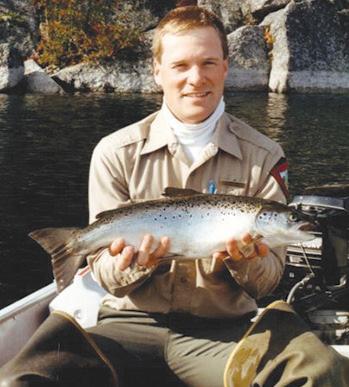
by Greg Burr Addison, ME
spawning alewives were actively hunting their prey and filling their stomachs with a large variety of insects and fish, including smelts. Flashback to the early 1980s when inland biologists began to suspect that this was the case based on their and anglers’ observations. So, in a proactive move, the entrance to the West Grand Lake Dam fishway was screened off so that ale -
Lake, the west branches’ premier headwater native landlocked salmon water. These salmon that rely heavily on rainbow smelts.
In the 2018 this situation was broken wide open when the Governor at the time refused to allow Inland Fisheries biologists to meet with the Passamaquoddys, Federal agencies, and the West Grand Lake dam owner concerning the
It is estimated that 6 to 8 million alewives will make their way to the lake spawning acreage located above the West Grand Lake dam. If this happens the stream will be inundated with alewives in the month of June and the once iconic landlocked salmon fishery maybe changed forever. in the St. Croix River drainage corresponded with the construction of Denil fishways in both the Woodland and Grand Falls dams. These fishways were overdue. Almost fifty years overdue, considering both dams were built in the early 1900s with no fish passage. Keith was pragmatic. His goal was to not only to restore alewives to the St. Croix (called the Skutik River by the Passamaquoddys), but also to augment landlocked salmon and lake trout forage by adding newly hatched alewives to the smelt population in the west branch of the St. Croix, and that all would live in harmony.
Fast forward to 1987 when I arrived on the scene. The adult alewife run had increased to 2.6 million in the St. Croix, with a few hundred alewives milling around in Grand Lake Stream, and subsequent regional biologists had a different view of smelt and alewife interactions than Keith’s hopeful view. The biological literature at the time suggested that alewives were only planktivores, mindlessly
pending FERC (Federal Energy Regulatory Commission) relicensing of the dam and the possibility of allowing alewives access to West Grand Lake. This refusal to communicate about fish passage prompted the Bureau of Indian Affairs to push to FERC to remove the screen at the West Grand Lake fishway and to allow all fish to move into the lake. FERC made the order for free and open passage in 2019 in the dam’s new license and threw any interaction concerns that IFW had into the backseat. Beginning in 2019, and every year since, the fishway is opened on May 15 th by Woodland Pulp LLC. At the time of the initial opening there were a few dozen alewives in the stream looking to move into the lake and they successfully did so, and then
again in 2021, 2023, and in 2024. This 2019 surprise opening set IFW on their heels and caused officials to scramble to mitigate the situation. The first step was to place a swim through grate at the entrance of the fishway with 1 ¼ inch spacing to allow alewives to pass but keep adult salmon in the stream for fishermen, as well as stop invasive fish such as largemouth bass from moving from Big Lake into West Grand. The swim-through grate was put in place in 2021 and is lifted each summer on July 1st after the alewife run is over. At which time the hydraulic jump is installed to allow for salmon to leap back into West Grand, but high enough to preclude invasives like largemouth bass. The next step is to
(Alewives cont. pg 67)

(Cont. from pg 54)
crystal by noon. There are no weather reports. You take what you get. It can snow, the sun appears, and within minutes hardy black flies will be crawling in your ears and nose. The seasons seem to pile up on the tundra in late September.
By day, the skies are alive with flock after flock of gaggling snow geese, brant, and Canada geese. Their conversations drift on the north wind long before they appear on the horizon. They jostle in and out of formation as they wing overhead and discuss what lies next over the southern horizon. Rough-legged hawks surf in the boiling air currents above the crest of the hill searching for an errant lemming. Gyrfalcons dart between the copses of dwarf black spruce hoping to surprise an unwary ptarmigan. Flocks of snow buntings whirl along the bony ridgetops then settle like drifting snow.
By night, the call notes of migrating pipits and Lapland longspurs mingle among the scintil-
lating stars that seem so close that you can reach out and touch them. After sunset, a ghostly, green glow gathers like fog on the lip of the northern horizon. Flickers and shafts of light shoot toward the zenith. By midnight the vault of the heavens is alive with shimmering curtains of vermillion, cobalt blue, and veridian. The celestial dance spins and whirls hypnotically overhead like the tresses of a Spanish dancer. Caribou are everywhere and nowhere. Their presence is enigmatic – a shed antler here, a wolf kill there, and saucershaped hoofprints left the night before on the beach along the lake. Tufts of hair clinging to arctic bilberry and fresh droppings tell of the caribou that passed this way last week. Were they the vanguards or the stragglers? Our first year we were skunked. The next year we witnessed thousands of migrating caribou streaming from the north all week. We quickly learned that their centuries-worn pathways are the most efficient way to hike across the tundra. They travel singly, in small
groups and great herds, but the time and place of their appearance is never predictable.
Like the geese, caribou also seem to be in a rush. They cover dozens of miles in a day in a relentless, stilting, mile-eating trot. You could never catch them in a run. Lying behind a glacial boulder, I let a band of thirty pass so close that I can nearly touch them. The approaching click of their hooves sounds like the surf on a pebble beach. Their eyes are wild, noses flared as they pass by and catch my scent. The stags shake their arched bronze antlers in the sun. Their white manes flow in the wind like a king’s regal mantle. Half-grown calves bawl to find their mothers and scamper to catch up. No one wants to be left behind when wolves trail the herds down from the north.
But catching the big migration is a rare event for hunters. More often, caribou hunting is a game of hoping and waiting for hours on an esker or ridgetop, conjuring herds that are still miles away over the northern horizon.
There is much time for introspection and marveling that you are really here, alive, and part of this grand tapestry of life.
Although the arctic vista and grandiose thoughts are entrancing, it is the world between my hiking boots that brings the most wonder from these trips north. Who painted this masterpiece with brash strokes of arctic color?
Bolder than any Monet, the crimson blaze of bearberry is expertly juxtaposed among lime green caribou lichens. Inky black crowberries and the deep violet leaves of bog blueberry punctuate the canvas. The sentinel granite boulder in front of me is more vibrant than a Van Gogh impasto, thickly painted with a pallet knife of lichens of all textures and colors. Great dabs of bright orange foliose lichens are scattered over a delicate background of frilly green lichens. The artisan finished their masterpiece with a wet brush of black and pink grains of granite. A glowing streak of white quartz slashes through the creation like Jackson Pollock abstract.
The tundra is an eclectic gallery of art styles.
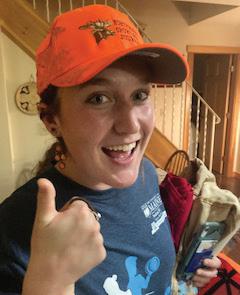
Where do you read your copy of the Sporting Journal? At camp, in the boat, at the ice shack? We’d love to see a photo of you with your copy of the Journal at an unusual place. If we like it, we will publish it in the Journal. If we select your best shot for publication, we’ll send you an exclusive Sporting Journal hat created just for the occasion. Send your Jpeg photo and a short blurb to vpaulr@tds.net. Please include your contact information, too. www.sportingjournal.com
Just a few feet away the sun glints through a kaleidoscope of raindrops clinging to the skeleton of a gnarled black spruce. The tiny prisms shift from purple to green to orange, finer than any Tom Thompson oil painting. Further on down the ridge is a large canvas of mountain cranberry; blood-red splotches of crimson red straight from the tube dabbed on a bronze-green background. A snow-white ptarmigan feather waves in the breeze. The rusty-red foliage of bog laurel and dwarf birch match the burnished copper of freshly polished caribou antlers. Patches of cotton grass shake their shaggy heads in disbelief. Arctic foxes blink and stare. This exquisitely painted landscape is surely the craftwork of an unseen Creator. In September I dream of the tundra; free as the caribou trotting over the ridge with their heads held high under the arctic sun.

Mark McCollough’s first job out of UMaine was to lead the Maine caribou reintroduction project. He can be reached at markmccollough25@gmail.com

Imagine you’re graduating from high school and your grandfather and father want to take you on a wilderness canoe trip for your graduation gift. What could be better than that? Well, that is exactly what happened for this graduate.
The grandfather contacted me last winter about a canoe trip down one of our northern Maine rivers. We eventually settled on a five-day trip from Allagash Lake to Indian Stream. This adventure included a layover day at Allagash Lake. This gave us a day to relax, enjoy and explore beautiful Allagash Lake.

Stream put-in. During the last 10 miles of the ride, I was thinking to myself that they didn’t charge me enough to pound the heavily loaded van all the way in here.
After unloading the
all went out fishing. The grandfather caught a nice 20-inch togue and we all caught some smaller brook trout and plenty of chub.
On day two – we paddled over to the Ice Caves Campsite and hiked up the
On day two – we paddled over to the Ice Caves Campsite and hiked up the short trail to the actual ice caves. The more seasoned folks, including me only went into the cave about 50 feet. The graduate went a little further into the cave but even he didn’t go that far.
There are no motors allowed of any kind on Allagash Lake and stream and there is no motorized access within a mile of the lake. There are also special fishing regulations on the lake and stream to protect the native fisheries.
Dates were reserved and plans were finalized in late March. One of the cool things about this trip was that our graduate would be going to basic training in Nevada a week after the trip. I would have the pleasure of guiding three generations.
When the day finally arrived to start the trip, we all met at Northwoods Outfitters in Greenville. We loaded our gear into their van and my guests packed their clothes and sleeping bags into dry bags. After a four-hour drive with the road getting rougher and rougher, we finally arrived at the Upper Allagash
van, we had a quick lunch then hauled our gear and canoes down to the stream.
We had a lot of rain the day before our trip so the water level in the stream was very nice. The three mile paddle to the lake was easy and uneventful except for the sweeper (tree across the stream) which we avoided.
We setup camp at Ledge Point Campsite at the inlet of Allagash Lake.
After a nice beef stew and hard bread supper, we
short trail to the actual ice caves. The more seasoned folks, including me only went into the cave about 50 feet. The graduate went a little further into the cave but even he didn’t go that far. On the way over to the Ice Caves, Grandpa caught a nice 14-inch brook trout. After supper, we caught nine brookies - the largest being 15 inches.
Day three – we paddled down the east shore of Allagash Lake to the
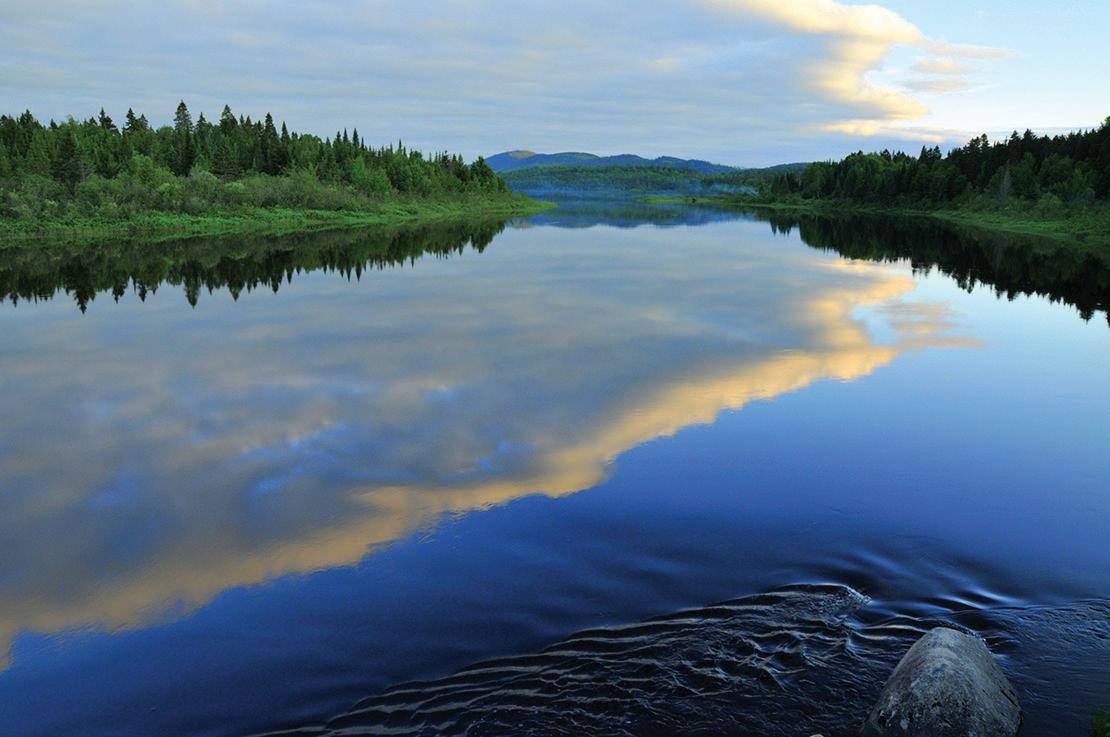
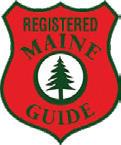
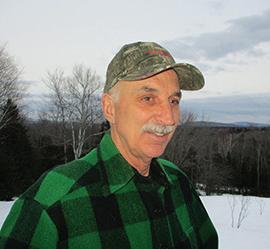
outlet with a slight breeze at our back. After a break at the outlet campsite, we paddled the stream six miles to Little Allagash Falls. The paddle was not difficult but it kept us on our toes. A very enjoyable almost continuous class I and II rapids. (Trip cont. pg 67)
Little Allagash Falls is truly one of the nicest spots in the Northwoods of Maine. Being lulled to sleep by the continuous sound of the water dropping over the ledge outcropping is one of the simple pleasures of life.
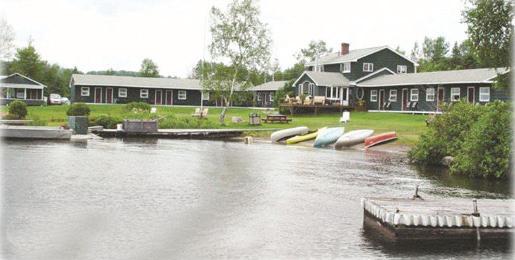







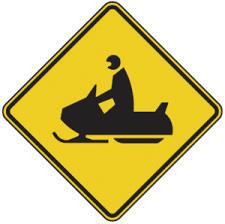
(cont. from pg 47)
when they were listed in 2015. I simply didn’t want to chance inadvertently taking one and getting myself into trouble.
A chance encounter with an old hunting partner got me thinking differently. As we regaled each other with our shared duck blind stories from years past, we got to talking about just maybe reprising our adventures later in the fall. But then, there are those damned Barrow’s restrictions. What do they really mean?
Well, it’s not as bad as it seems, as it turns out. As birds of a feather tend to congregate, Barrow’s goldeneyes tend to stick together and haunt areas without mingling much with common goldeneyes. Yes, they’re protected; and that means we aren’t supposed to shoot them. But what will happen to you if your faithful retriever brings you evidence that you have?
The IF&W lawbook is helpful here. On Page 39, the instructions are pretty simple. If you shoot one, call a game warden, and
they will come and collect it. In bold type, they continue: “There is no penalty for reporting this.” Now, if for some reason you’re targeting Barrow’s goldeneyes and get caught with a bunch of them, well, you’ll probably have to listen to a judge read the penalty to you.
I asked a warden what happens to the duck after you turn it in. “Oh, we use it,” District Warden Joe Bailey told me. “The biologists can take it for study, which helps them understand the condition of the population, or the U.S. Fish and Wildlife Service will check it as a scientific sample. We can also keep it in-house for training on identification and other things. It doesn’t get wasted.”
It’s a reasonable approach. Without that easy option, hunters could just as easily take the illegal duck and throw it in the bushes, or like me, just avoid that part of the season. It turns out that neither option need be used, and both are unreasonable.
For the hunter, in this case, it turns out there’s a lot that a mistake can offer to the work of conserva-
tion. Then the next weekend, find another place for a blind, and soak in the majesty of the soaring whistlers as they come pouring in—with the right cheek art, of course.

Matt Dunlap is a sportsman from Old Town and is a periodic co-host on Maine Outdoors, heard statewide every Sunday night at 7:00 pm on WVOM 103.9 FM, WVQM 101.3 FM, and WRKD 95.1 FM in Rockland.
(Cont. from pg 46)
rival will make you ready and confident when your magic moment arrives. Clothing is another factor. Temperatures and terrain can vary. Be sure to bring clothing for all types of weather to include comfortable hiking and pack boots.
Bringing a midsized cooler to have with the vehicle on your hunt will help you to address those food and drink hankerings you have during your hunt. I love bringing a Coleman stove or equivalent to cook midday lunches off the tailgate.
As Craig embarks
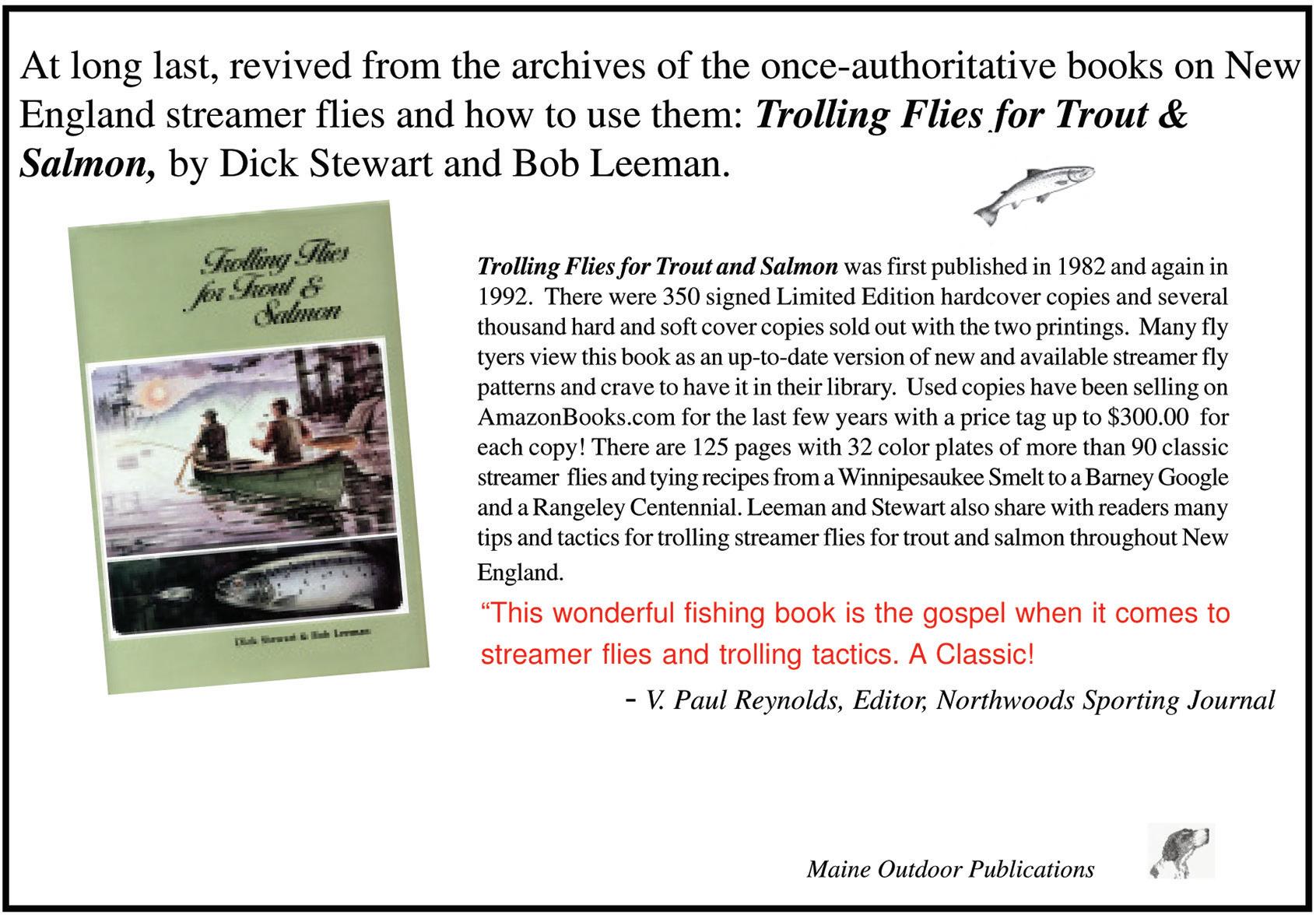
on his first Maine moose hunt. I have shared insight on how to best approach his hunt, so it ends in success. As he looks to fulfill his dream, I am anticipating the joy in his face and his son Zander’s when they connect with a quality bull. That magic moment will live forever in their memory banks and is part of what makes the Maine moose hunt so special.
Wishing all of you lottery winners a successful hunt!
Pan-seared Moose Heart with Maple Bourbon Sauce
Prepping the Heart
First Rinse the heart. The blood left in the heart can add an iron-like taste to the meat if it isn’t purged. To do this, you simply put the valves under cool, running water, gently squeeze, and wait until the water runs clear.
Now trim the heart. Start by trimming away the top part of the heart that contains the valves, arteries and veins, and the hard fat on the top.
Now you can slice the heart right where you see the bottom chambers naturally divided. Inside you’ll find a lot of connective tissue that you can trim away. Just make lengthwise cuts through the heart to create several slices of meat. You can cut them into smaller, bite sized morsels, but you don’t have to. It’s really up to you. About 1/4″ to 1/2″ is about the right thickness to cook it.
the next evening) to cook.
Ingredients
1 moose heart
6-8 cloves of garlic, minced 1/4 C of butter (4 tablespoons)
Season heart to taste with WildCheff Sagemary Sea Salt, WC Chef’s Grind Pepper and WC Roasted Garlic Powder.
Maple Bourbon Directions
After you’ve prepared your deer heart; place onto a large plate, drizzle olive oil over heart to coat, and season the heart with WildCheff Sagemary Sea Salt, WC Chef’s Pepper and WC Roasted Garlic Powder. Melt 1/4 cup of butter in a cast iron skillet. Add the garlic and the seasoned deer heart pieces to the skillet with the melted butter.
Turning once, cook heart pieces in butter over medium high heat for about three minutes per side or to desired doneness. Remove heart from pan and set aside. Add ¼ cup of maple bourbon to pan and cook while stirring until alcohol burns off. Pour sauce over pieces of heart to serve.
Serve with your favorite sides – mashed potatoes, candied carrots.

$24.95
Send a check for $29.95 ($24.95 plus $5.00 for postage) along with this ad, to Maine Outdoor Publications, 51 Branchview N., Ellsworth, ME 04605
Some feel that the blood can add an iron taste to your meat. To remove this taste after cleaning it out and slicing it up, you can place it in a bowl of water with a couple teaspoons of sea salt overnight. It will be ready in the morning (or
WildCheff - Denny Corriveau is AwardWinning Native American Game Chef. He is a Wild Game Evangelist and a nationally recognized trendsetter and pioneer for preparing wild game. He is also the National Game Chef for TenPoint Crossbows. You can learn more @www.wildcheff.com or visit him on Instagram @ thewildcheff
(cont. from pg 63)
install a floating fish trap at the exit of the fishway, to accommodate alewives, cull any invasive fish, and to collect data on migrating landlocked salmon.
Today the longest denil fishways on the east coast at the Woodland and Grand Falls Dams are in a state of severe disrepair. Alewives are still making it through these old relics, but they are on the verge of collapse. But help is on the way! Through a joint funding partnership made up of the two Passamaquoddy tribes, Federal, and state agencies, and NGOs, the plan for a modern fish lift to be installed in the Woodland dam in 2025, and a half mile fish run-around fishway for the Grand Falls power station in 2026, are estimated to pass 24 to 26 million alewives up the main stem of the St. Croix River, and then to disburse up the east and west branches. It is hypothesized that the alewife runs will reach these numbers in 20 to 30 years after the completion of these two historic projects.
What does this mean for the numbers of alewives projected to be in Grand Lake Stream in the future? It is estimated that 6 to 8 million alewives will make their way to the lake spawning acreage located above the West Grand Lake dam. If this happens the stream will be inundated with alewives in the month of June and the once iconic landlocked salmon fishery maybe changed forever.
Remember, change is inevitable. But this change maybe over the top! But hey this is the world we live in! Stay tuned!

(cont. from pg 65)
That evening our graduate and his dad went fishing on Little Round Pond, they found a spring hole and had some great brook trout fishing. In fact, the son said it was the best fishing he ever had in his life! They also said a moose came out feeding on the pond that evening and it wouldn’t move no matter how close they got.
Day four – we portaged our gear around the falls and negotiated some tricky drops just below the waterfall. It was exciting and we bumped a few rocks but no one had any serious problems. As we continued downstream, it was class I and II rapids with intermittent stretches of quieter moving water. There is a significant drop under the bridge on Allagash Stream that I had intended to scout but it snuck up on us and we didn’t have time to get to shore before going under the bridge. We all made it under the bridge without any problems.
The stretch of stream from the bridge to Chamberlain Lake was the only section of the waterway that I had never paddled before. It is a very nice section of stream with novice level rapids and easy moving water.
Eventually, we came to the flatwater of Chamberlain Lake. We took a break on the old railroad trestle. We were met by a south breeze that was stronger than I thought it was going to be. We managed to paddle at an angle to the wind and made it over to the tramway. My guests were amazed by the size of the tramway steam powered drive mechanism and two behemoth locomotives sitting a couple hundred
feet from the shore of Eagle Lake. The Tramway Historic District is definitely worth the visit if you are in the area.
When we came out of tramway cove, we were met by a stiff wind that was blowing right in our face. We went ashore to wait for the wind to die down. I checked my InReach for the weather forecast- which wasn’t good. The wind was not going to die down until the next day. We decided to paddle onto Lock Dam against the stiff breeze. We accomplished the threemile paddle in a couple hours tired but otherwise no worse for wear. No trip is complete without some adversity or as my son likes to say- type two fun.
We set up camp at Lock Dam Campsite. I cooked a hearty meal of baked beans, ham, coleslaw, and fresh cornbread that was cooked in the reflector oven. My guests caught a few brook trout below the dam that evening.
The next morning, we
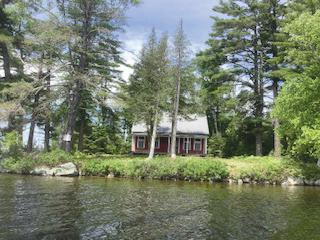
had an oatmeal and fried cornbread breakfast for our last meal on the trail. It rained during the night so we had the pleasure of packing our gear up wet. The journey down Martin Stream to Eagle Lake was an easy paddle with just a few obstacles to avoid. Once we hit Eagle Lake, we had a couple mile paddle to Indian Stream. We walked our canoes the 1000 feet up the stream to the takeout at the bridge. It was a great trip through the most remote and restrictive section of the Allagash Wilderness Waterway – it was an adventure I am sure that my guests will not soon forget.

Matt LaRoche is a retired Superintendent of the Allagash Wilderness Waterway, owner of Maine Woods Guide Service and an avid outdoorsman. He can be reached at 207695-2877 or at matt.laroche2877@gmail.com. See www.mainewoodsguide.com

(cont. from pg 62)
God’s coloring book, He stays between the lines. To me, rainbows evoke some of the same feelings but are more fleeting. One thing is sure; rainbows attract attention and are most always acknowledged by, “Look there’s a rainbow!” Sunrises and sunsets are predictable, rainbows are surprises. When they appear at special times their greatness resonates. My oldest son was married on the shore of our pond, right in front of our camp. As the ceremony closed, there appeared a brilliant rainbow, to put a final blessing on the ceremony.

Bob writes from the shores of Craig Pond where he and his wife have raised three children and ten grandchildren. He is an avid outdoorsman and former Maine Guide. He can be reached at Craigponder@myfairpoint.net
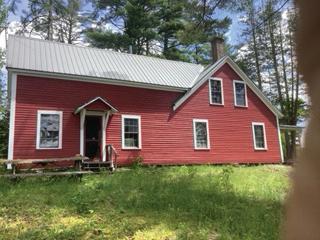
Location:Maine, Oxford County, Upton Coordinates:44.
A once in a lifetime opportunity to own a piece of Western Maine History! Historic 1.5 acre Pleasure Island is located at B-Pond, a 471 acre, 110 feet deep, cold water, spring fed pond, boosting wild native brook trout, and landlocked salmon.
With historic catches of Brook Trout in the 5 pound class and salmon 4 to 7 pounds, this location is a sportsman’s paradise. Once owned by the historic Oxford Fishing and Hunting Club, in addition to Lakewood Camps at Middle Dam, it has been under private/ protected ownership for the past 80 years. This is a very unique property, a private Island with no other camps on the pond. Deeded rights around the entire pond to the high water mark. Adjacent to Lake Umbagog National Wildlife Refuge, the historic Rapid River, and many high elevation trout ponds. In addition to hundreds of river and stream fishing opportunities.
Not a fisherman? The outdoor opportunities with this location are unlimited, on the water or adjacent lands. A very private family compound, seasonal rental, investment property, or your imagination can be your guide, the possibilities are endless. No deed restrictions, new owners can update with the amenities that are important to them.
The current cabin is a two story wood frame structure used primarily as a fishing camp. Four bedrooms, kitchen and dining area, large family room with fireplace. One bathroom with shower, front porch to relax and enjoy the piece, tranquility, birds and wildlife, and of course the magical sunrise over C-Bluff.
Contact us for more details about this magical opportunity. Asking price $759,000 rickmills2140@gmail.com or 1-207-418-7907
(cont. from pg 55)
been shared and some that have not.
Michigan has some infamous bogs, too. Outdoor writer Betty Sodders has written about the fabled Gogomain, a 25-mile square cedar swamp at the east end of Michigan’s Upper Peninsula. Betty writes: “Historically, the


swamp became infamous from reports of marauding slasher bears to unstable ground bordering on quicksand that could virtually swallow up a hunter daring enough to traverse its interior. Horror stories, many most likely exaggerated, caused folks to avoid the big swamp.”
According to Betty, the big swamp is home to upwards of 1,200 wolves
who take their share of Michigan whitetails. Does that make you wonder how hungry Maine coyotes find fertile hunting ground in our cedar bogs that are often wintering ground for whitetail deer?
The Great Heath in Washington County is Maine’s most high-profile bog. This protected ecoreserve comprises 5,681 acres. Geologically, it is a unique area. Called a “peatland, the Great Heath combines what is known as coastal plateau bogs and inland raised bogs.
It is home for some rare wild plants, not the least of which includes: Bog Bedstraw, Canada Mountain Ricegrass, and Jacob’s Ladder. Much of this famous heath is bordered by eskers, not unlike the Whale’s Back on Route 9, not far from the Middle Branch of the Union River, itself a bog of sorts.
On a black rainy night in November in the 1950s, my deer-hunter father got lost overnight in this area. Disoriented, he eventually figured out his location by the sight of car headlights
off in the distance bobbing across this famous highway esker. After spending a long night in an overturned canoe that he found beside the river, Dad paddled his way down river and found his way back.
The borrowed canoe? I asked him that question. He returned it in time to its rightful owner. At least, that’s how the story goes.
Mane bogs are special. They do hold stories.

Welcome to Paradise! The thought of higher acreage and a beautiful home can be realized. This 149 acre parcel is complimented by a beautiful 5 bedroom, 2 bath home. This home is well set up with multiple heat sources some of which include cooling features as well. A generator hook up for added convenience is also included in the home. The basement








today. $198,000
T5 R7 Wels - Gorgeous frontage. Well-built 2BR with 3 full baths, a laundry, enclosed screen porch and open covered porch on Lower Shin Pond. Generated power & propane. $479,000
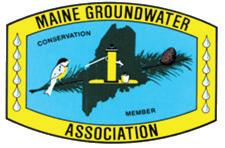



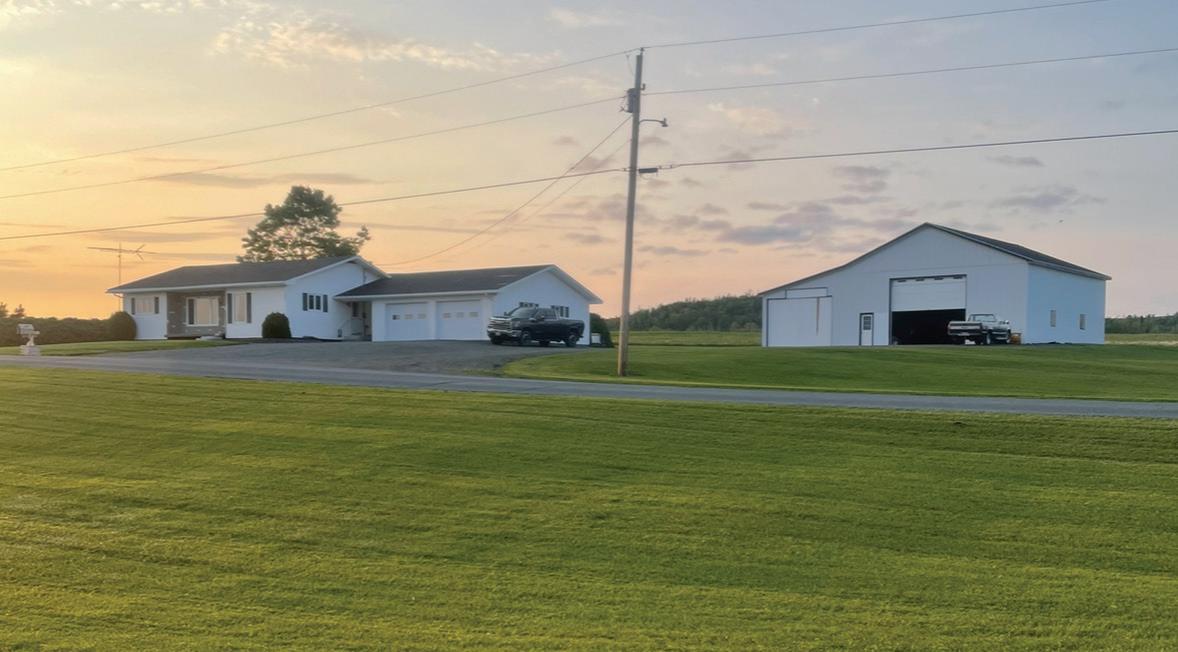


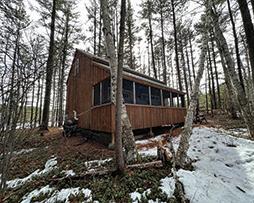
across the serene 905-acre Ebeemee Lake. Located roughly halfway between Milo and Millinocket, this 1.95-acre lot nestled on Russell Island provides access to all that Maine’s recreation has to offer. A tractor & trailer to transport items conveys with the sale. Septic plans, well, and additions have been approved. MLS#1583230 $179,900

40 Weld Rd, Byron ME: Once in a lifetime opportunity it an astounding spot! Just minutes away from Tumbledown Mountain, along the Swift River in a secluded tranquil spot, you will discover three furnished cabins along with a garage, shed, and out-buildings. Fully equipped for efficient year-round off-grid living with a well and two septic systems. Property is powered by gas, solar panels, and a generator shed. The main camp boasts 3 bedrooms, 1 bath and the two front cabins each contain 1 bedroom, 1 bath - one being open - concept living. Reside in the main camp and rent out the other two for additional income - currently being advertised and rented at $125 per night. MLS#1574474 & 1574475 $399,000
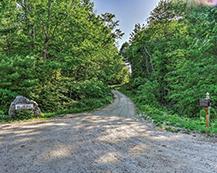
424 Sanborn Road, Acton, ME: Calling all golf enthusiasts, developers, and/or investors! Opportunities await you here along the Southern Maine Lakes Region! Whether you want to pursue a business venture as a fully functional 9-hole golf course or prefer to develop this exceptional 41 +/- acre parcel, the possibilities are

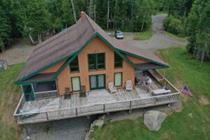




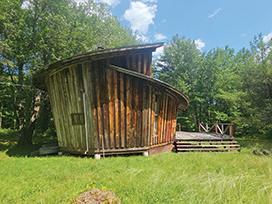
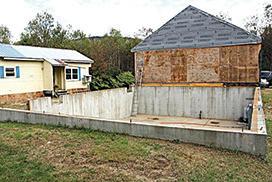

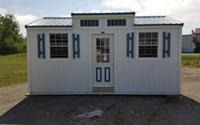
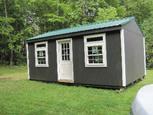

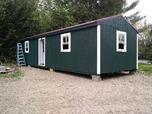



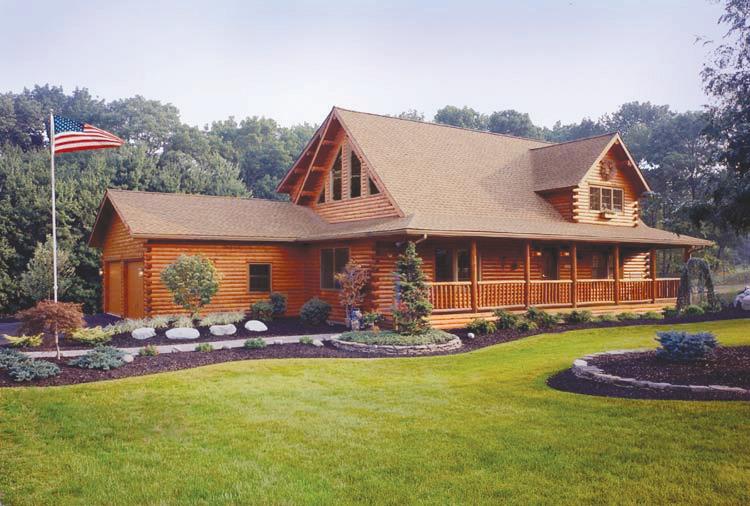

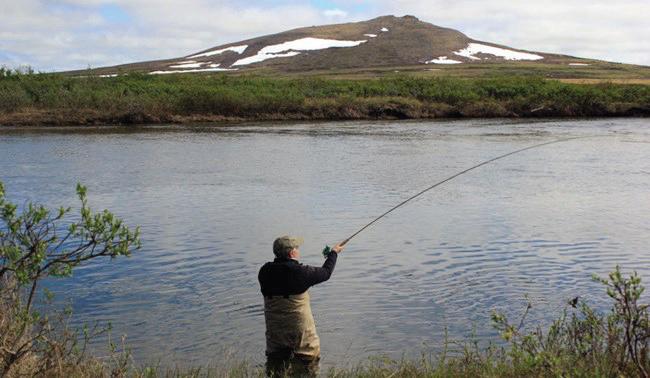

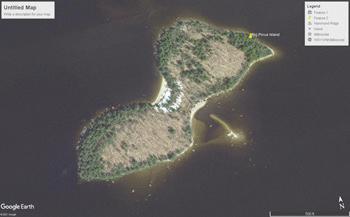





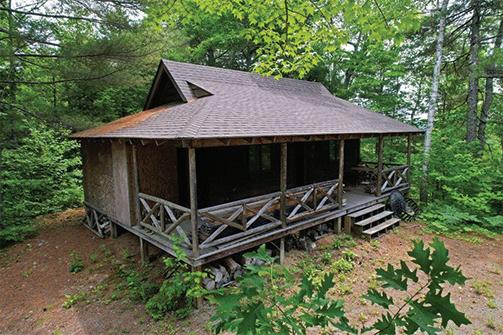




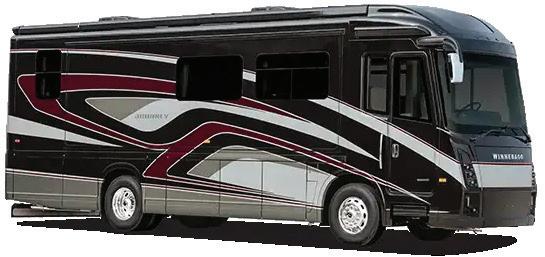
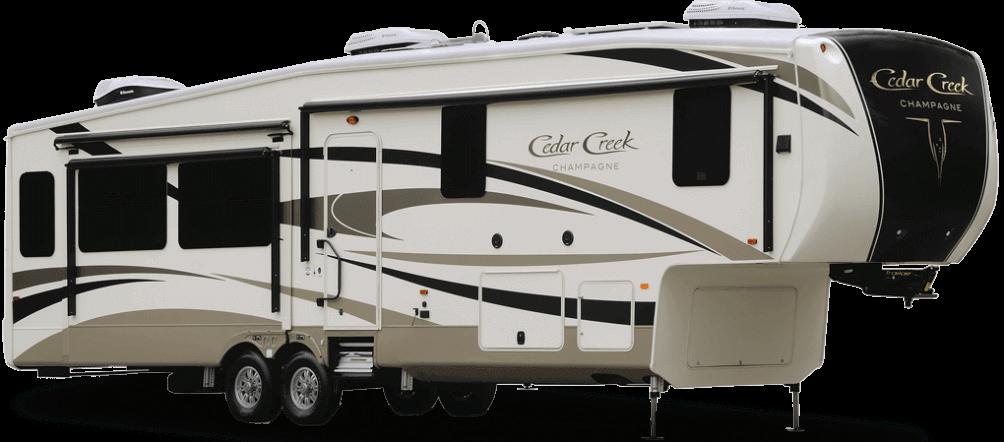


In these troubled and divisive times for our country, we at the Northwoods Sporting Journal remain proud to be Americans. We still stand for the National Anthem and thank our lucky stars that we live in the land of the free.
And we still salute our military men and women, who have served and continue to serve their country, here at home and in faraway lands. To them we owe our gratitude and appreciation for what they do, and for safeguarding our American way of life, which we value deeply.

